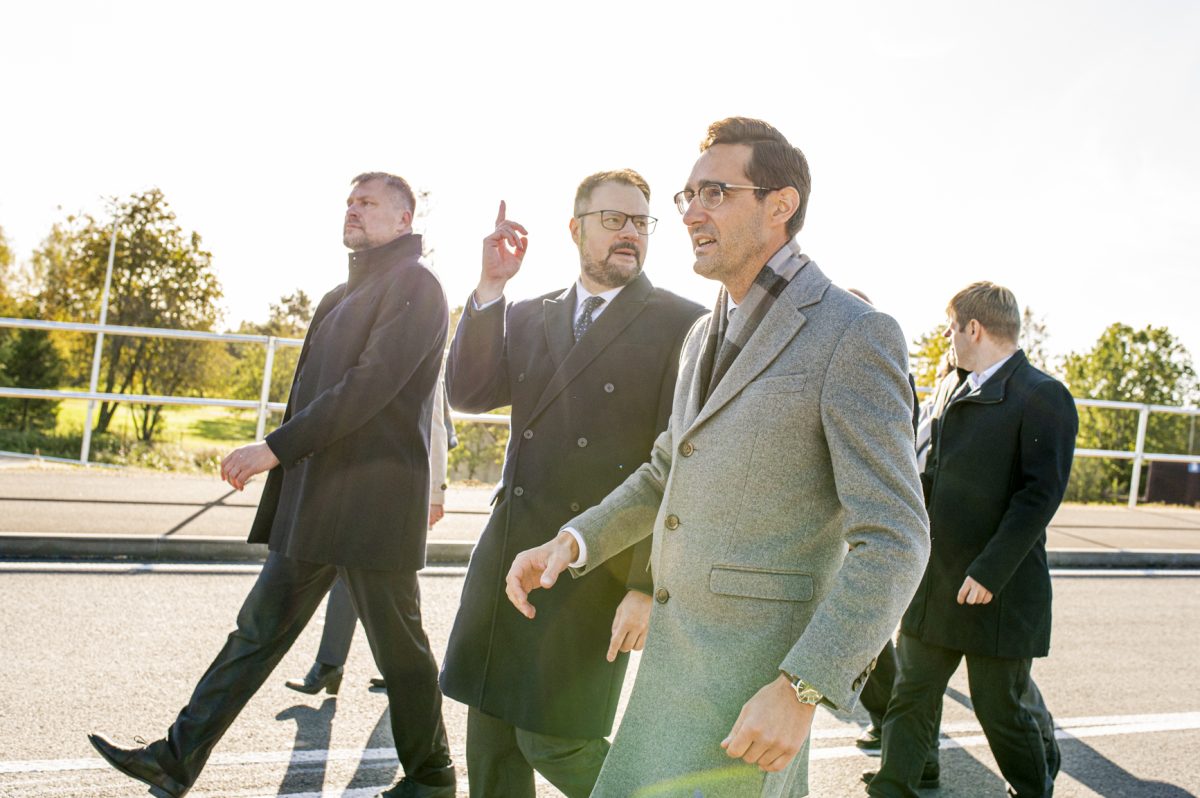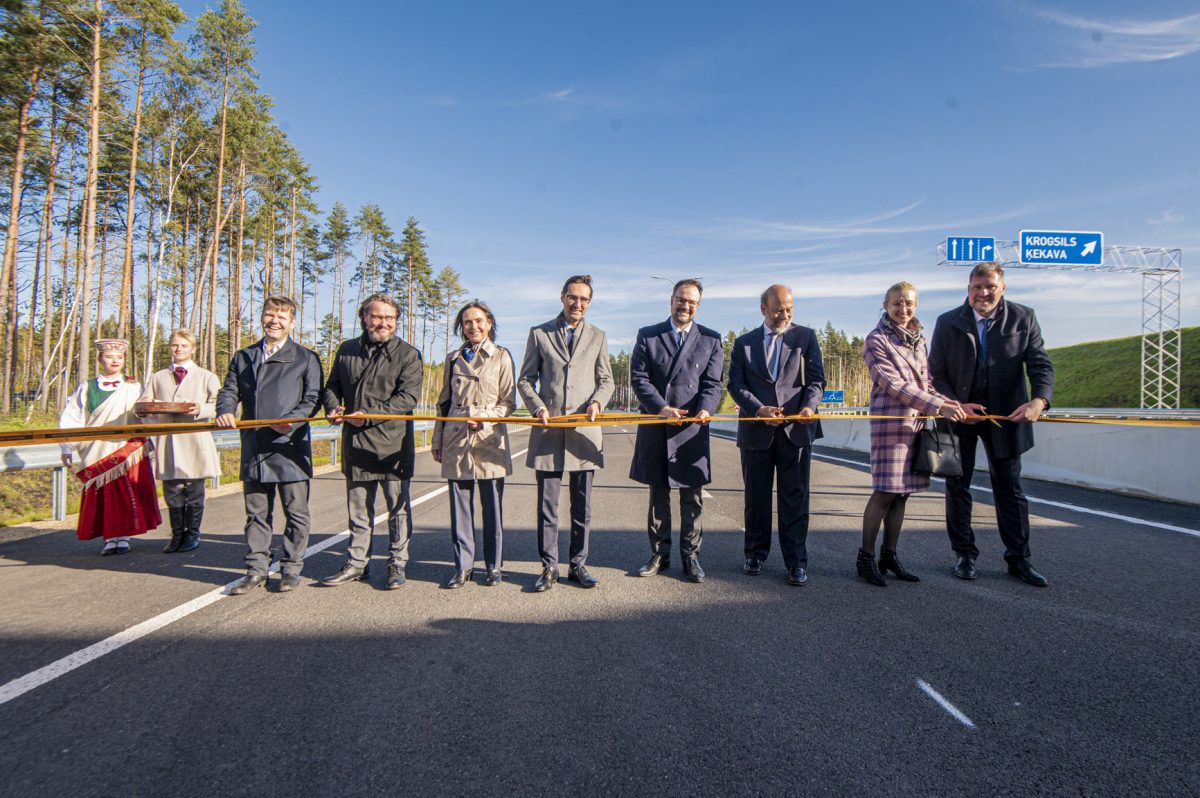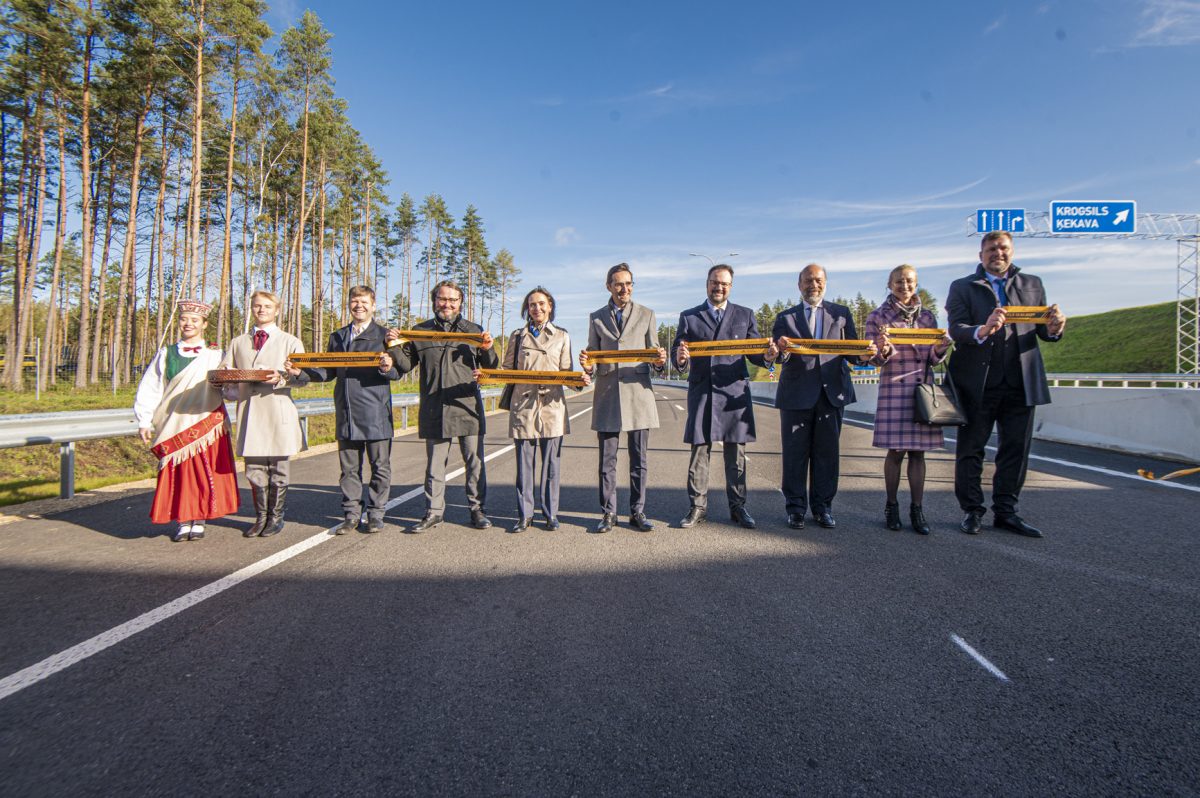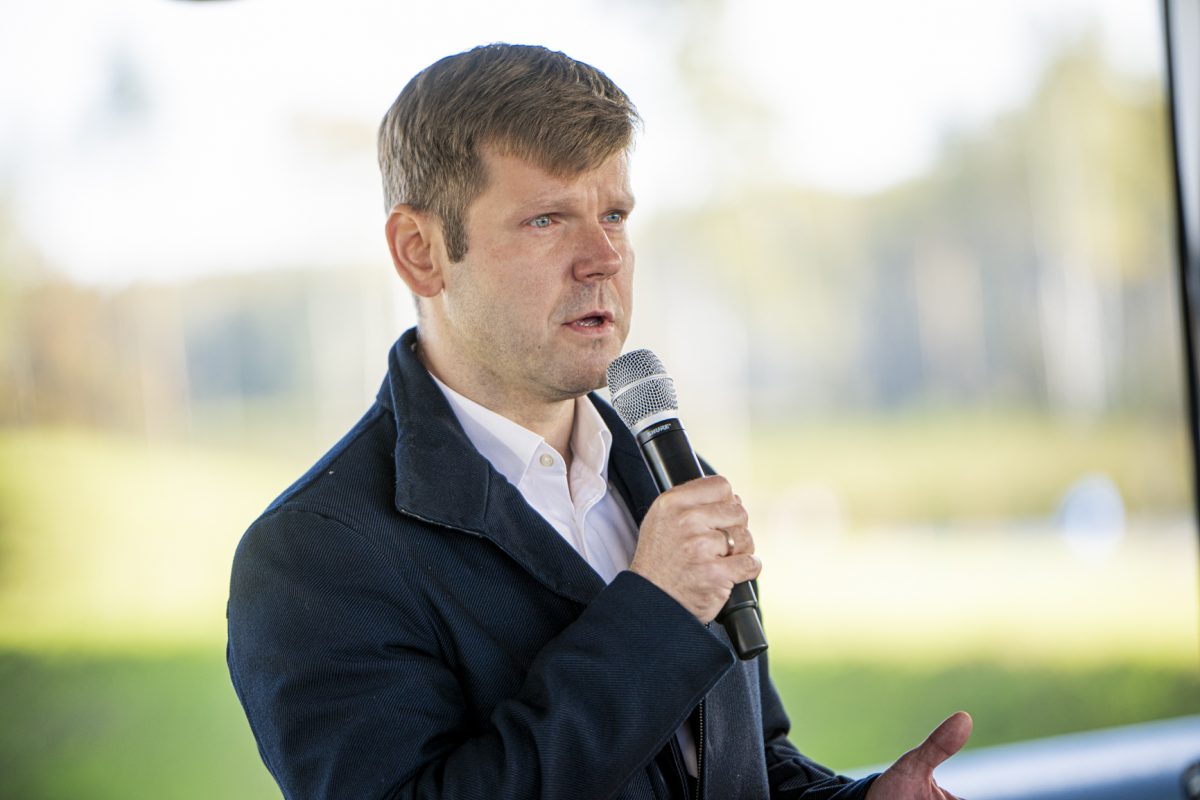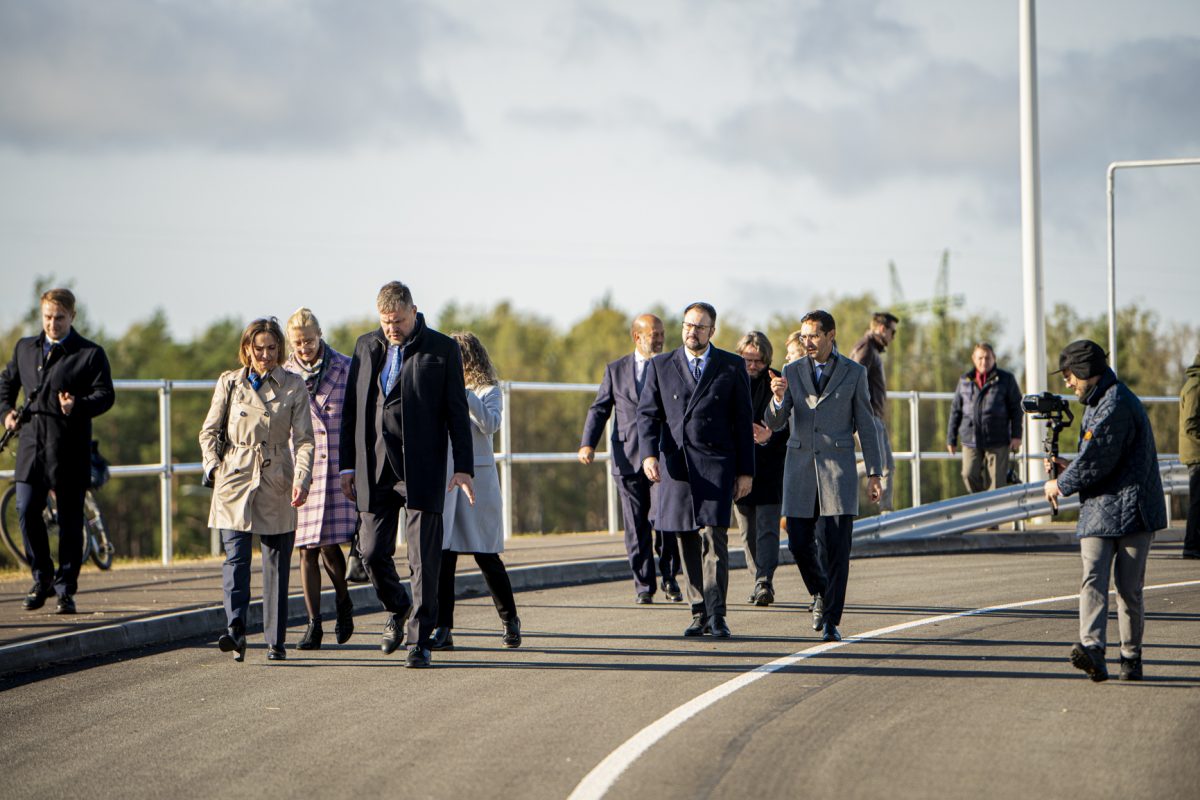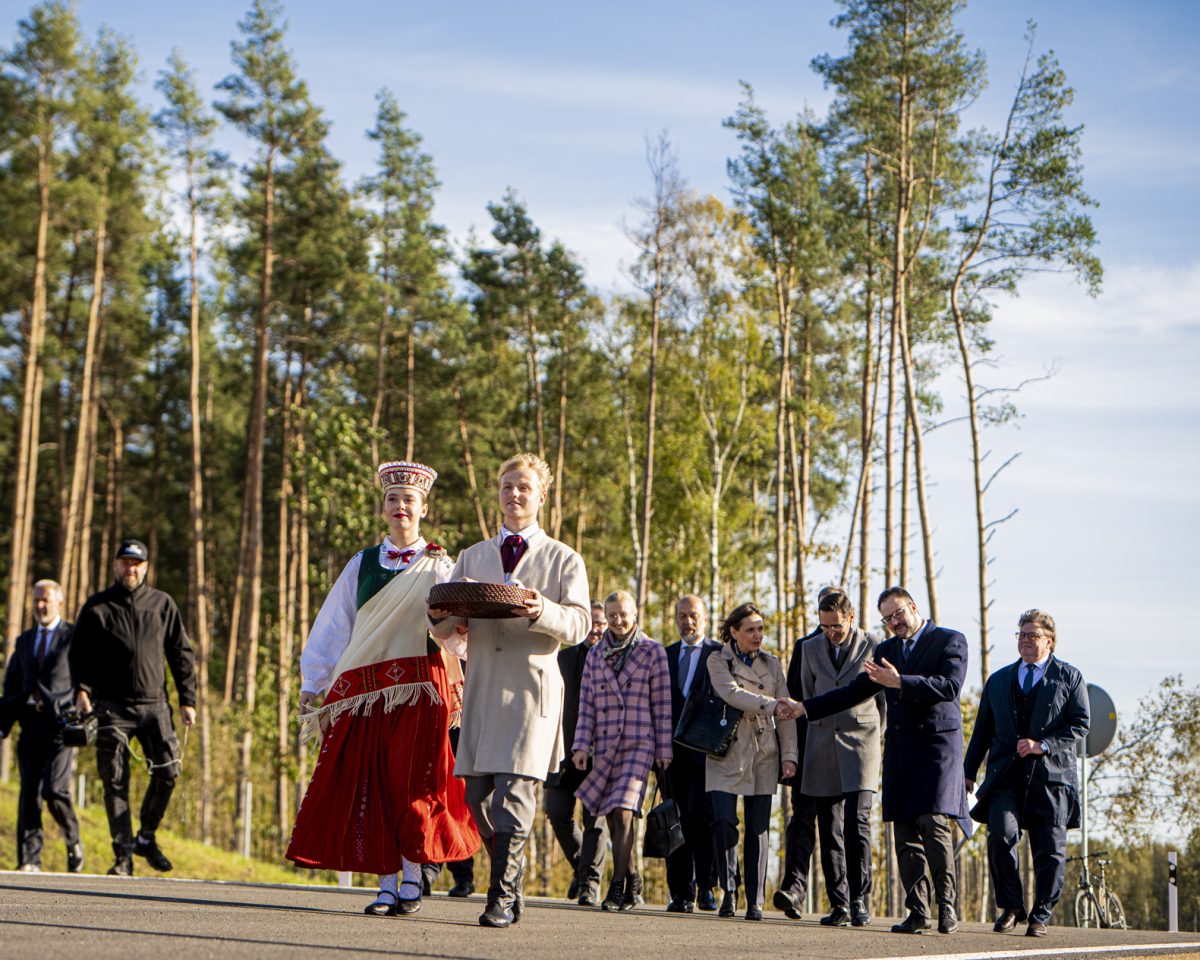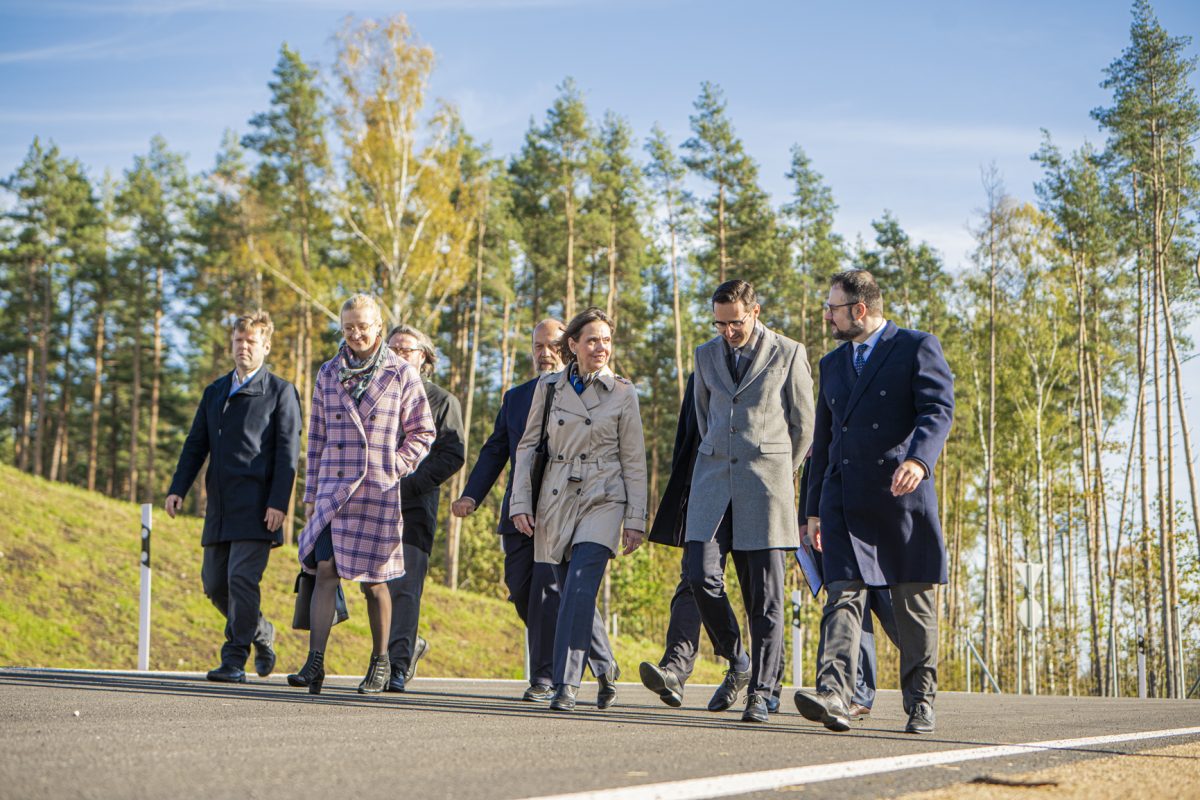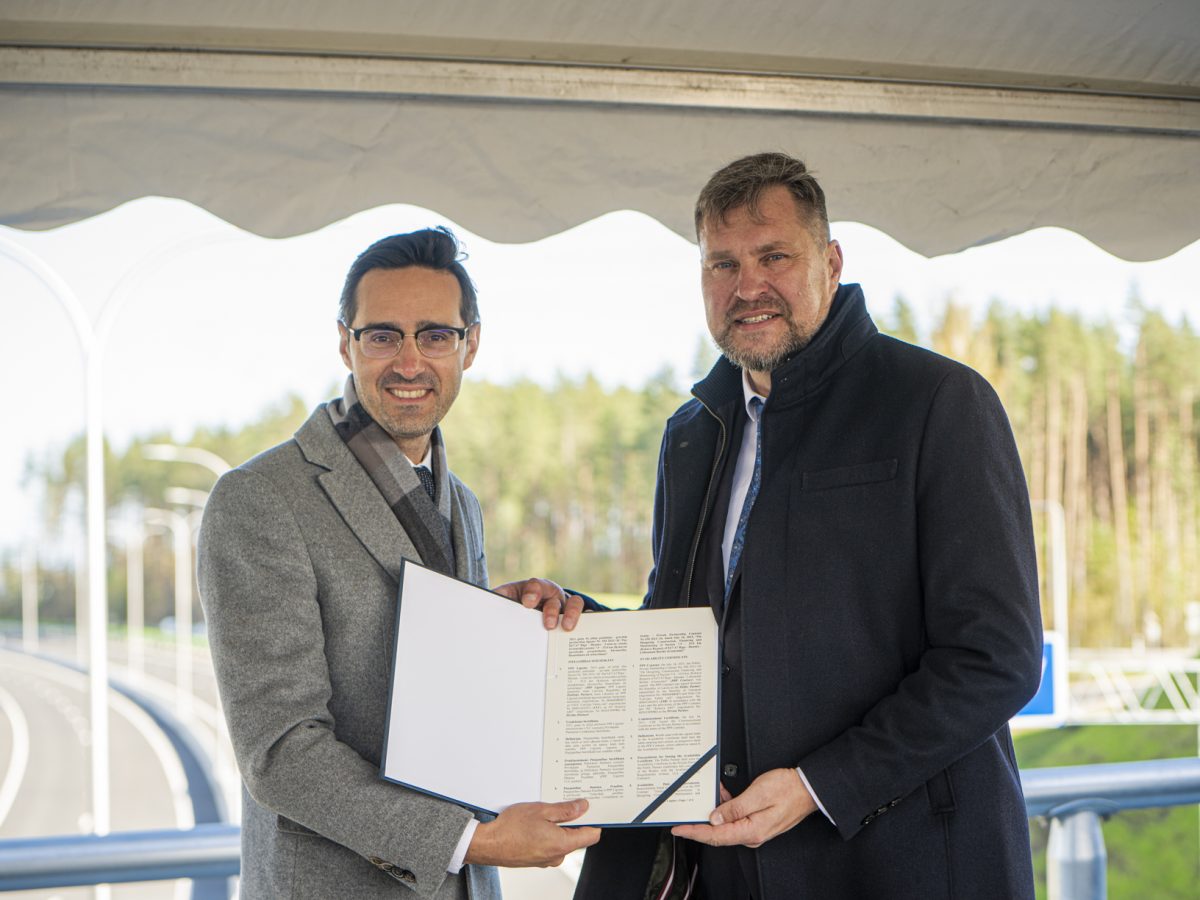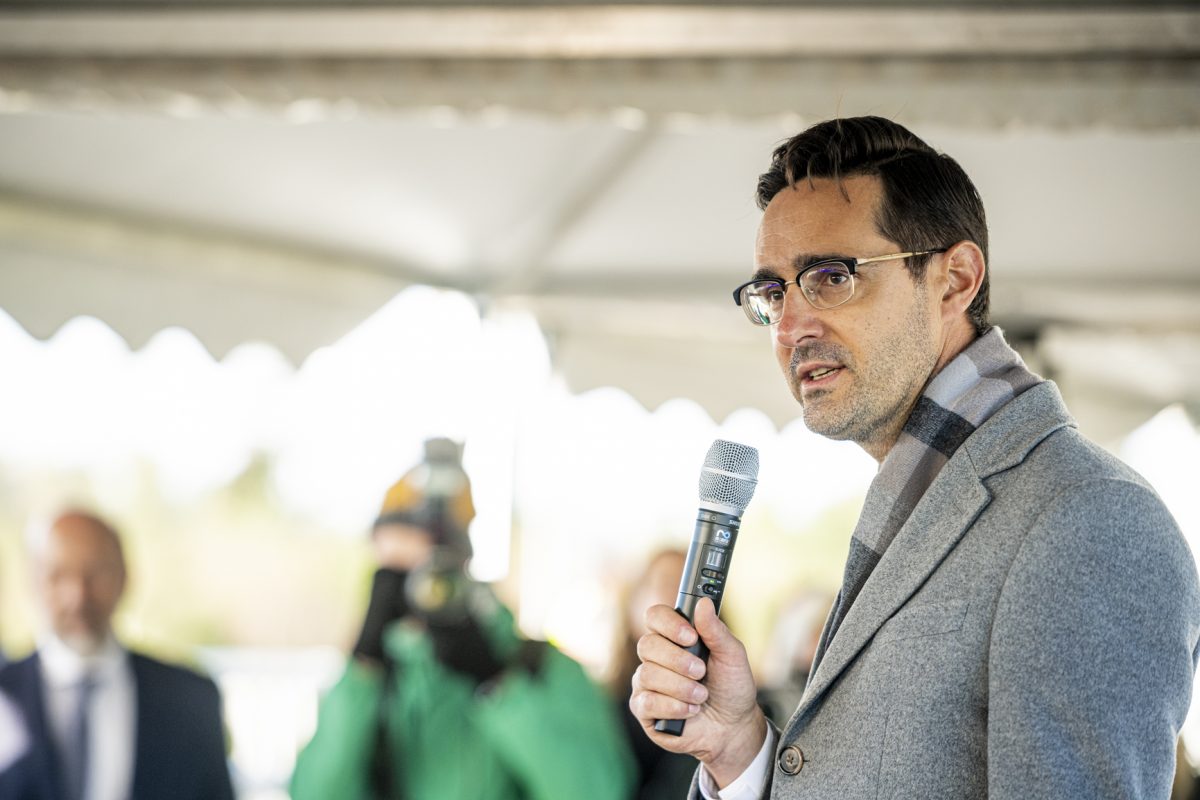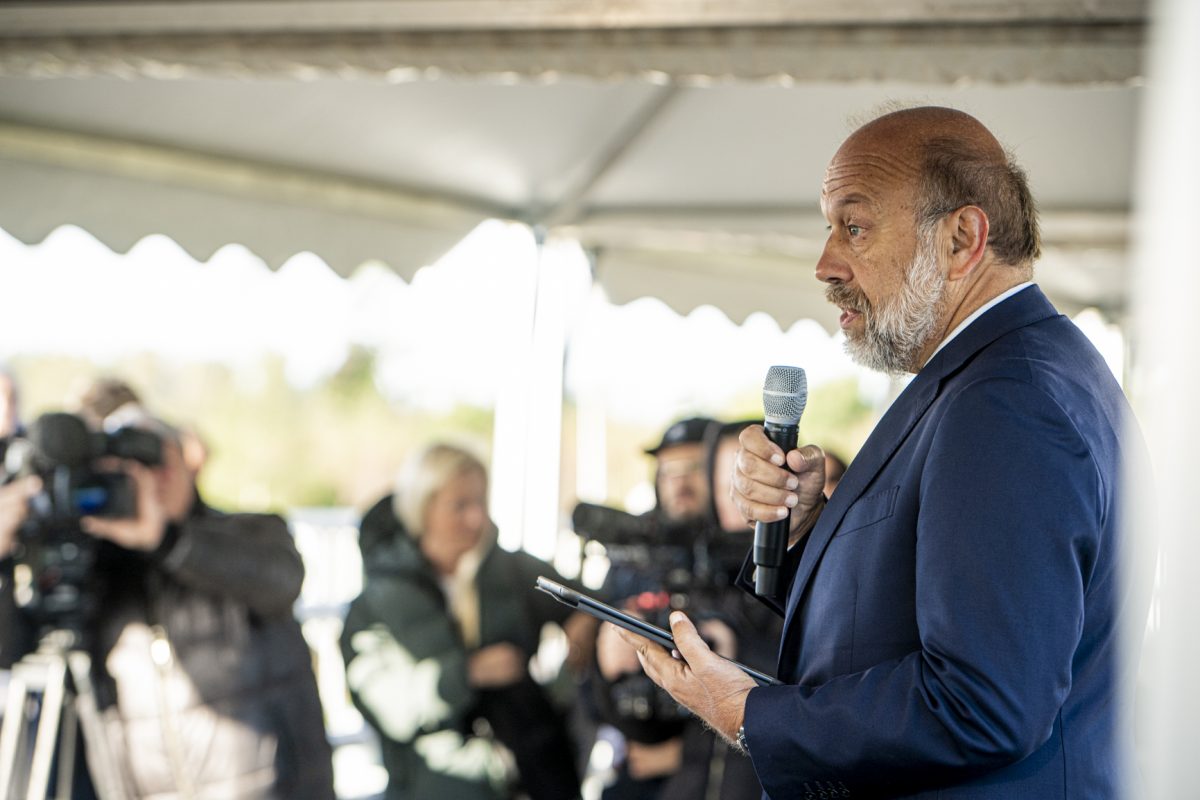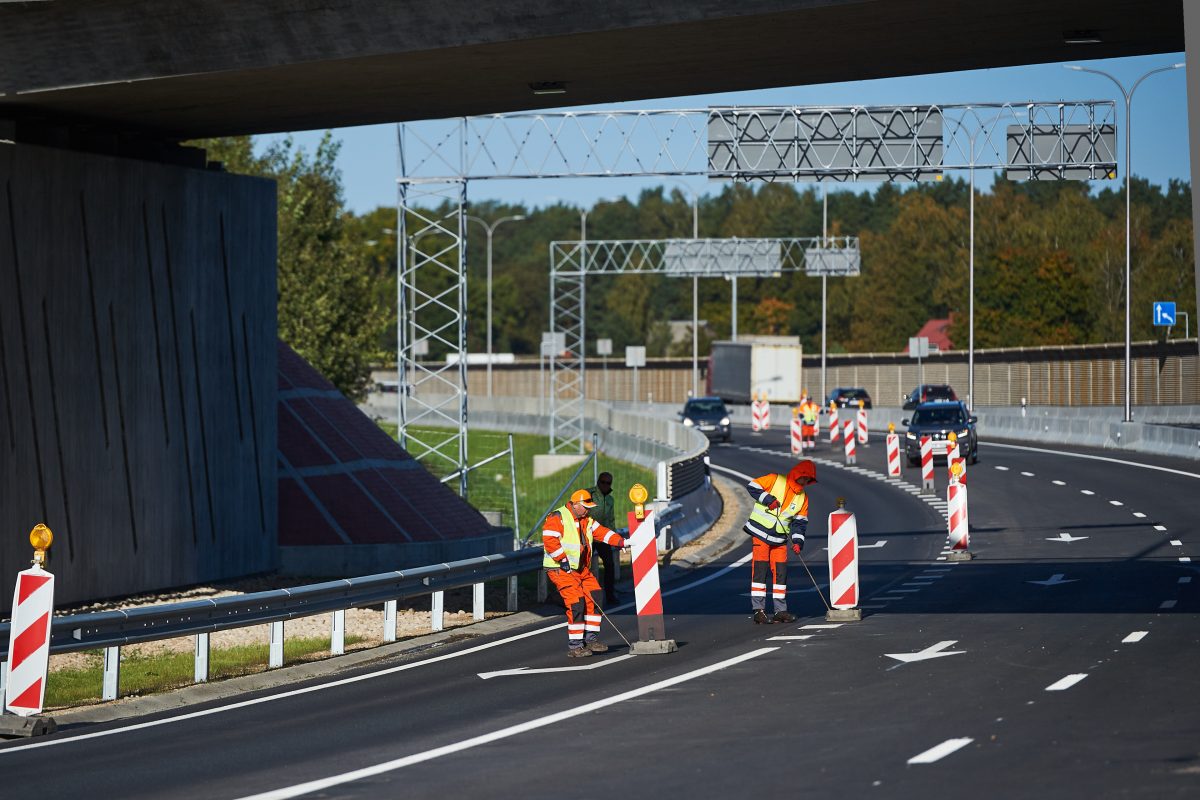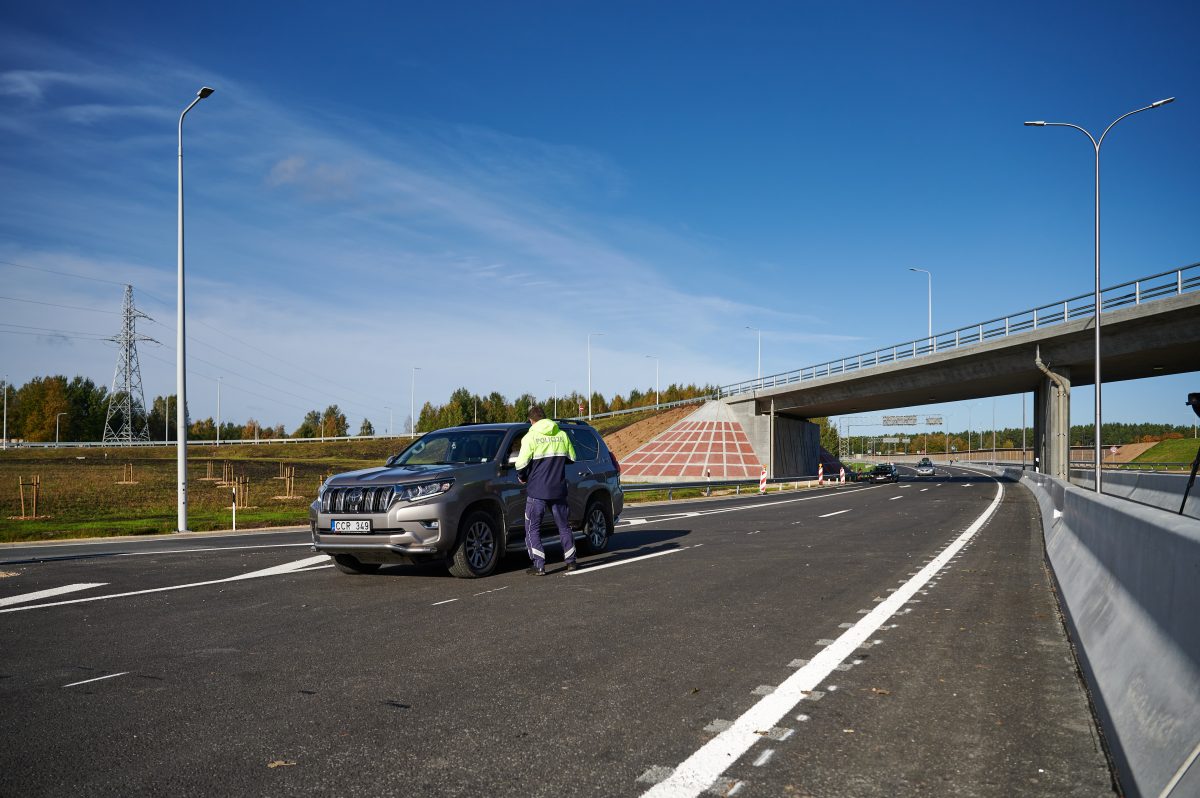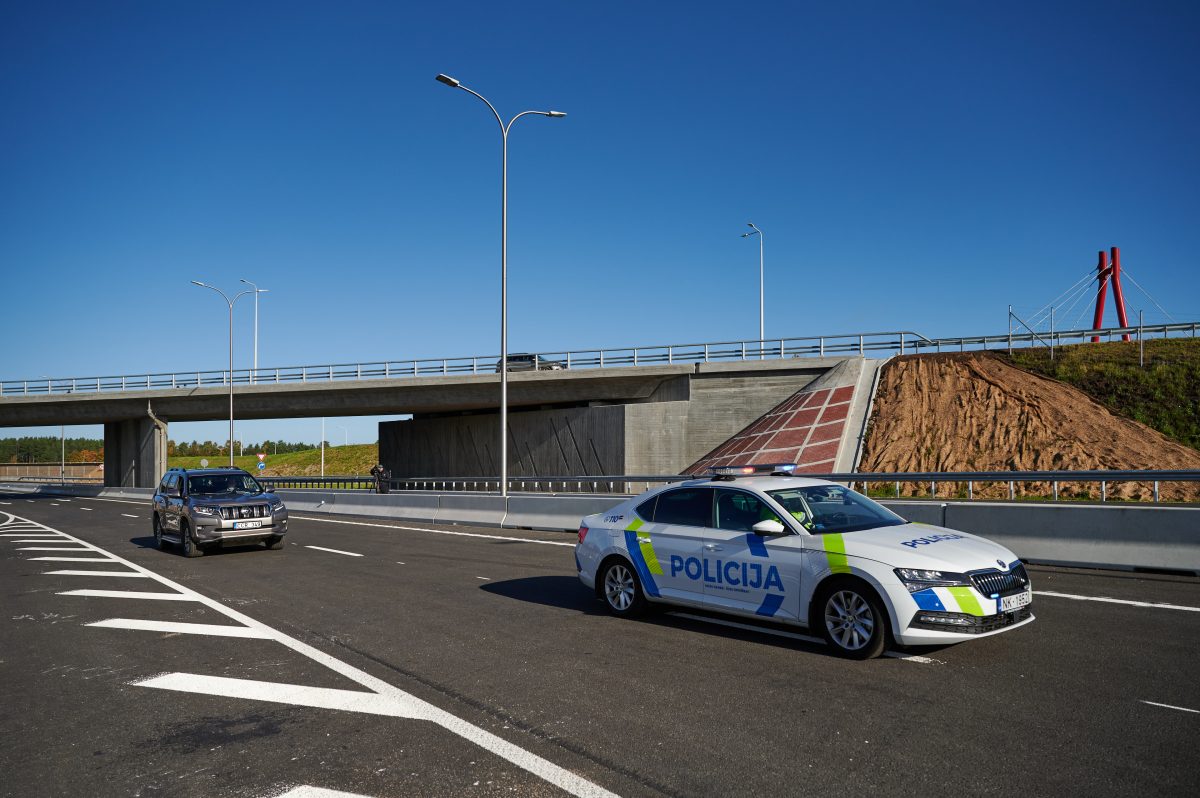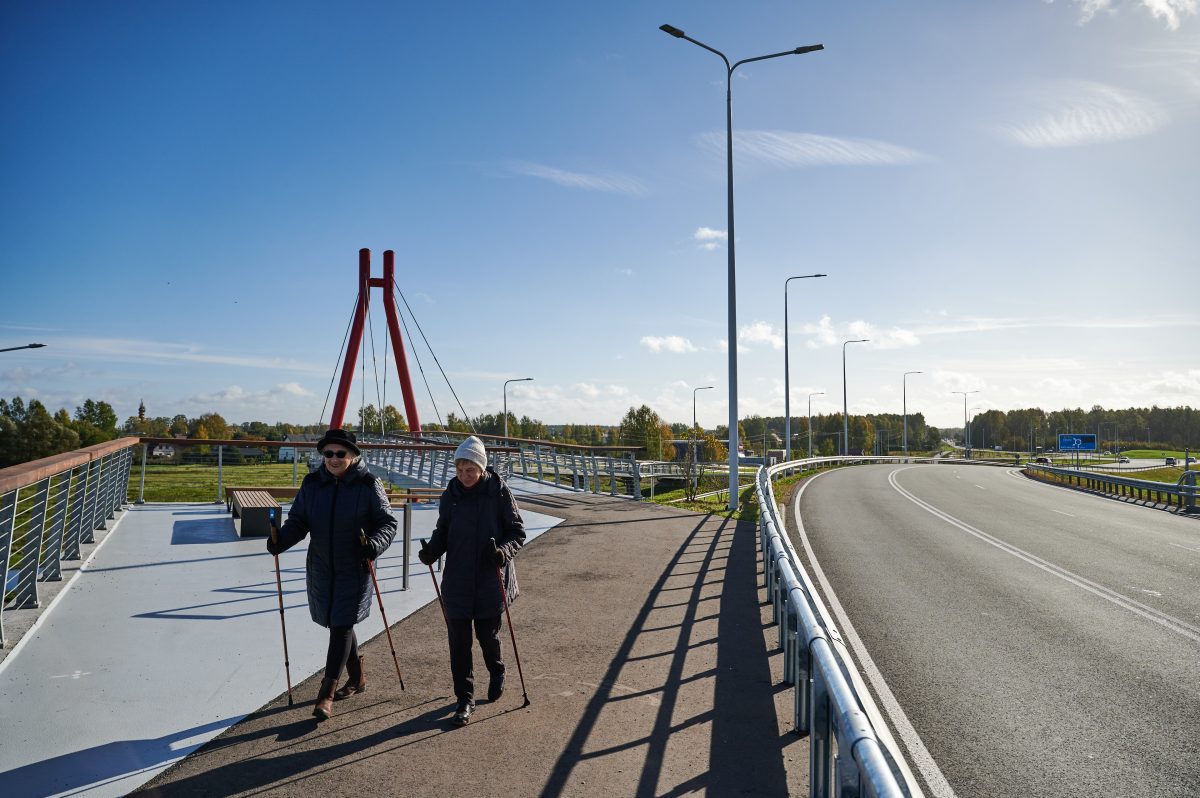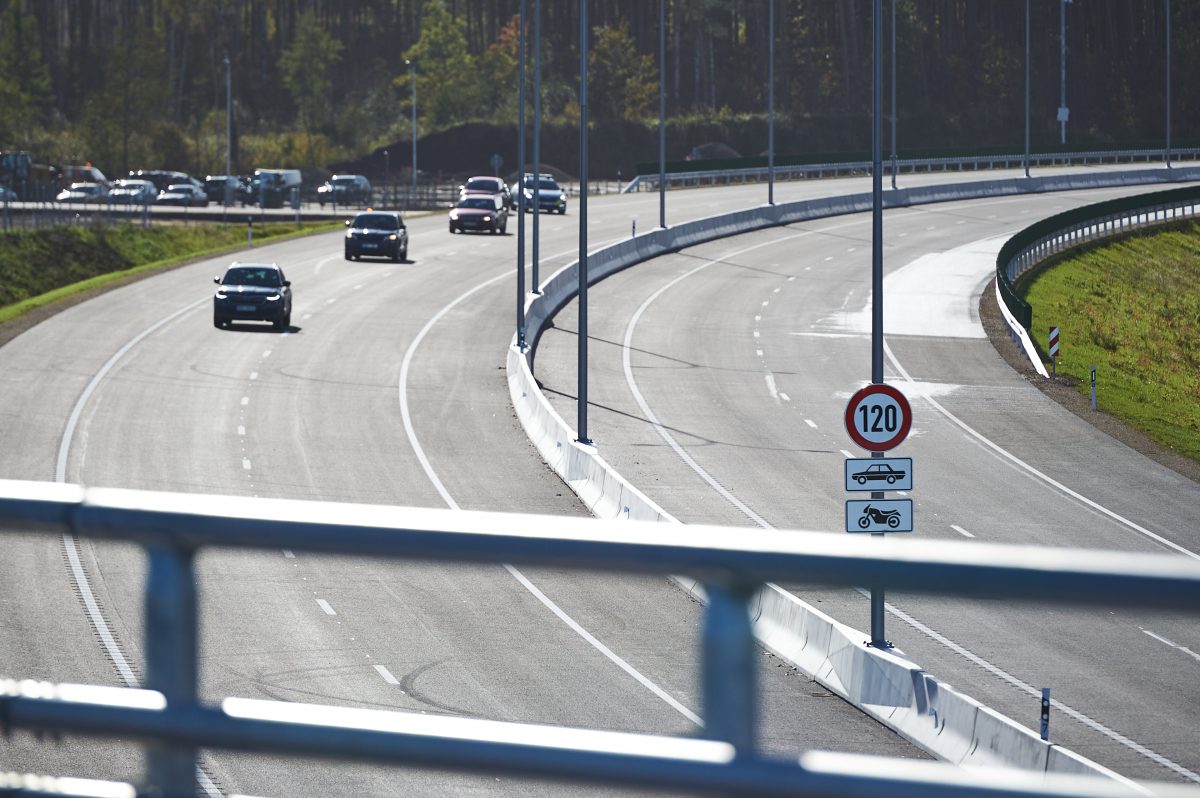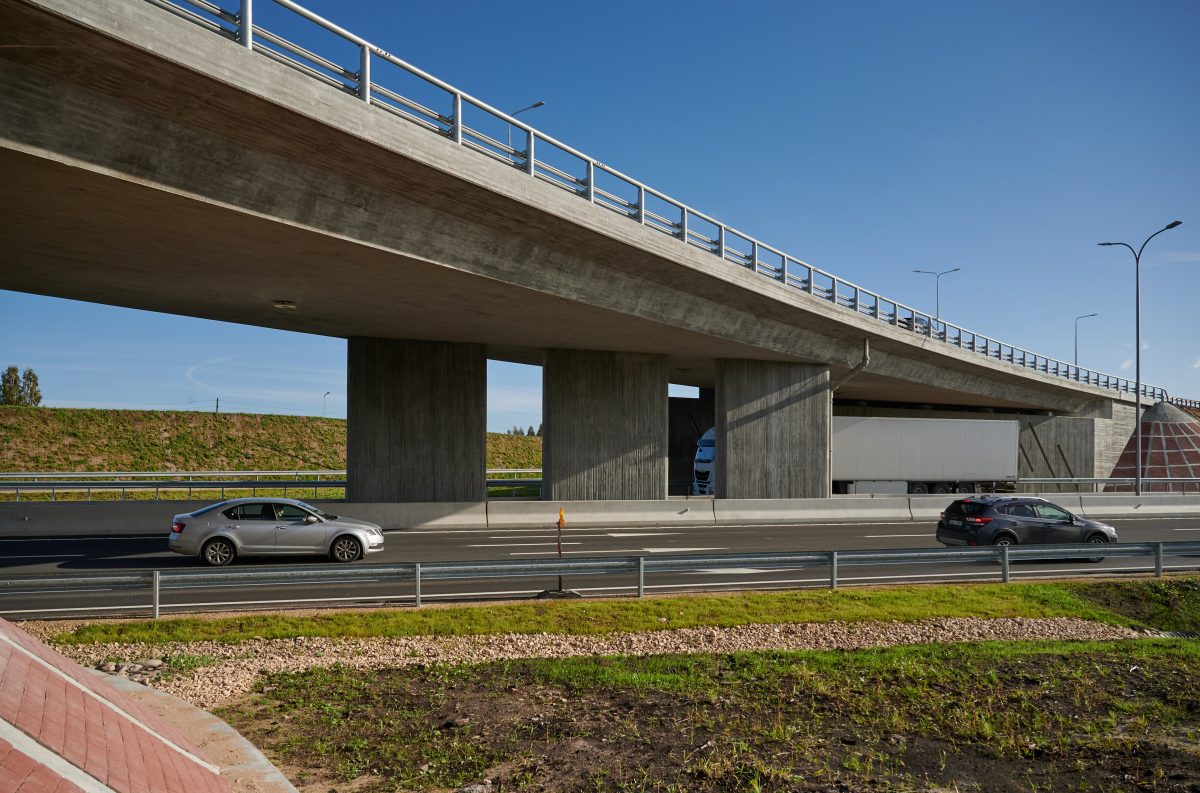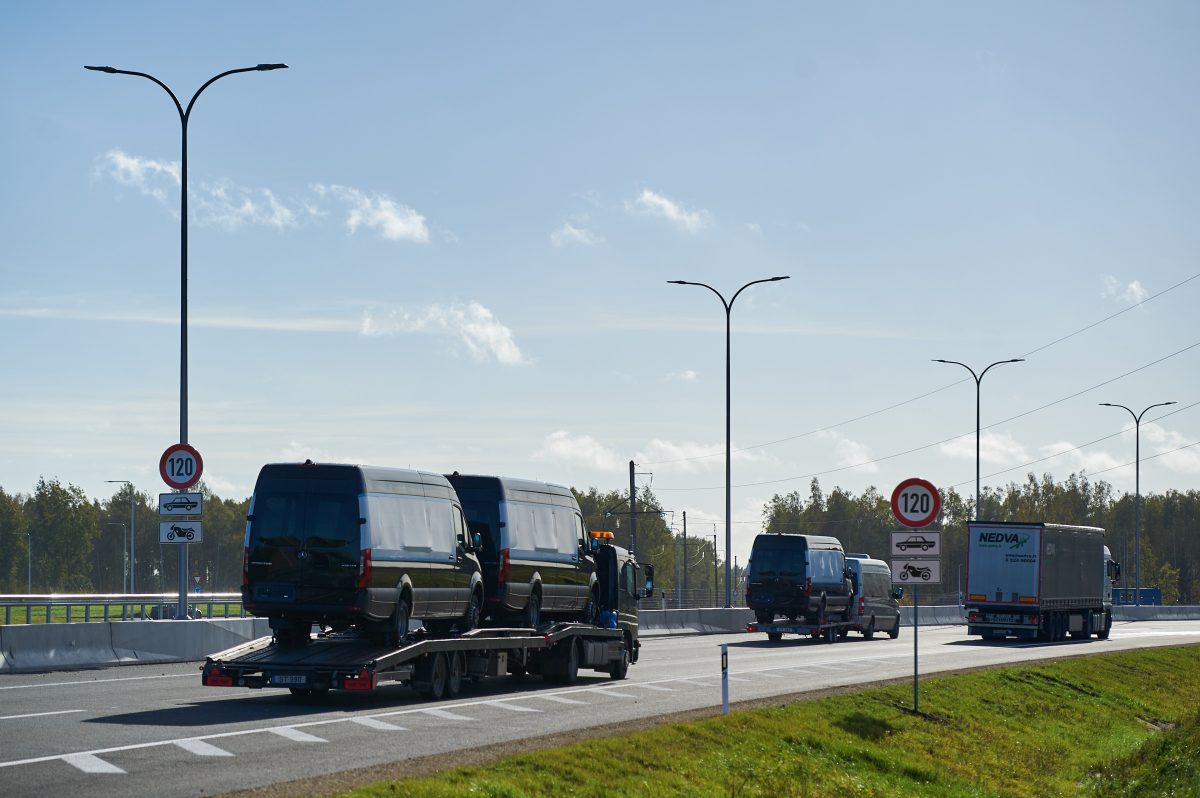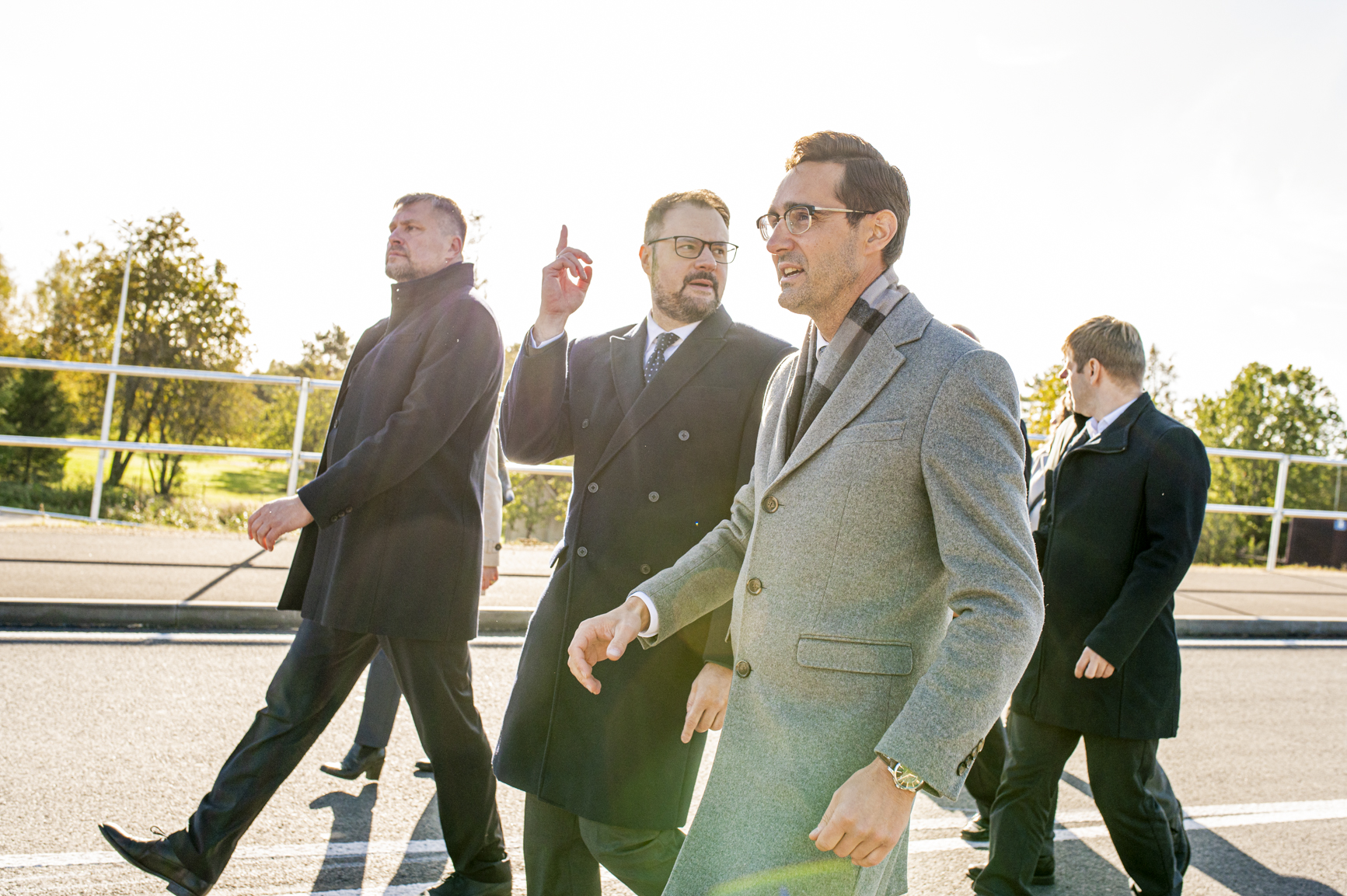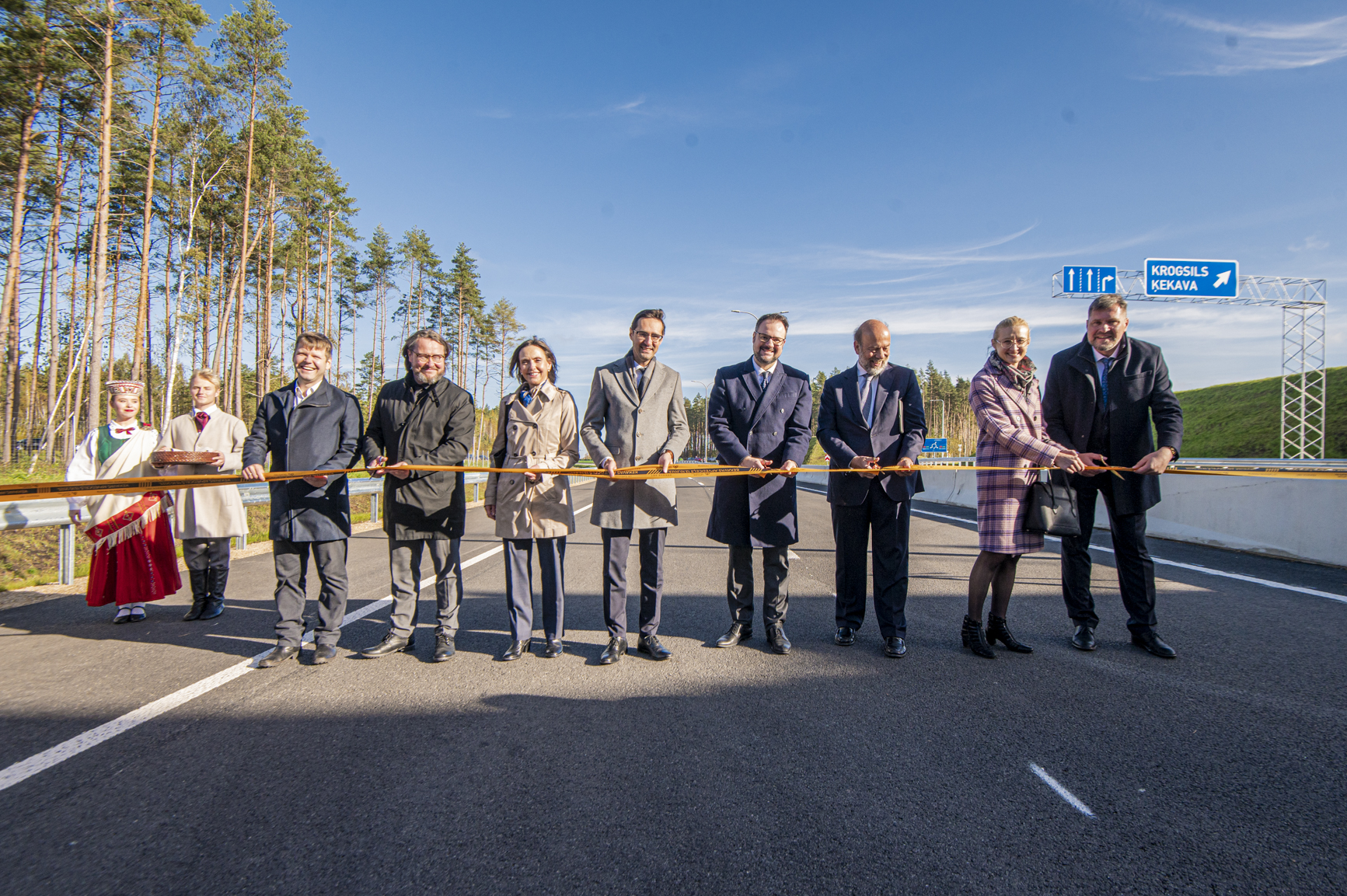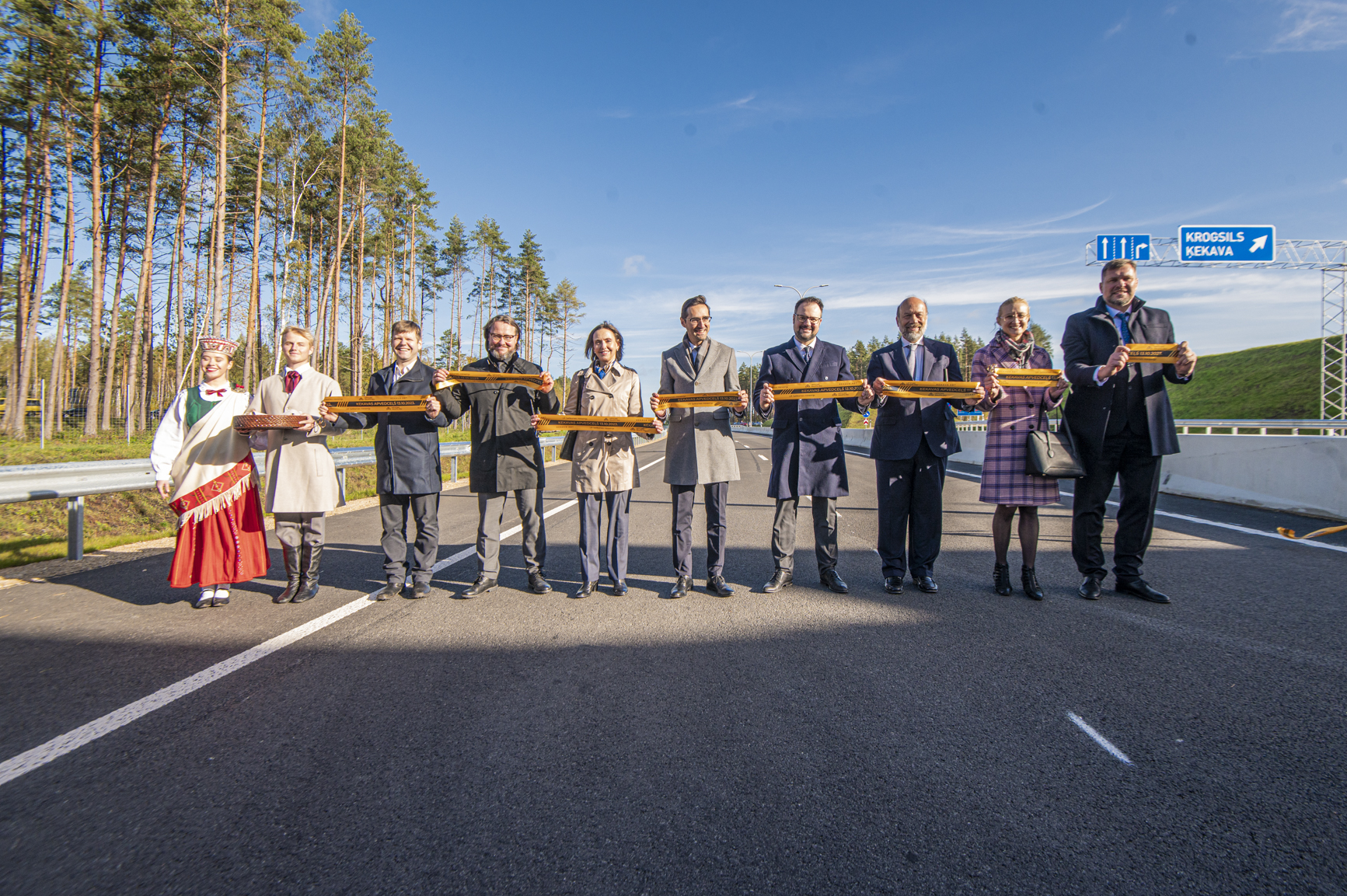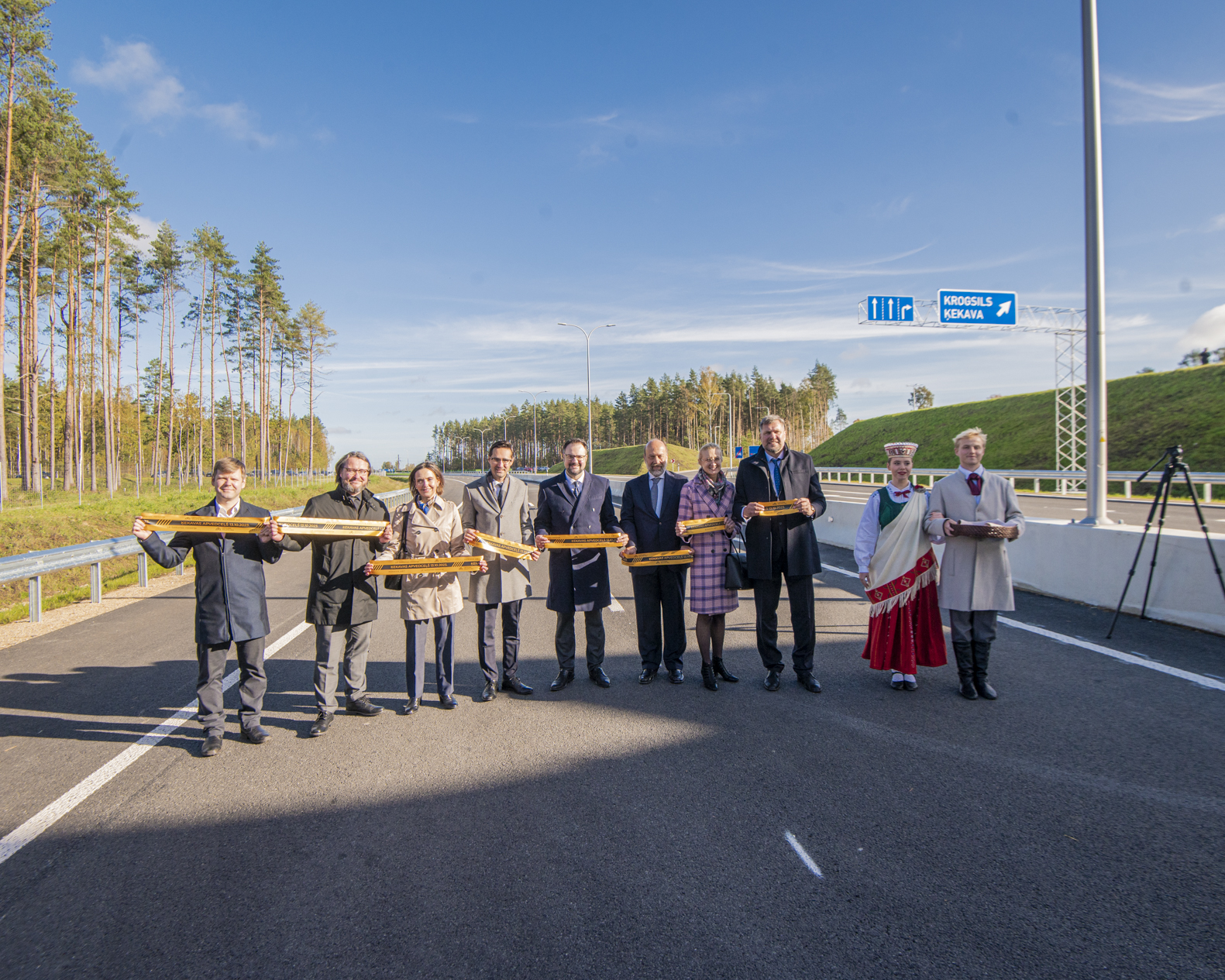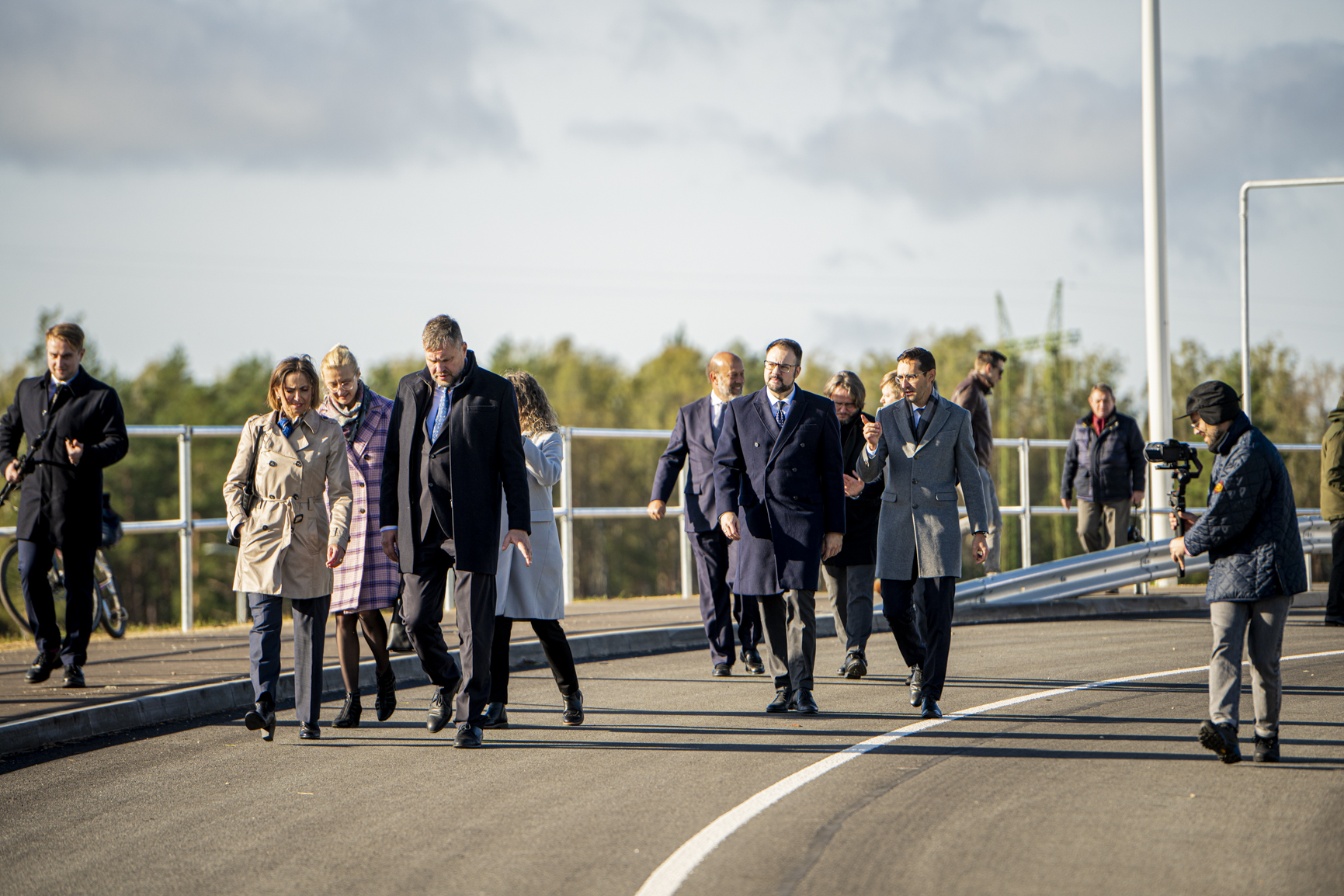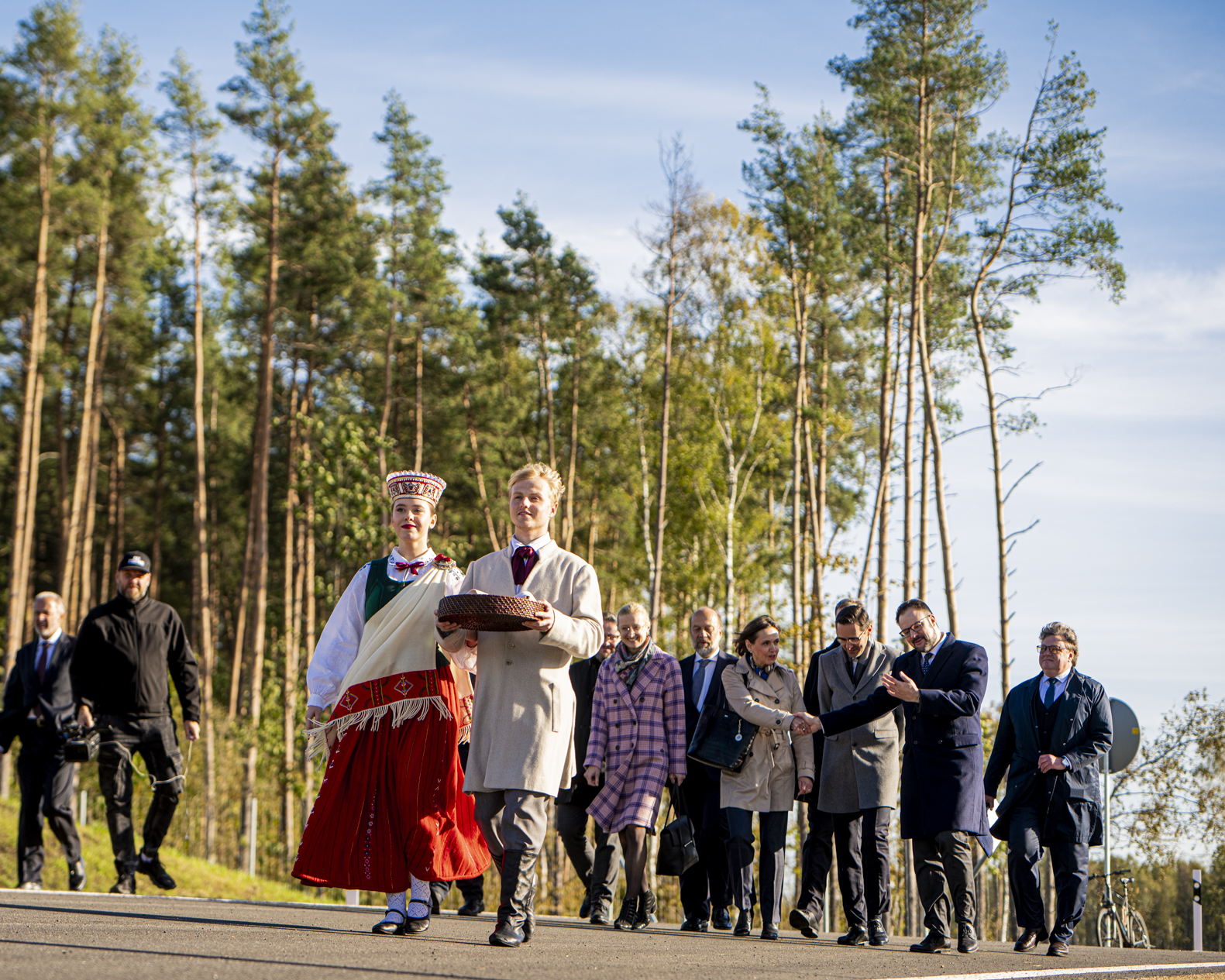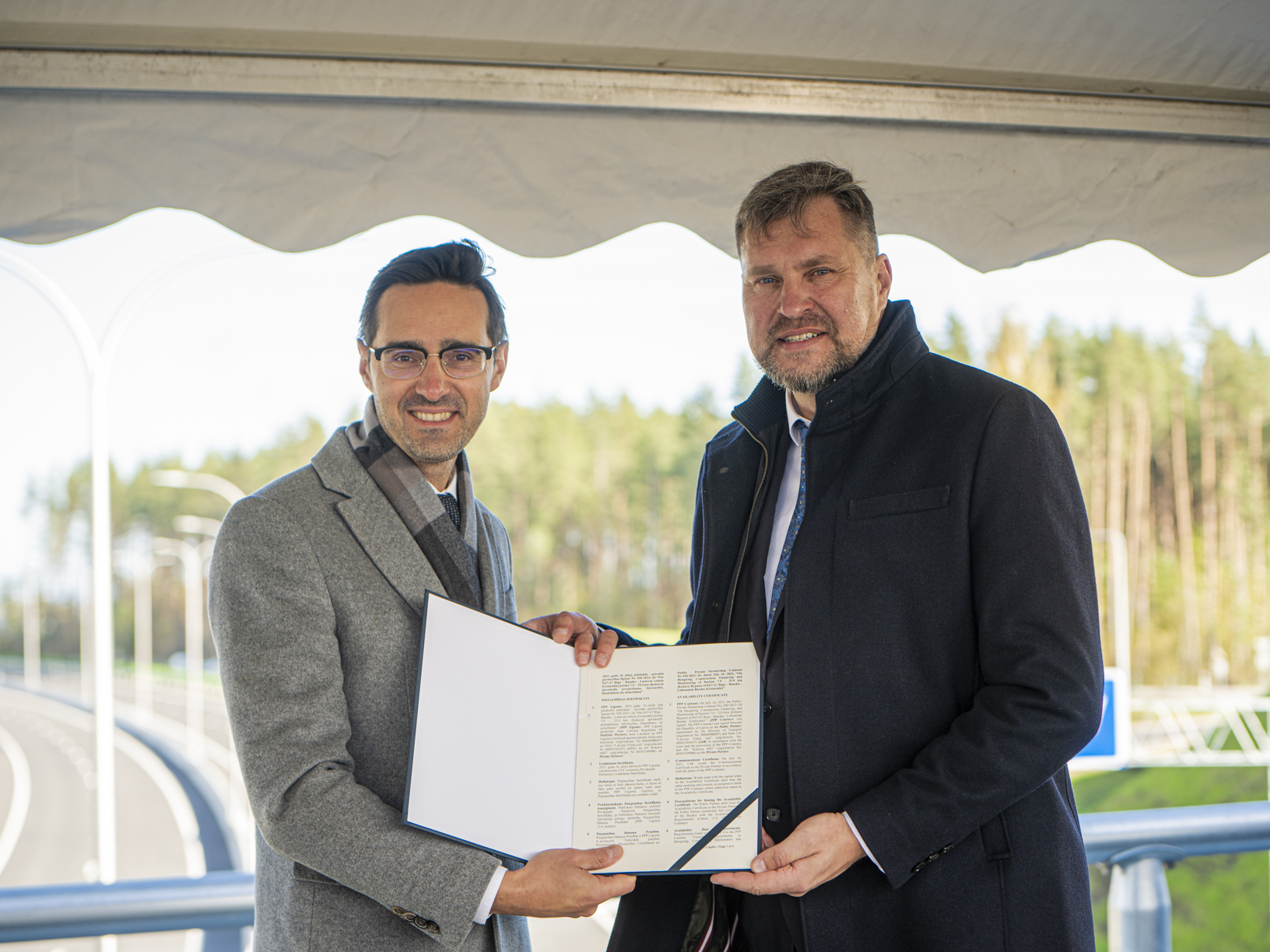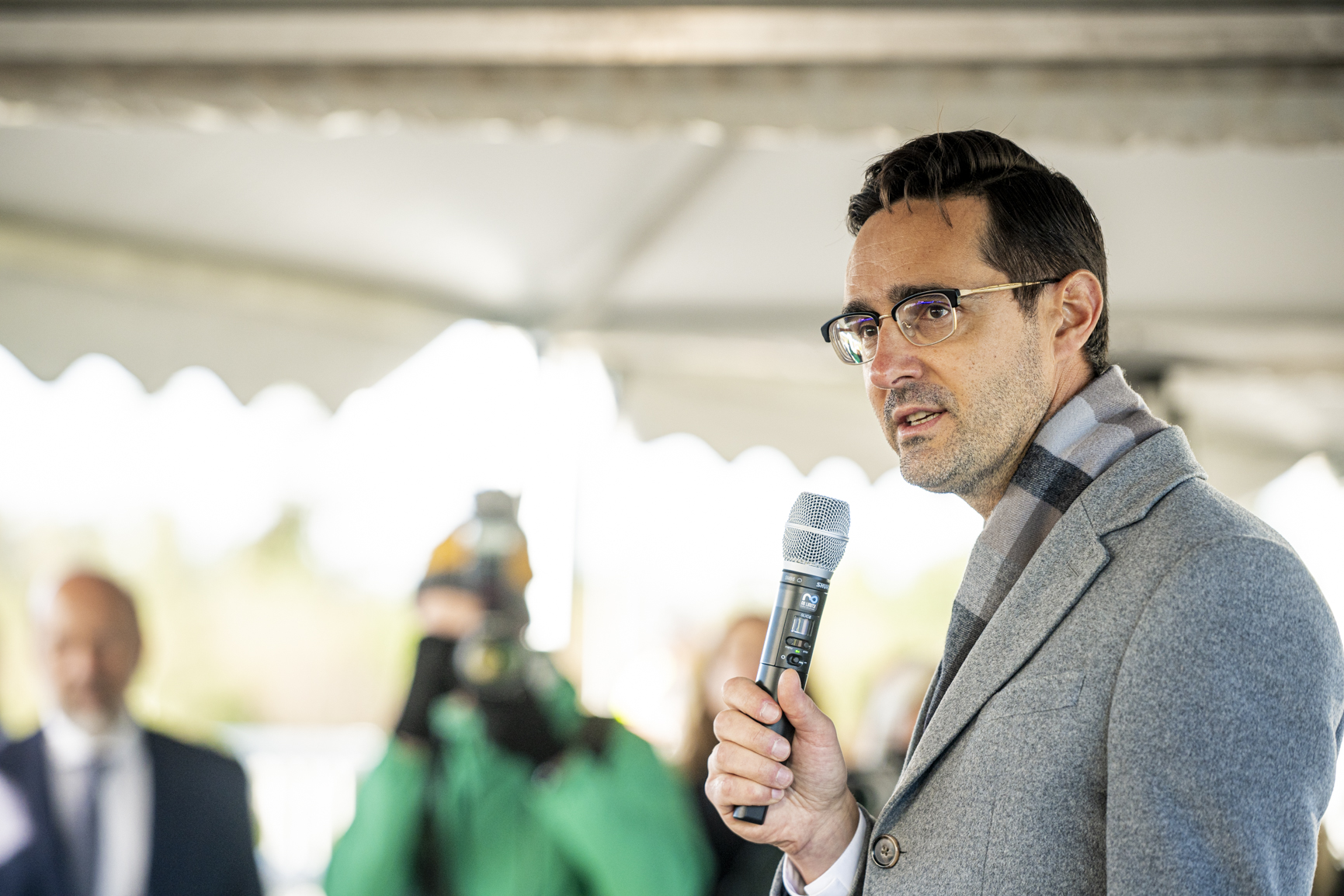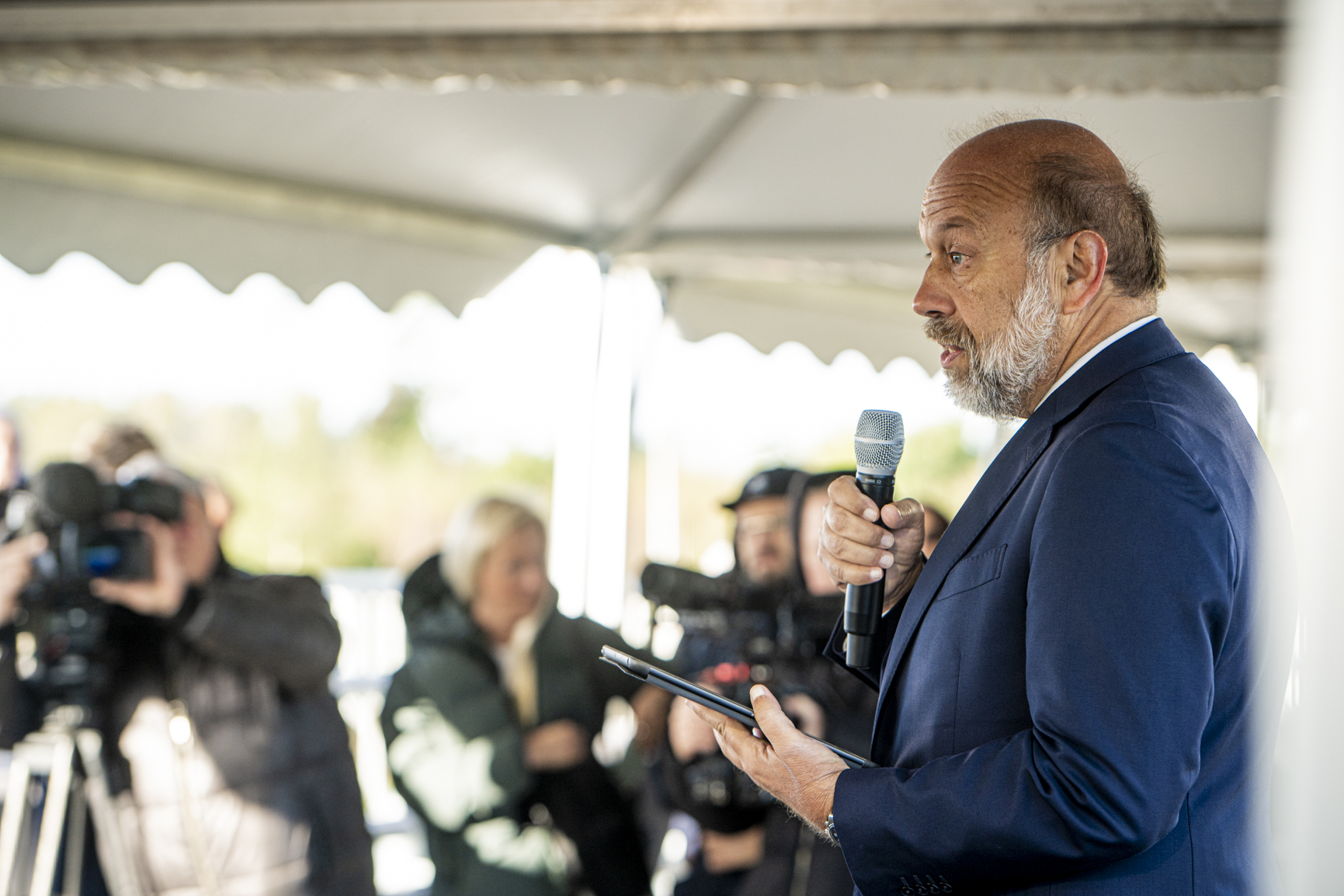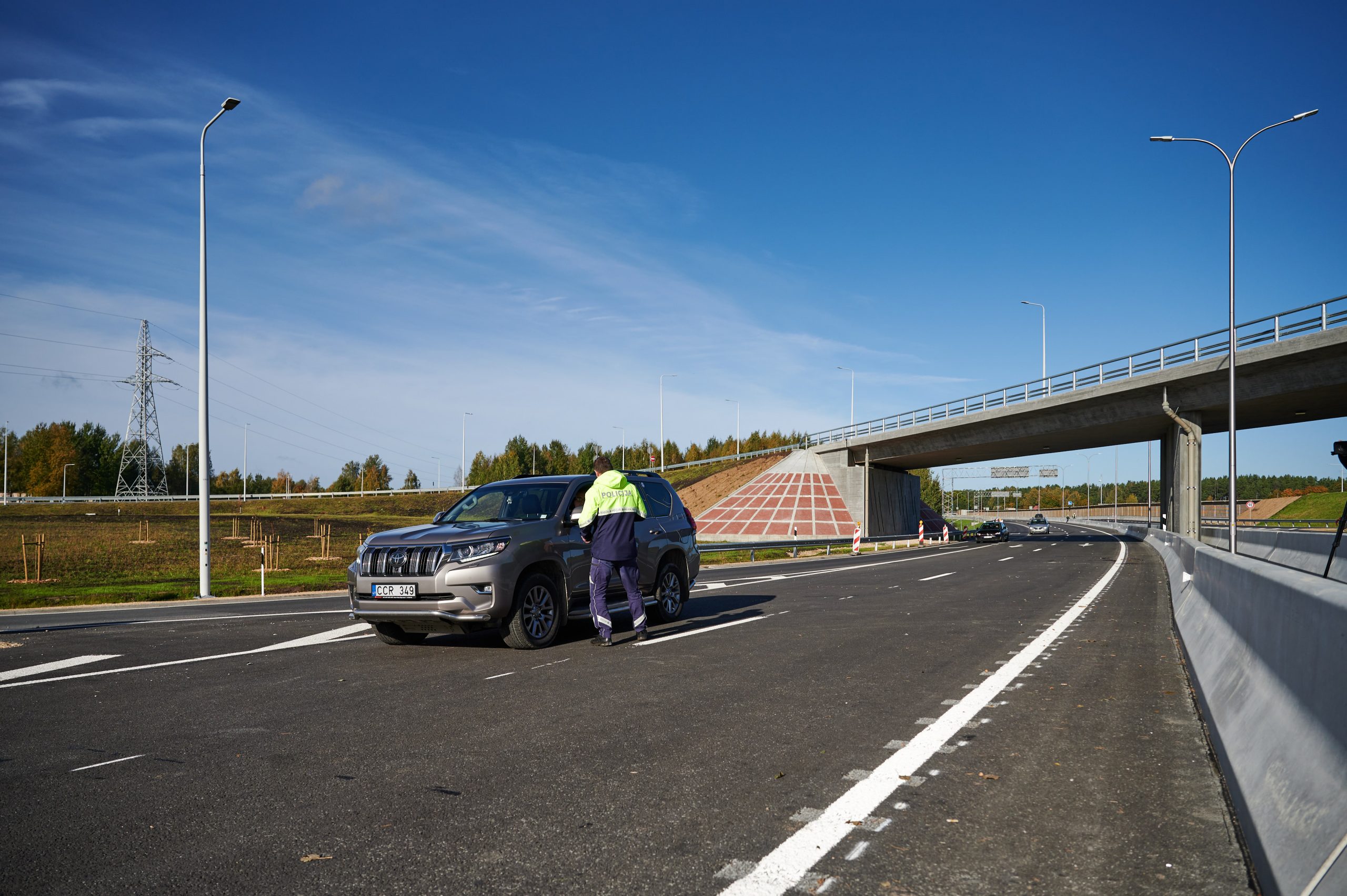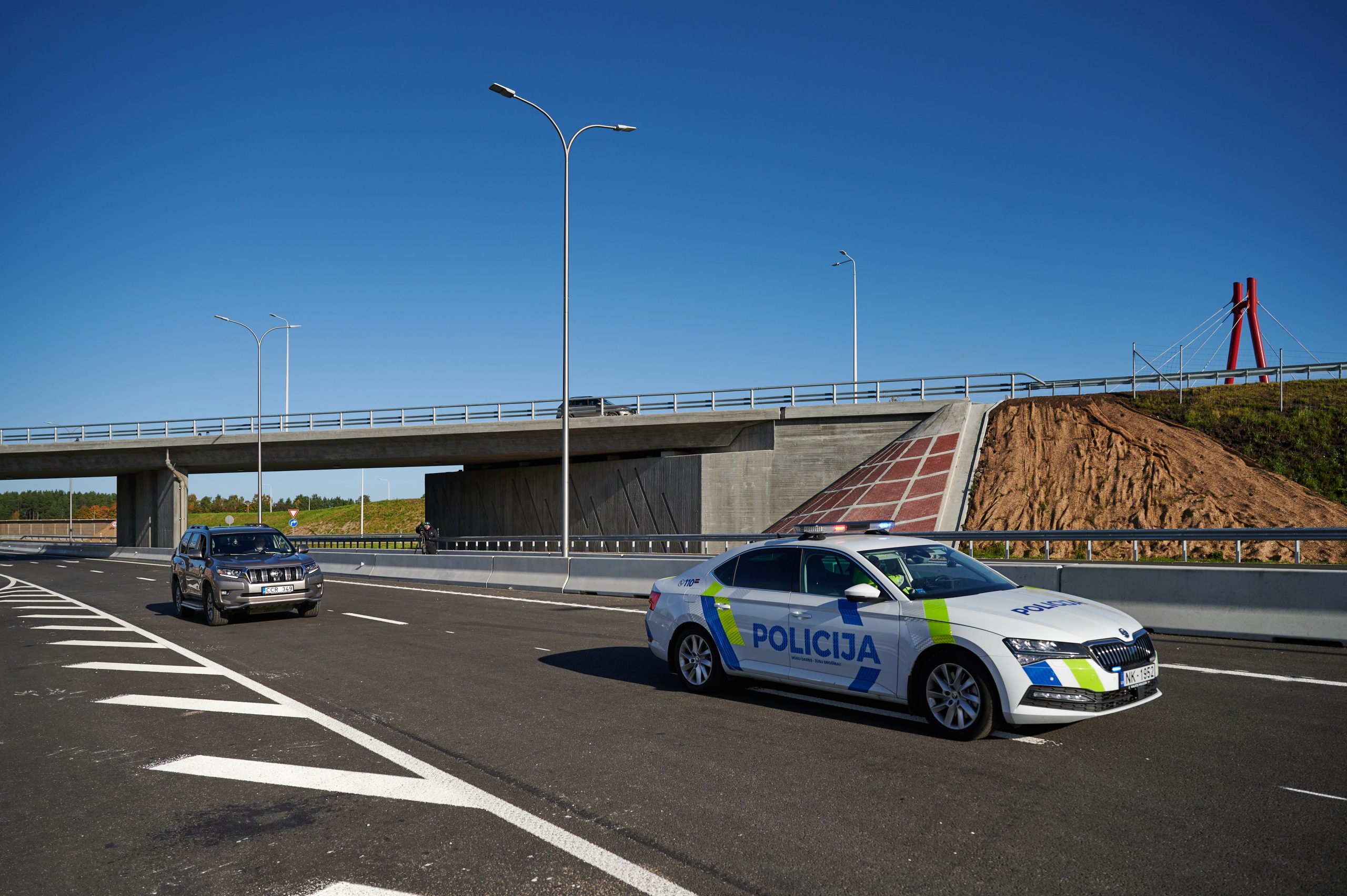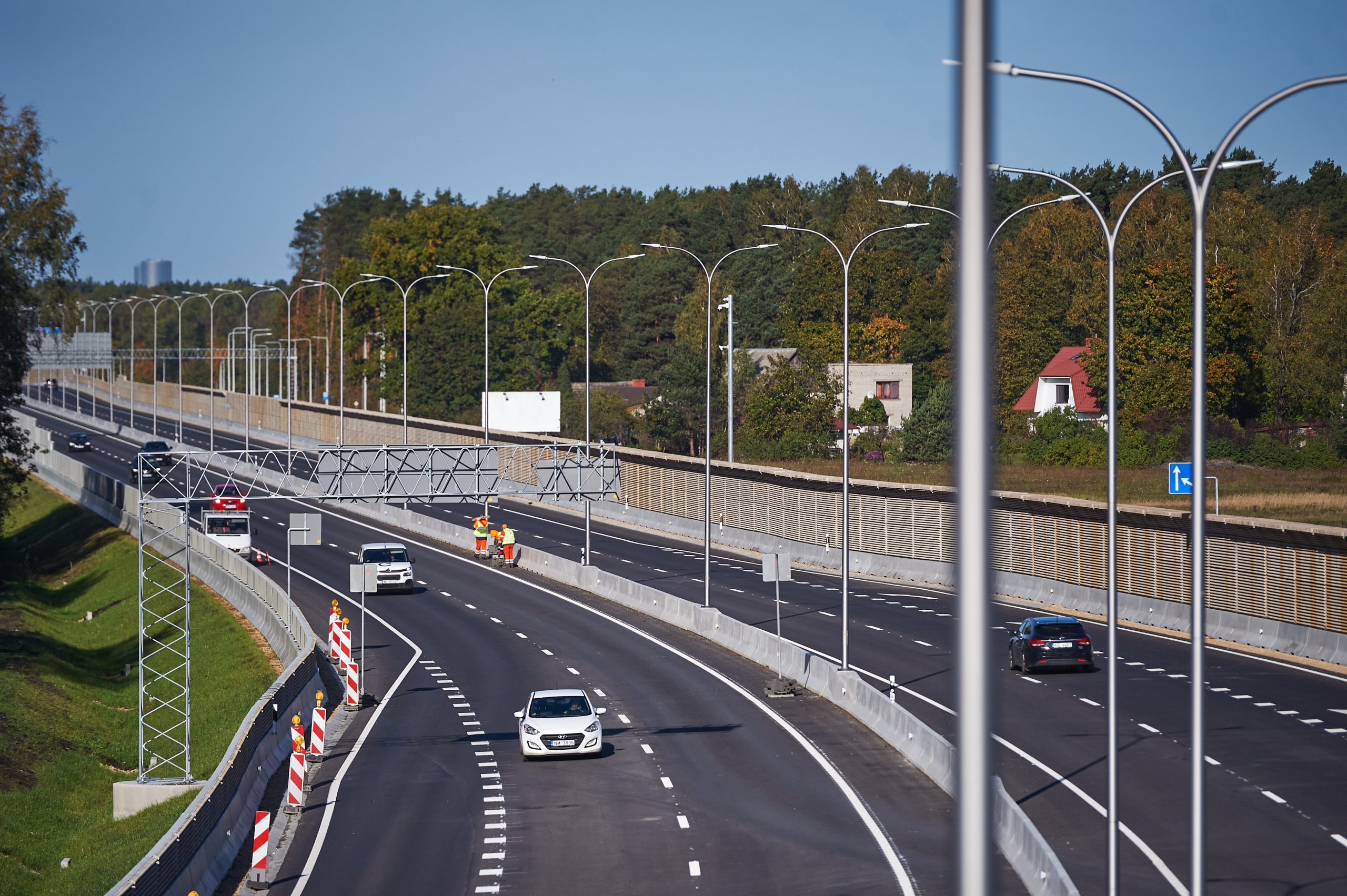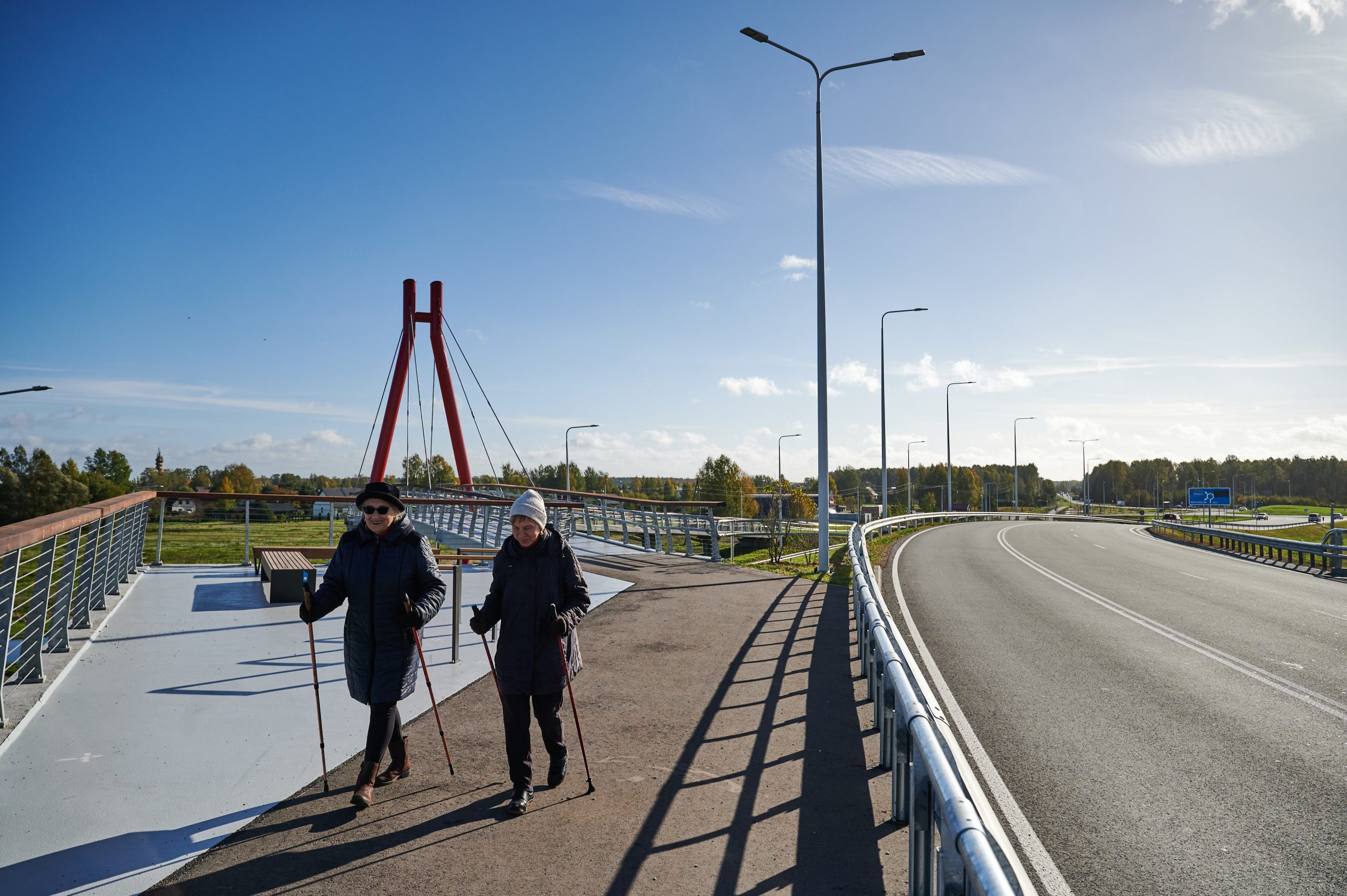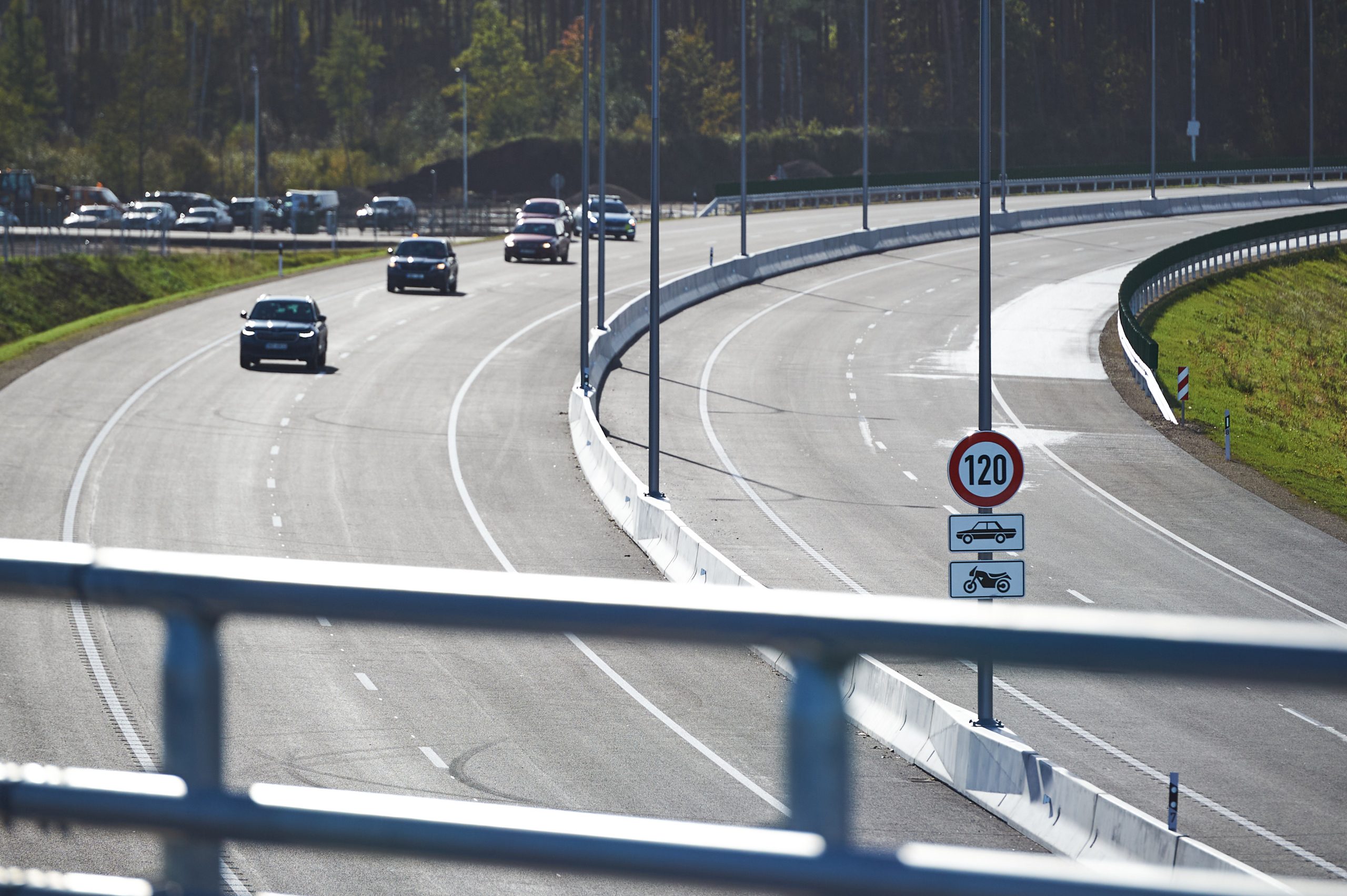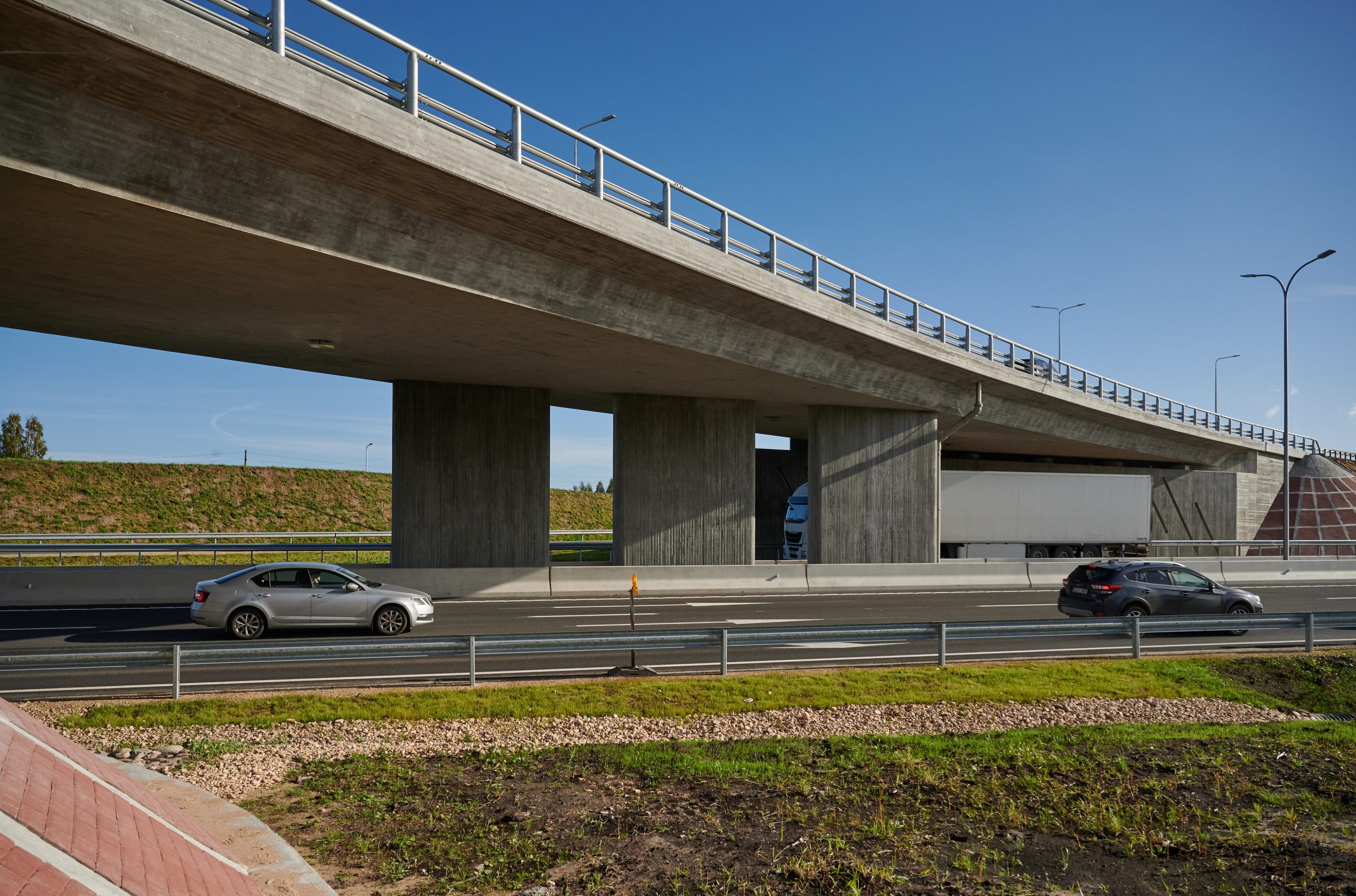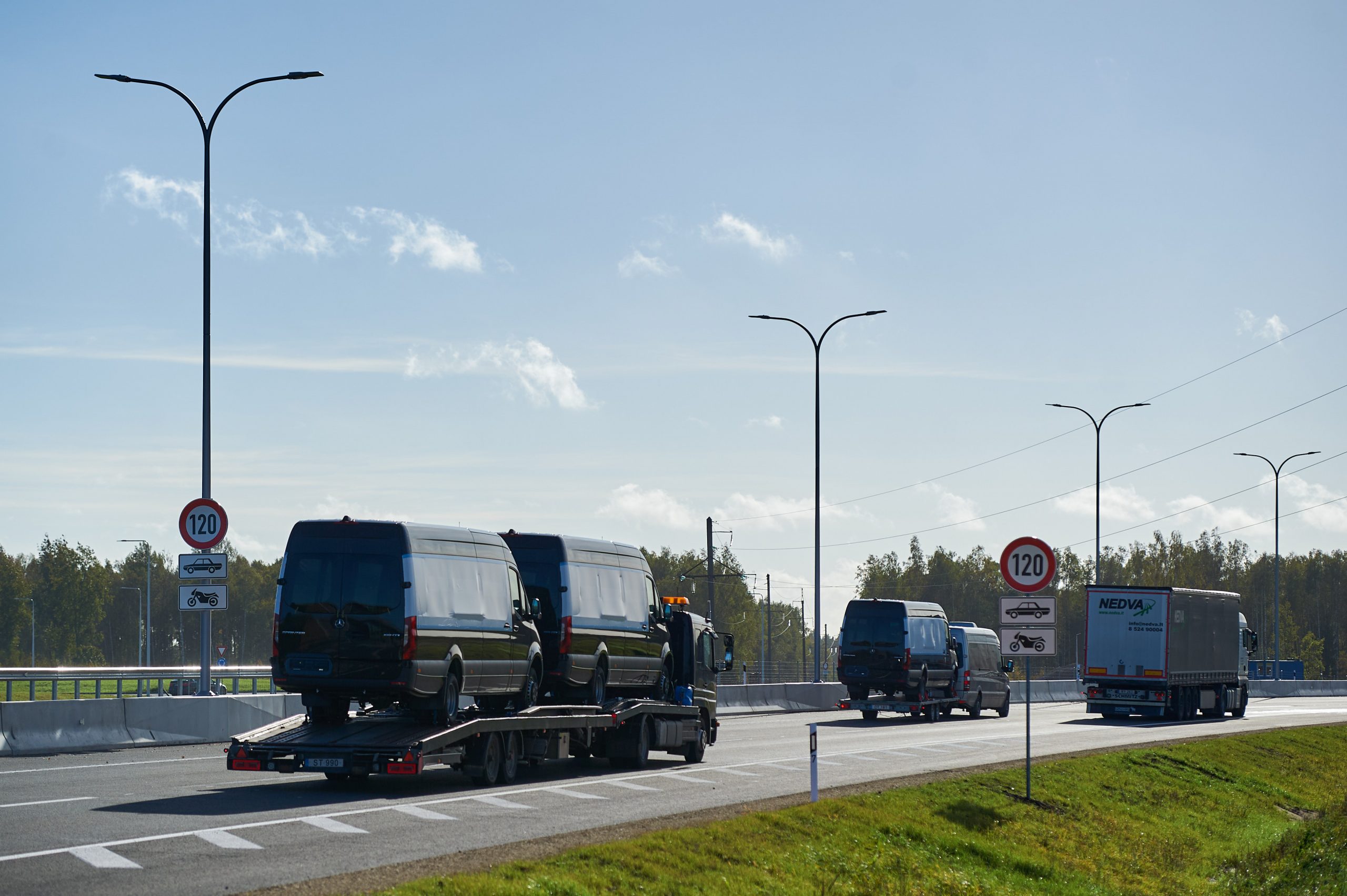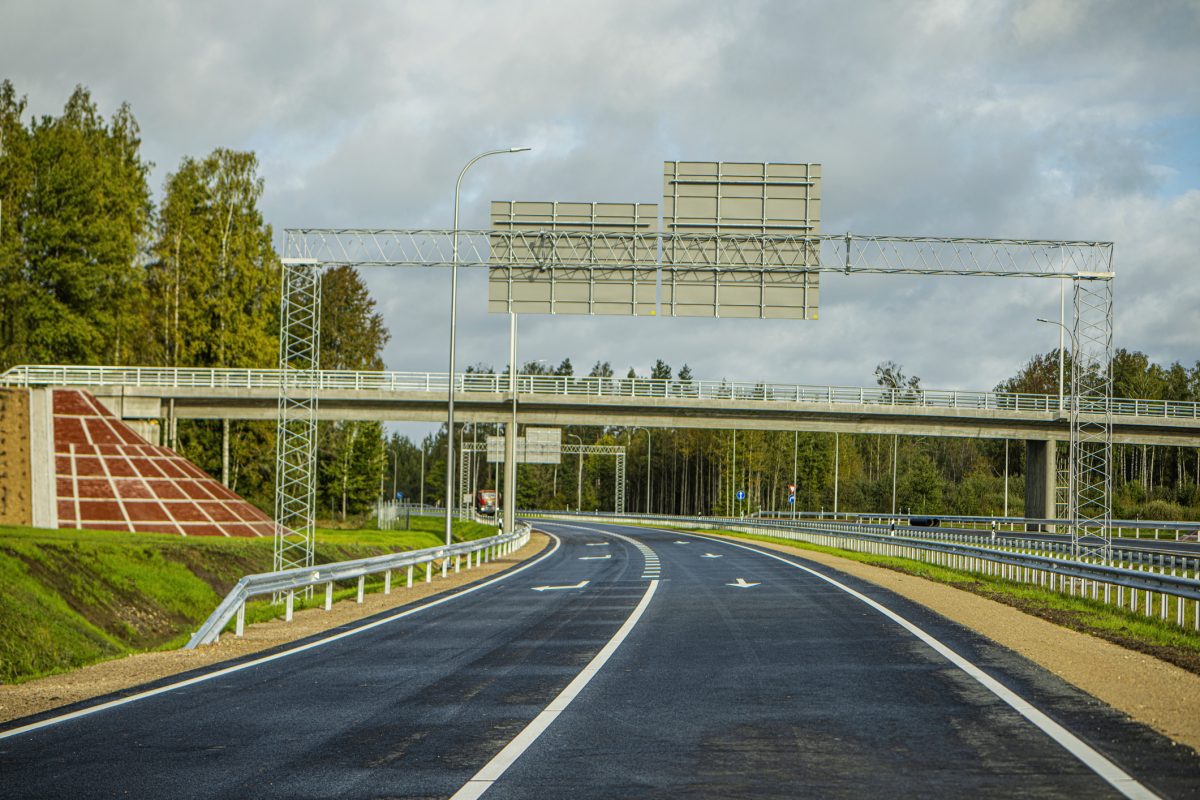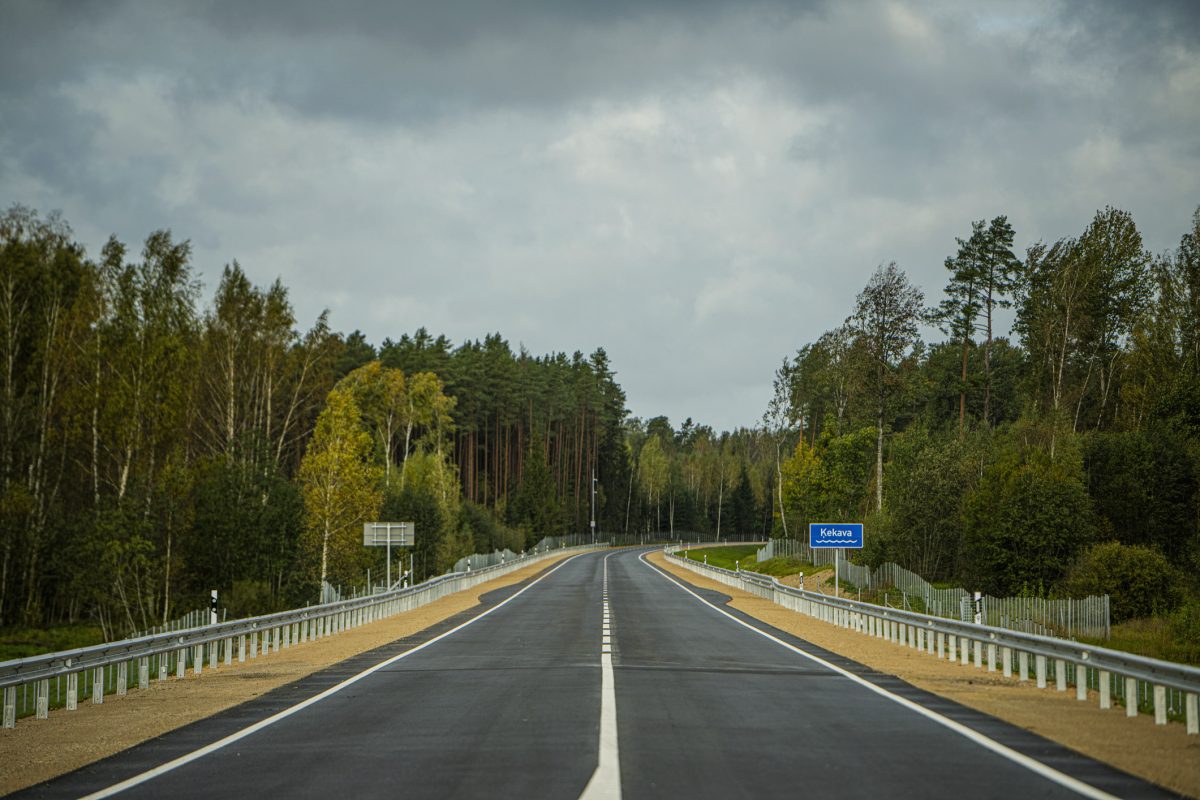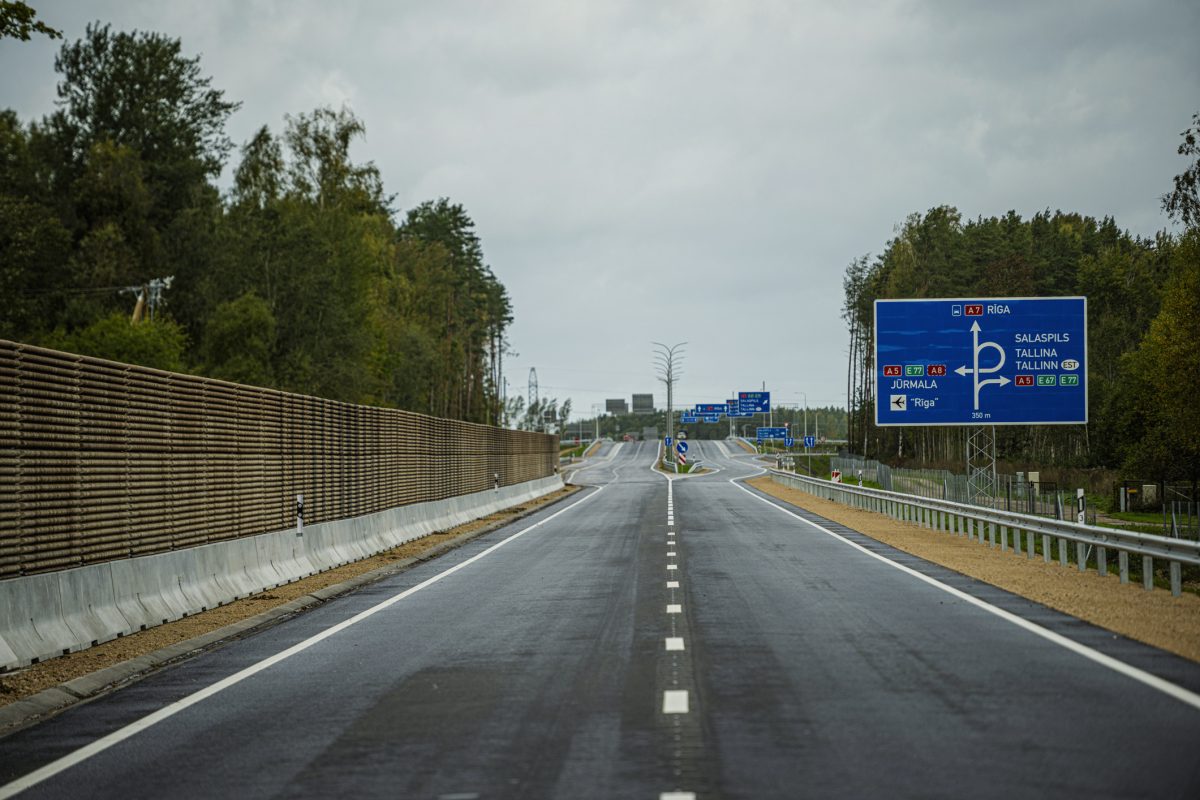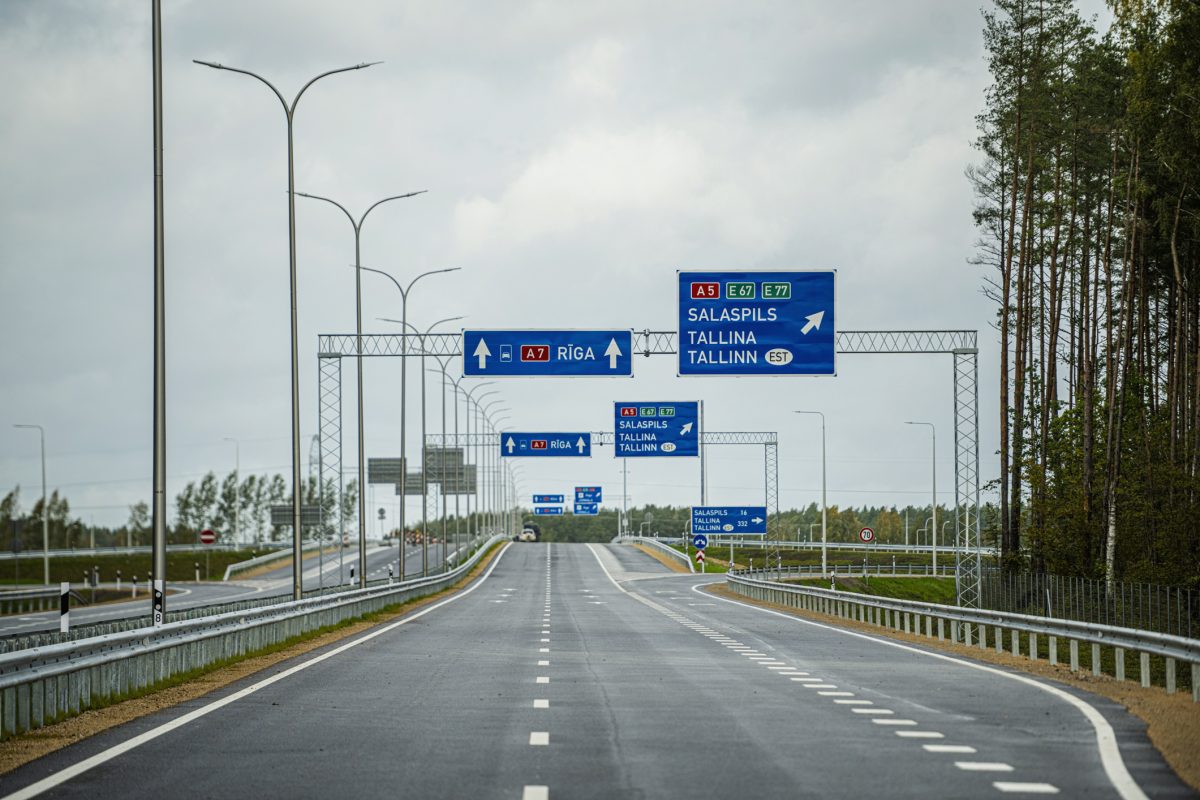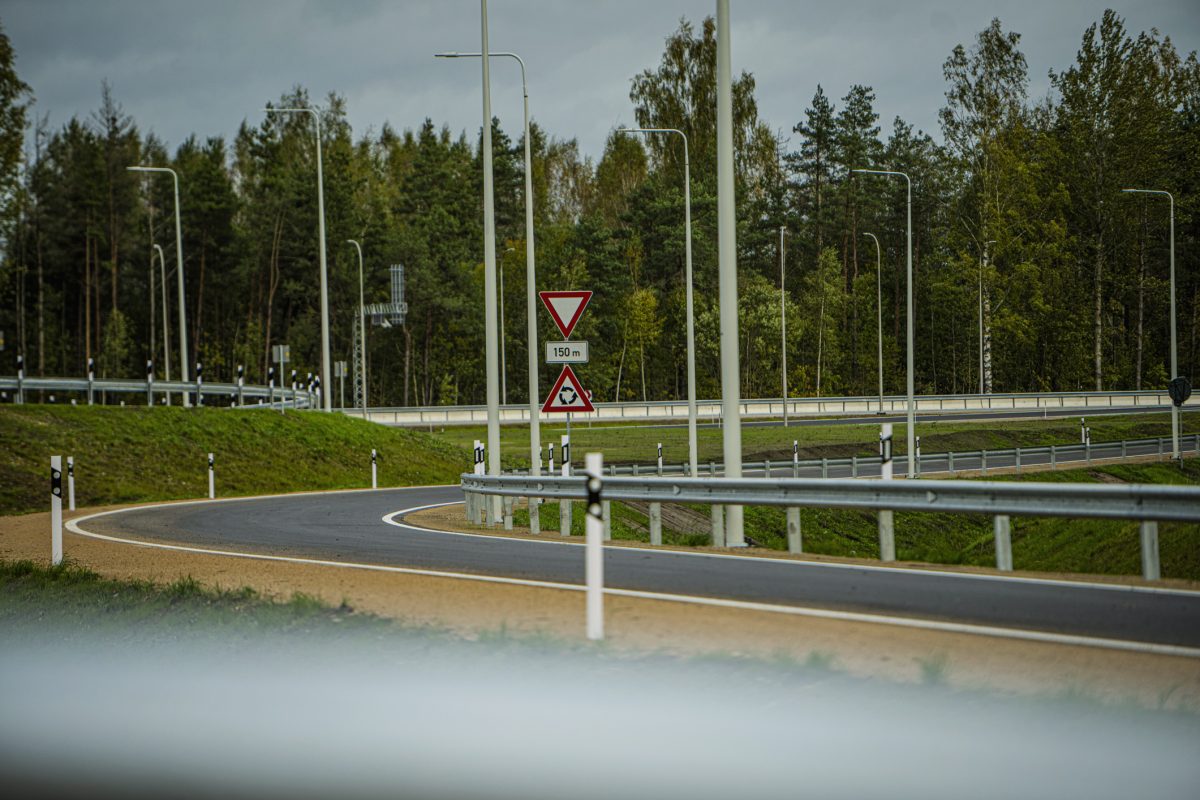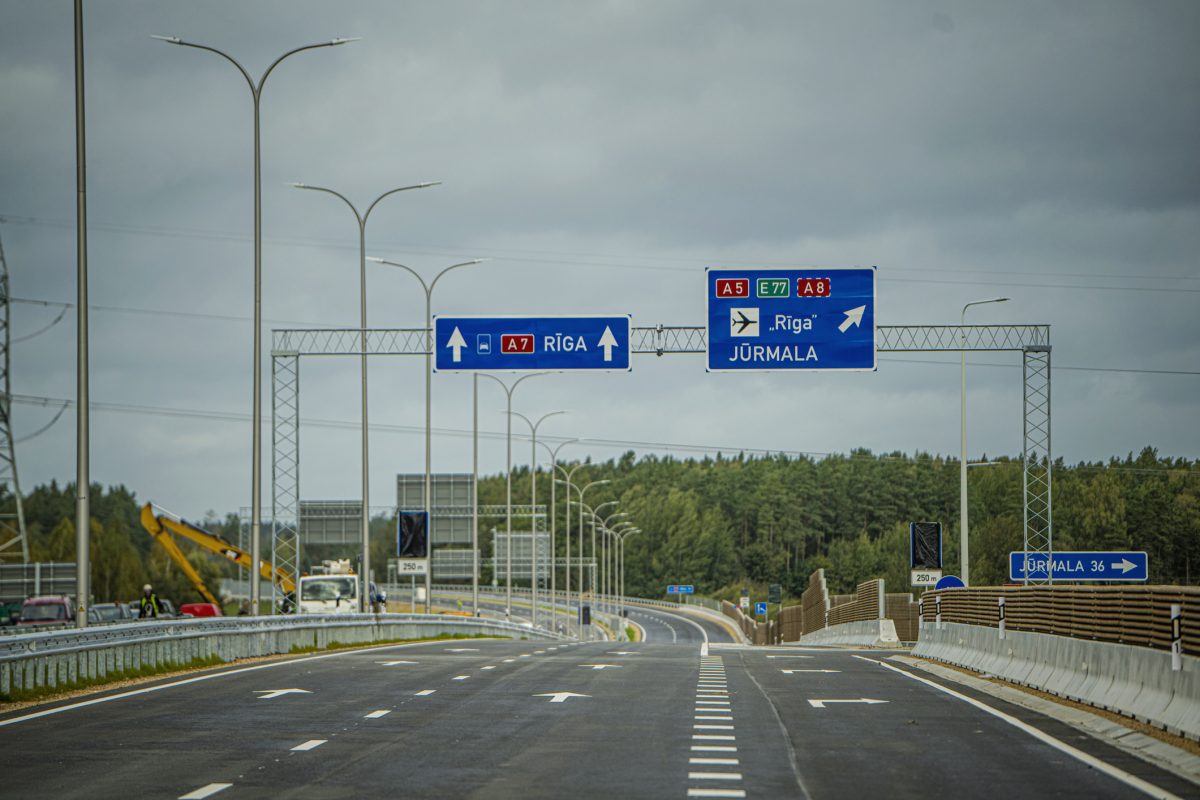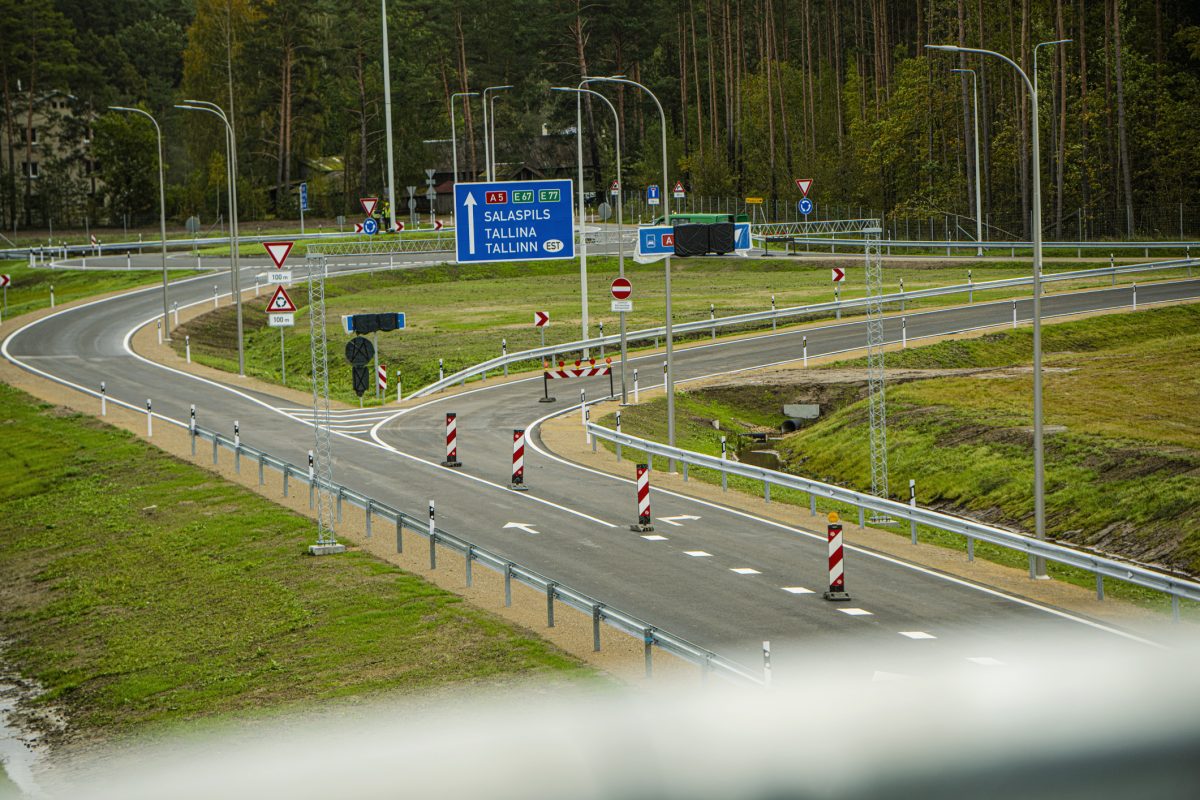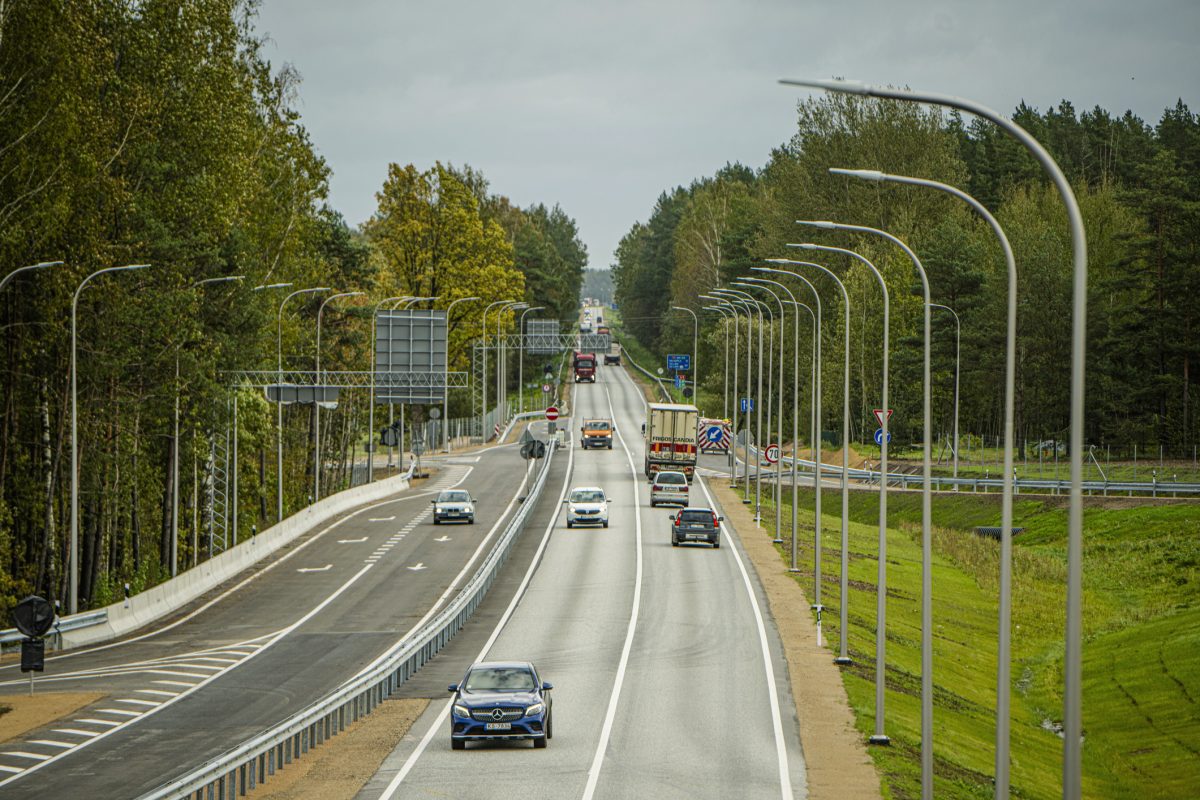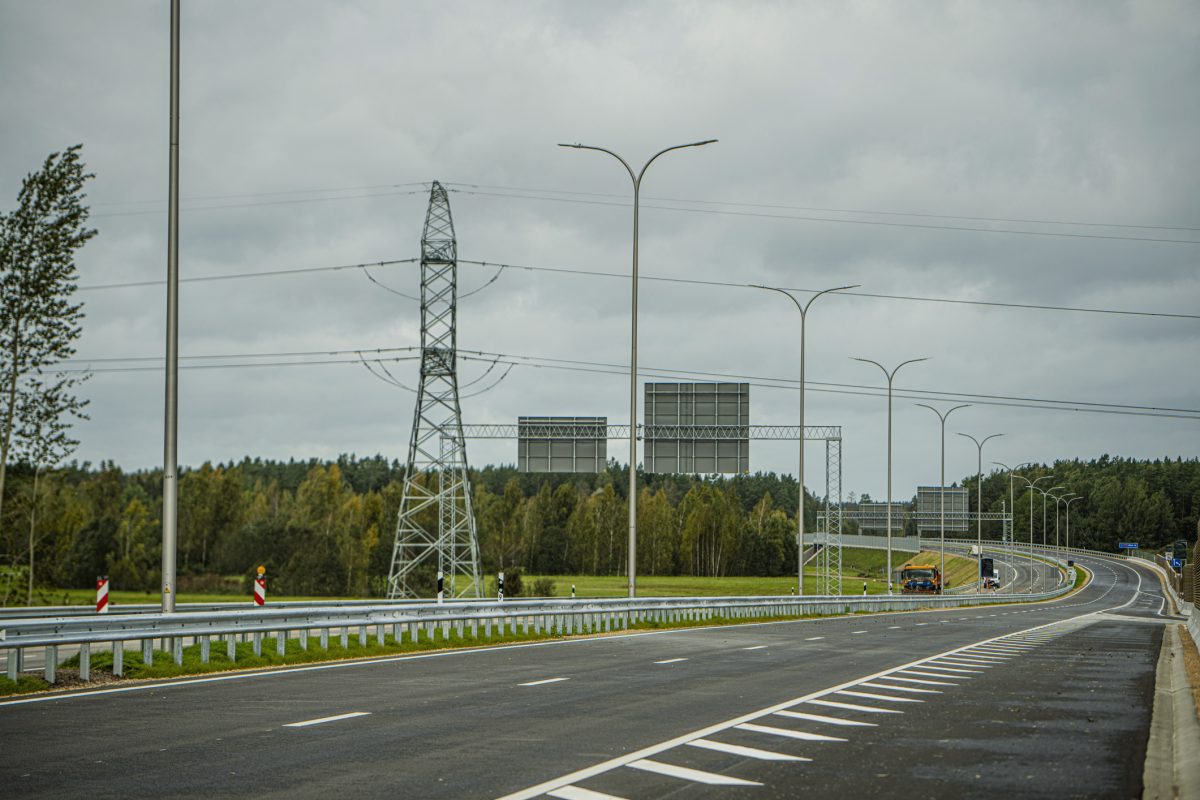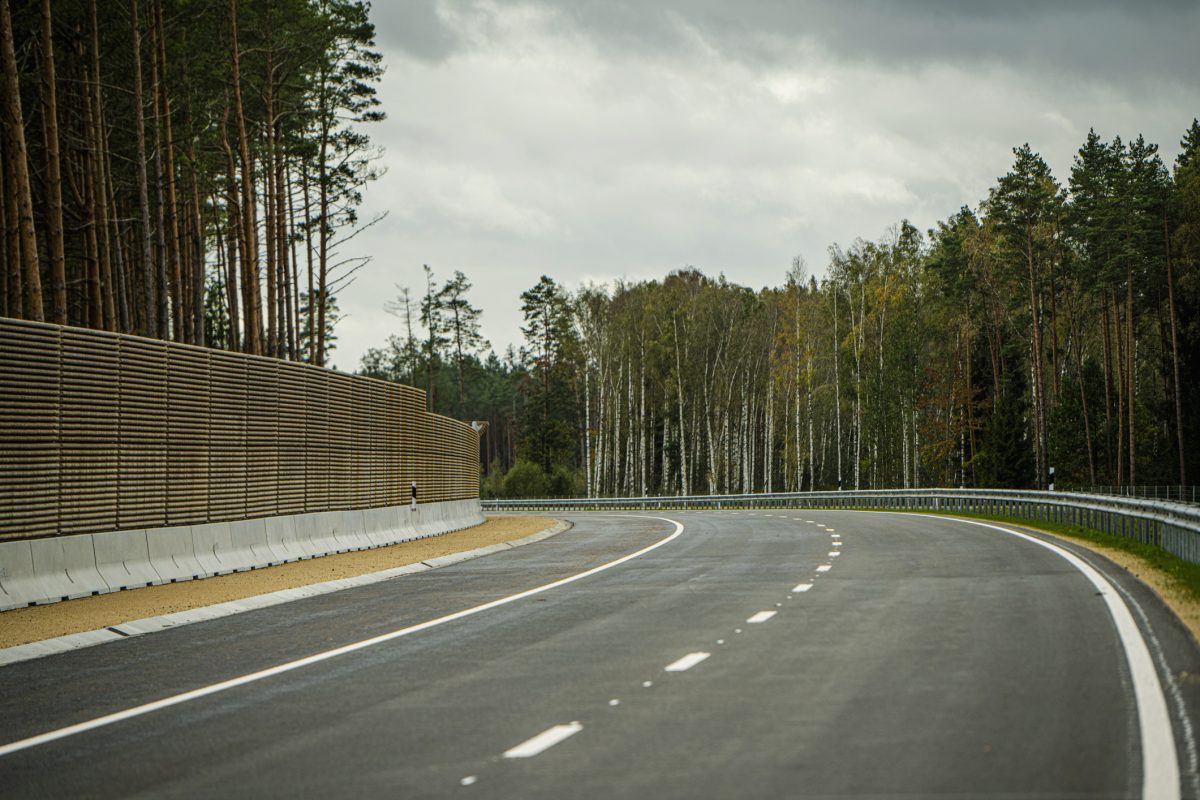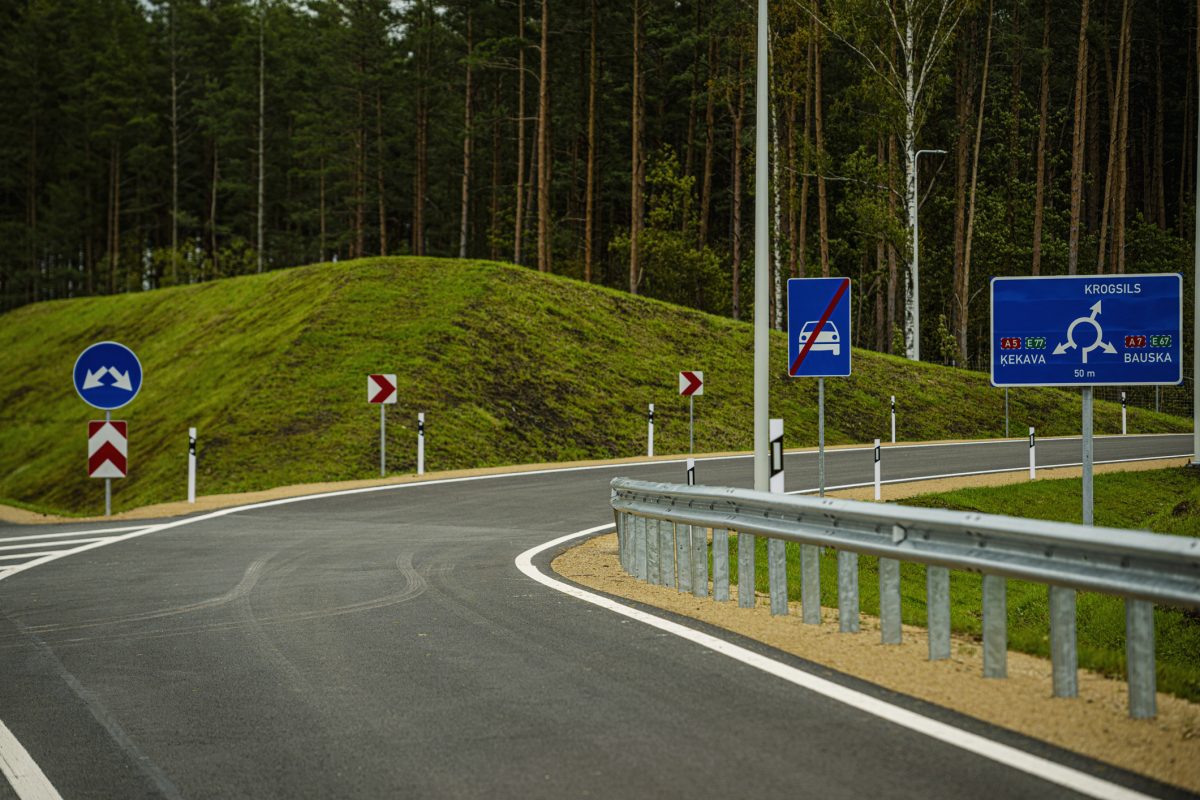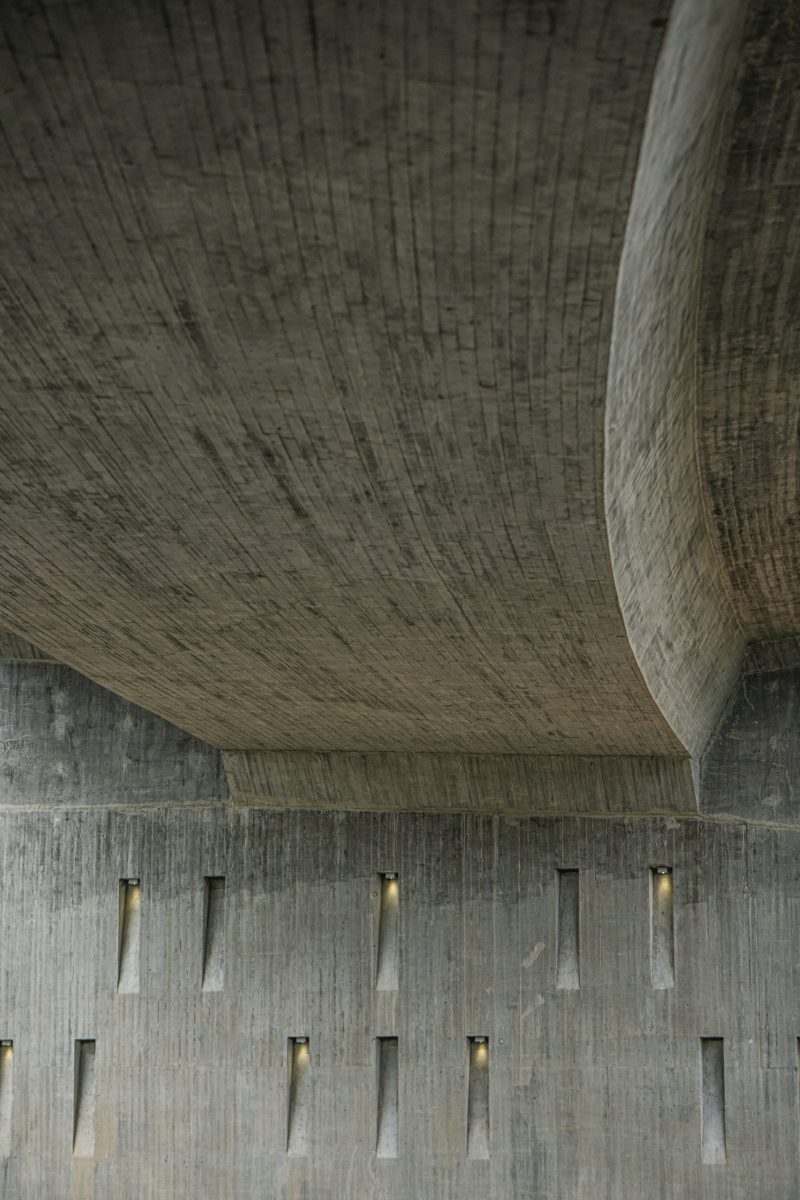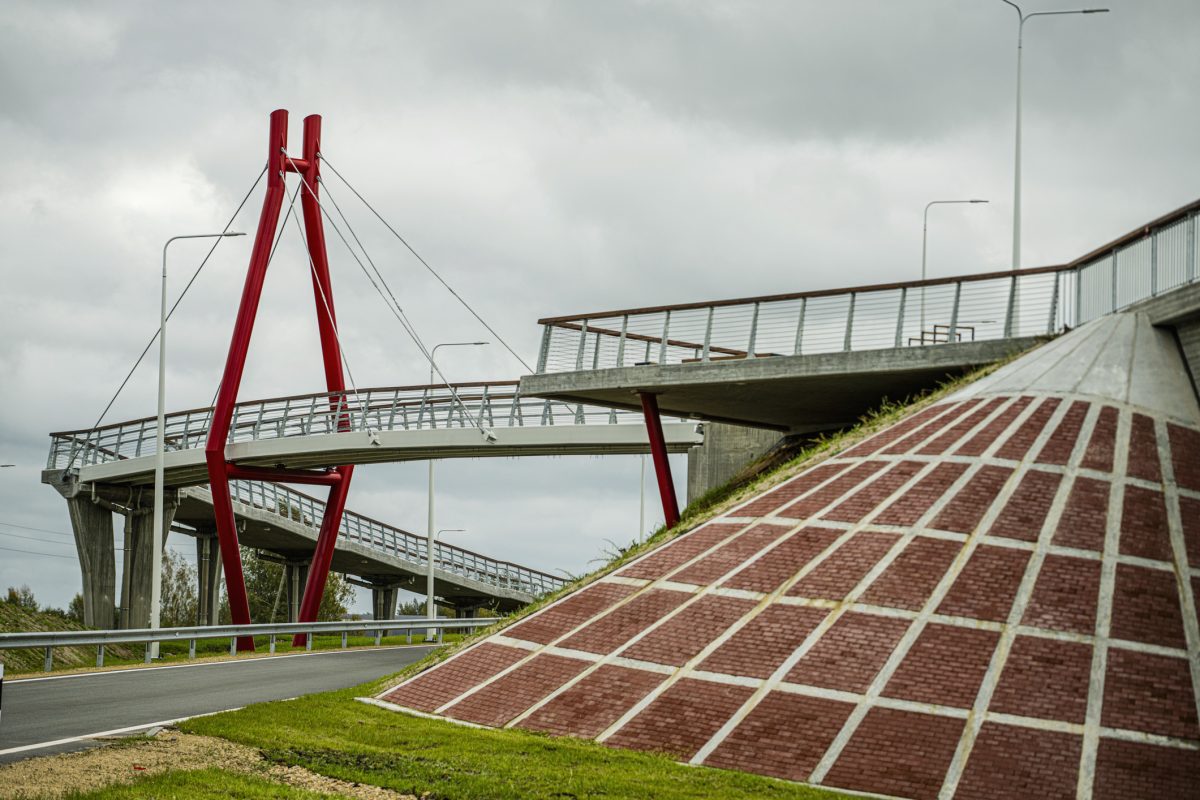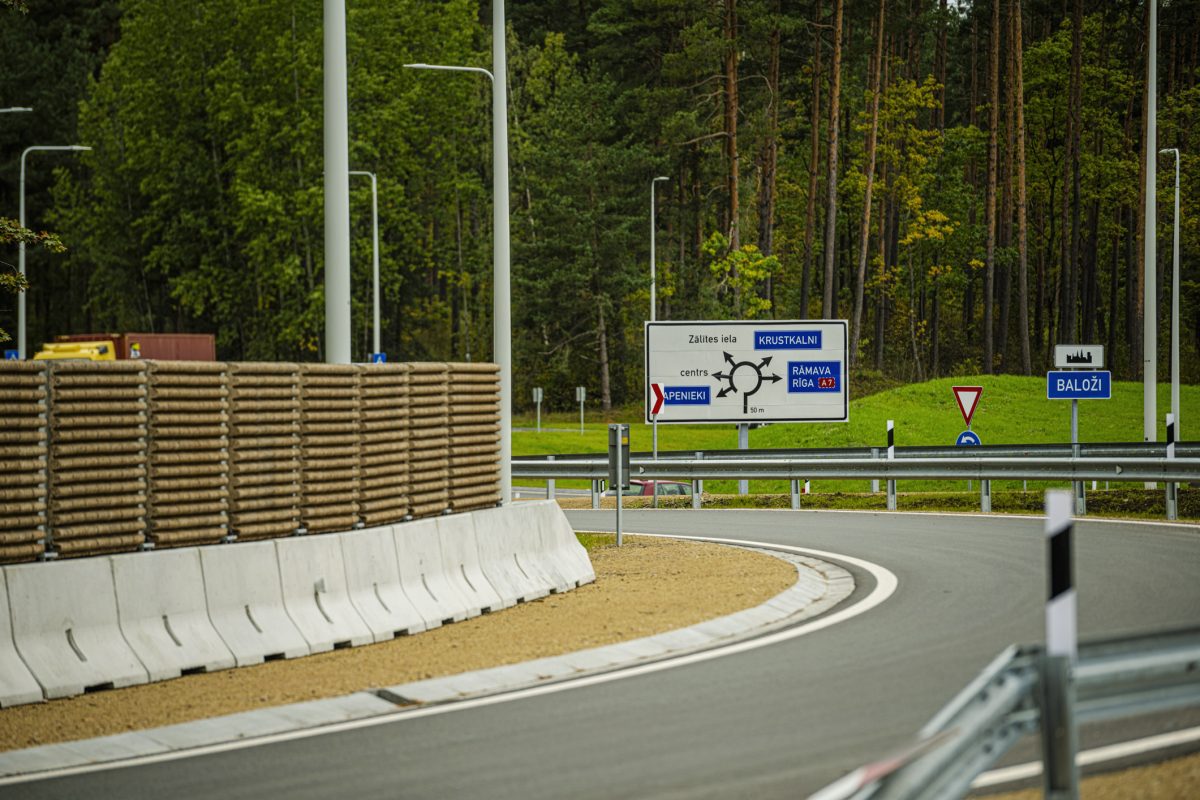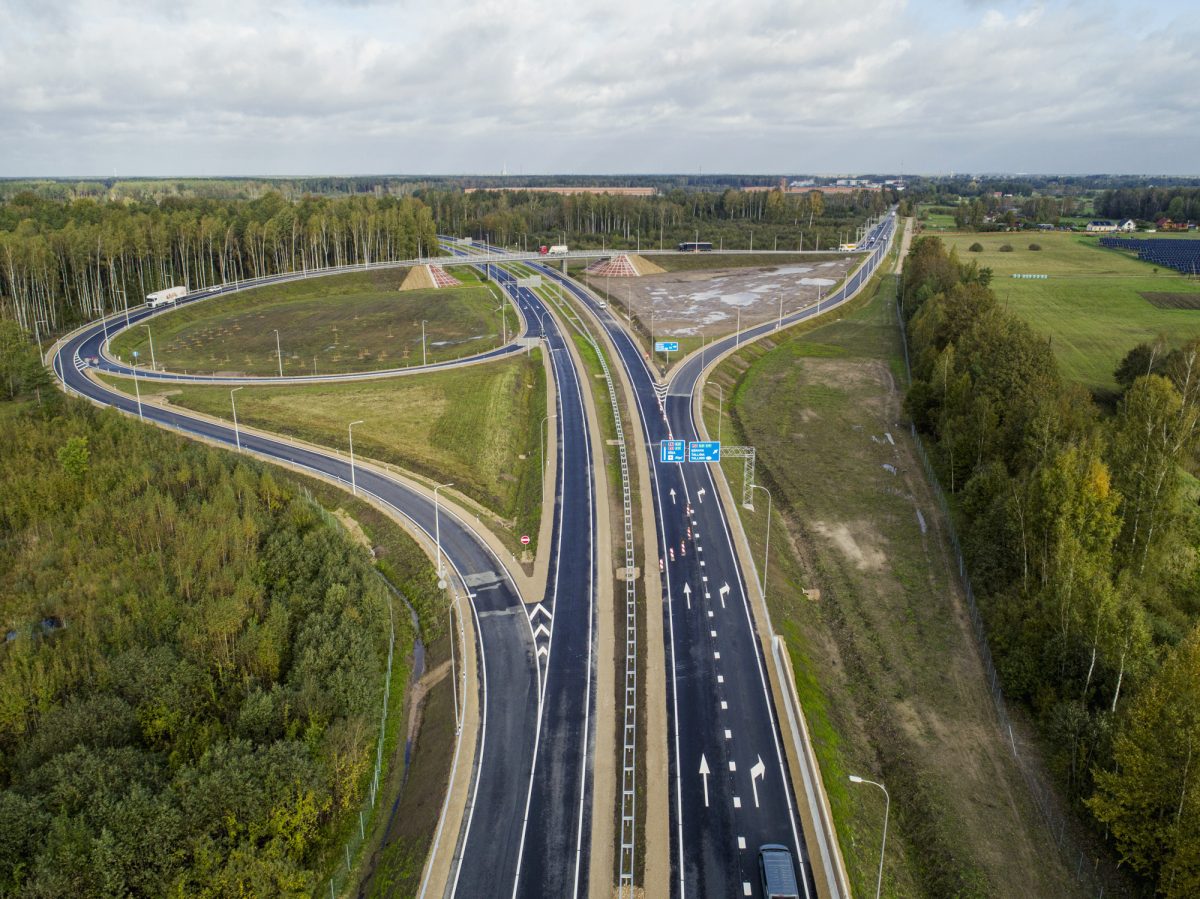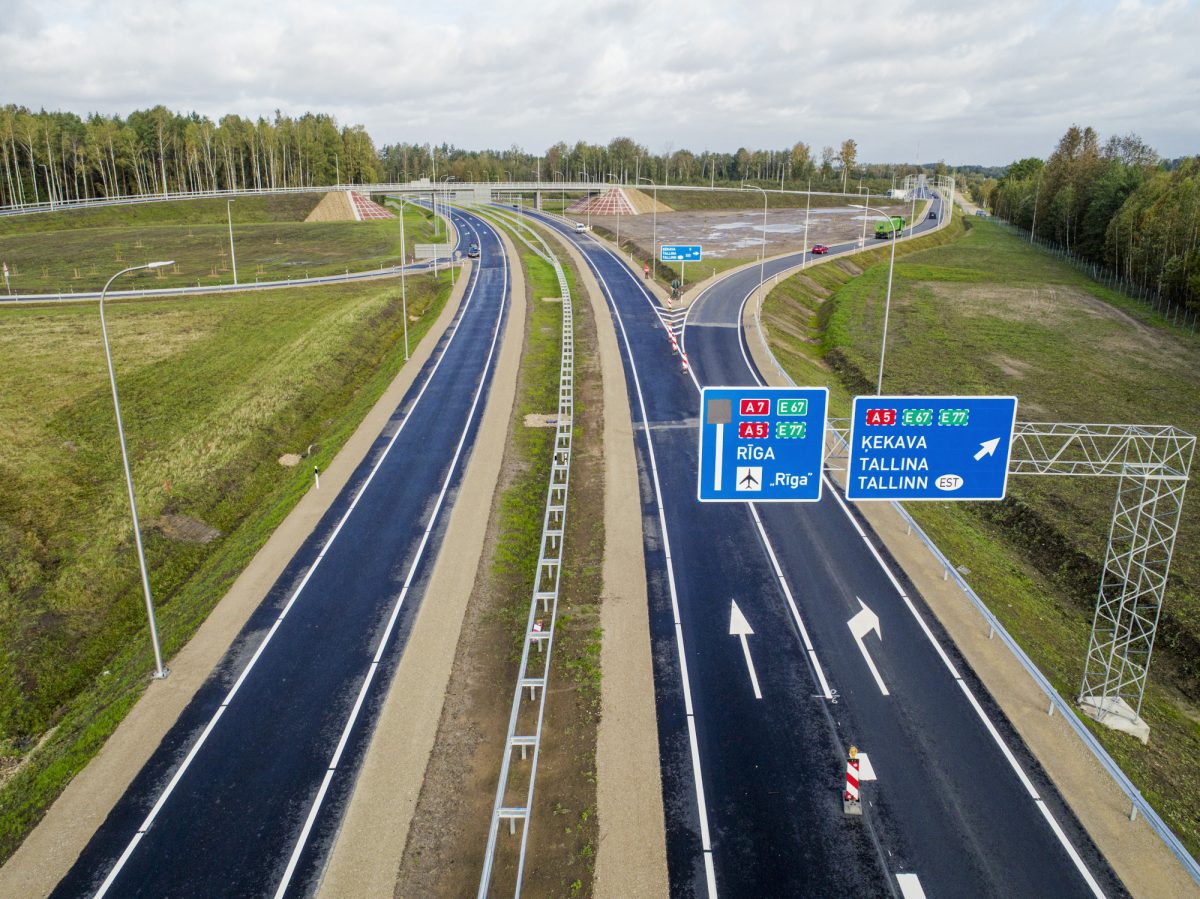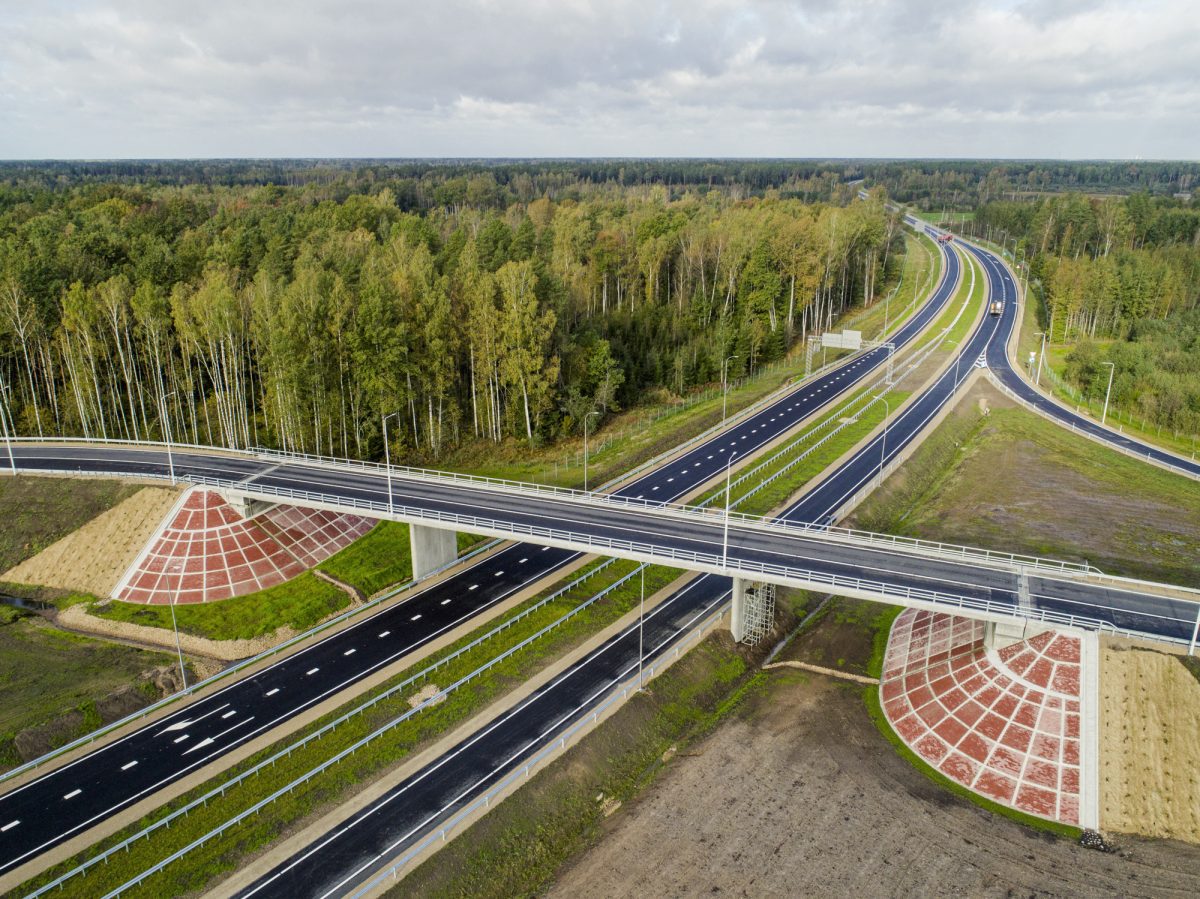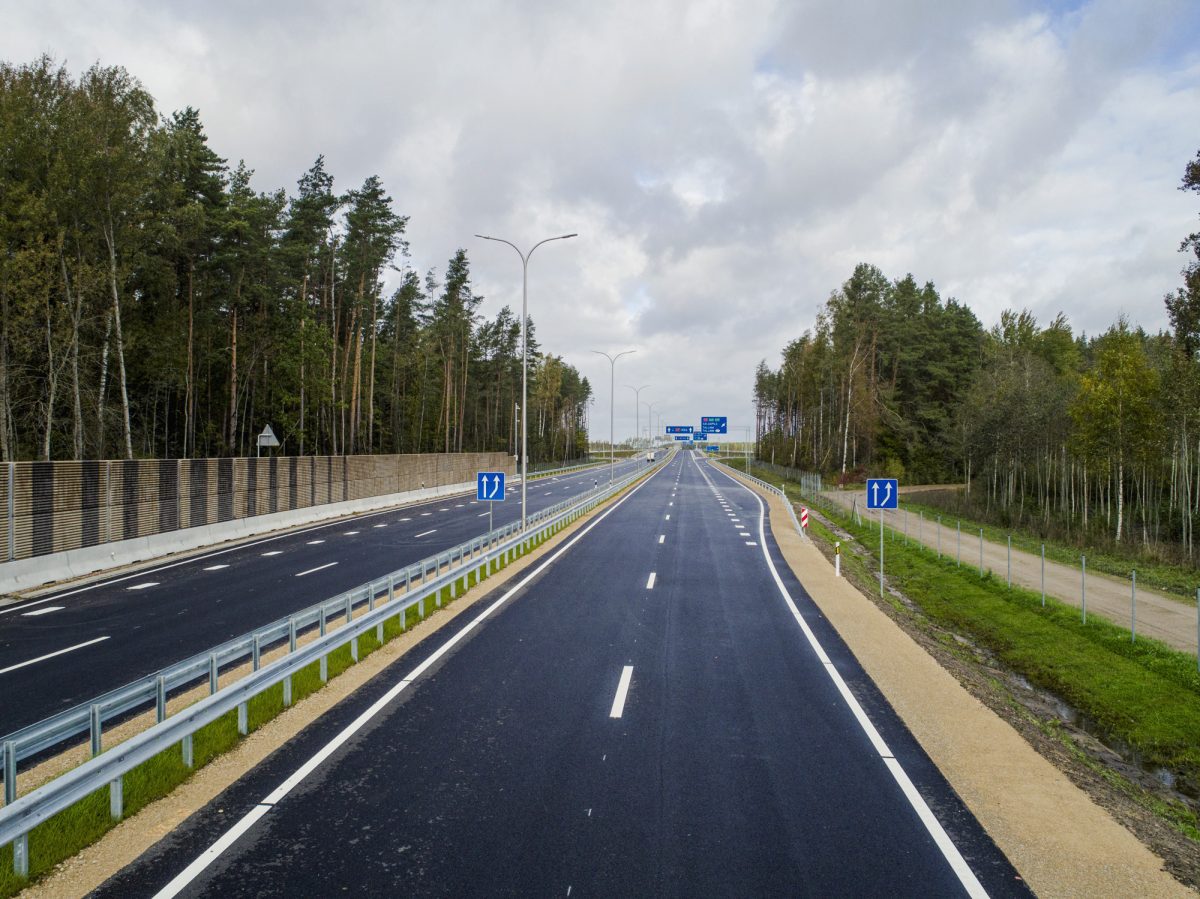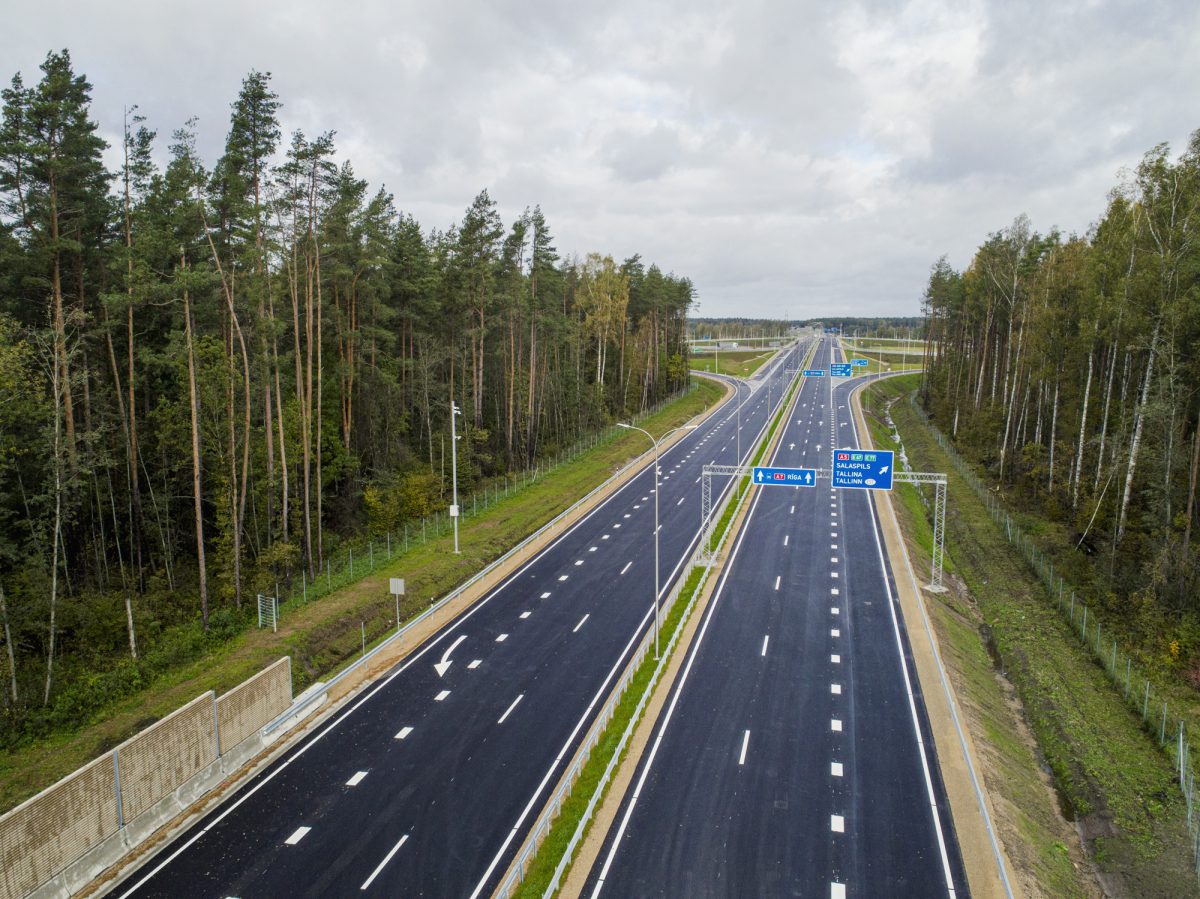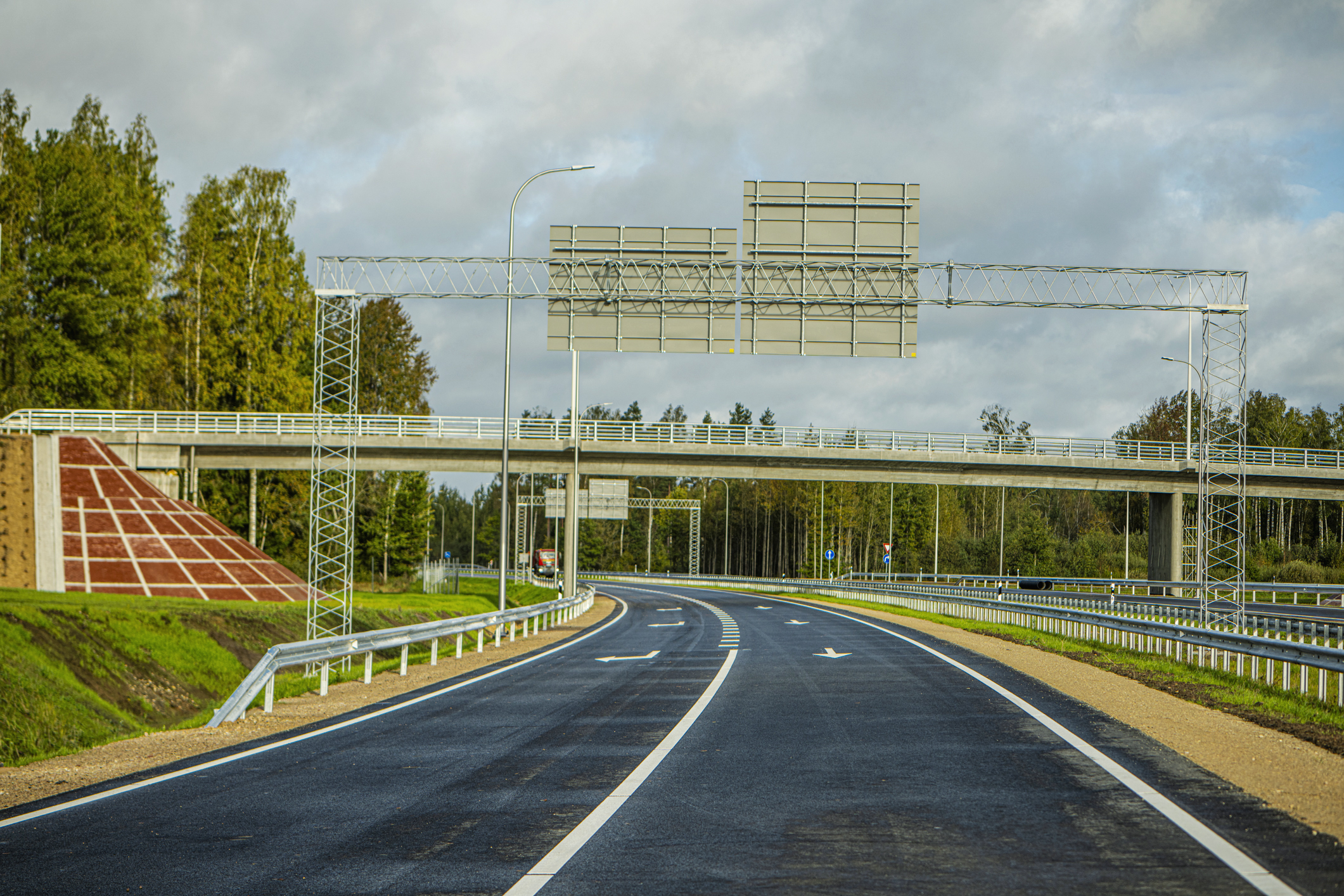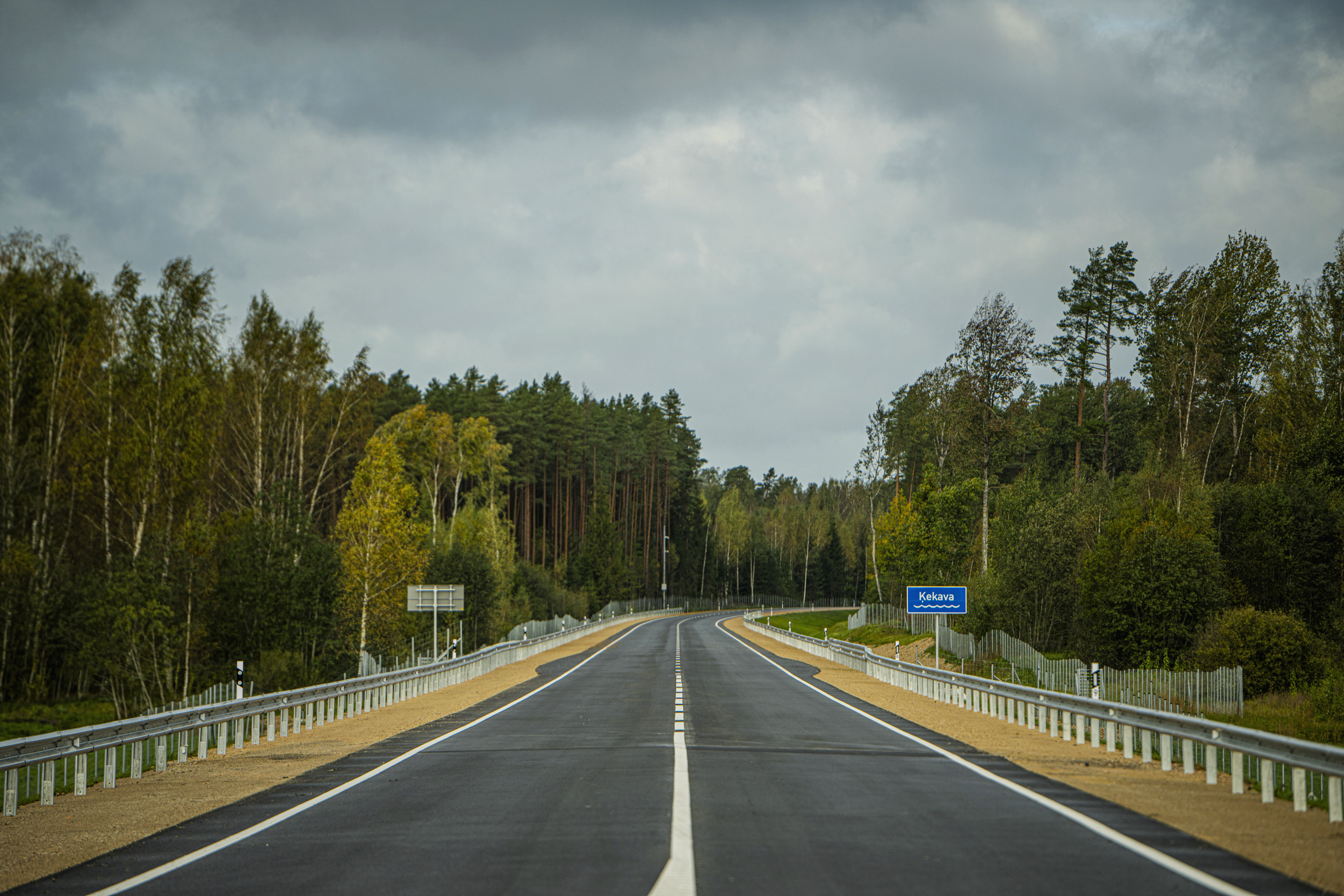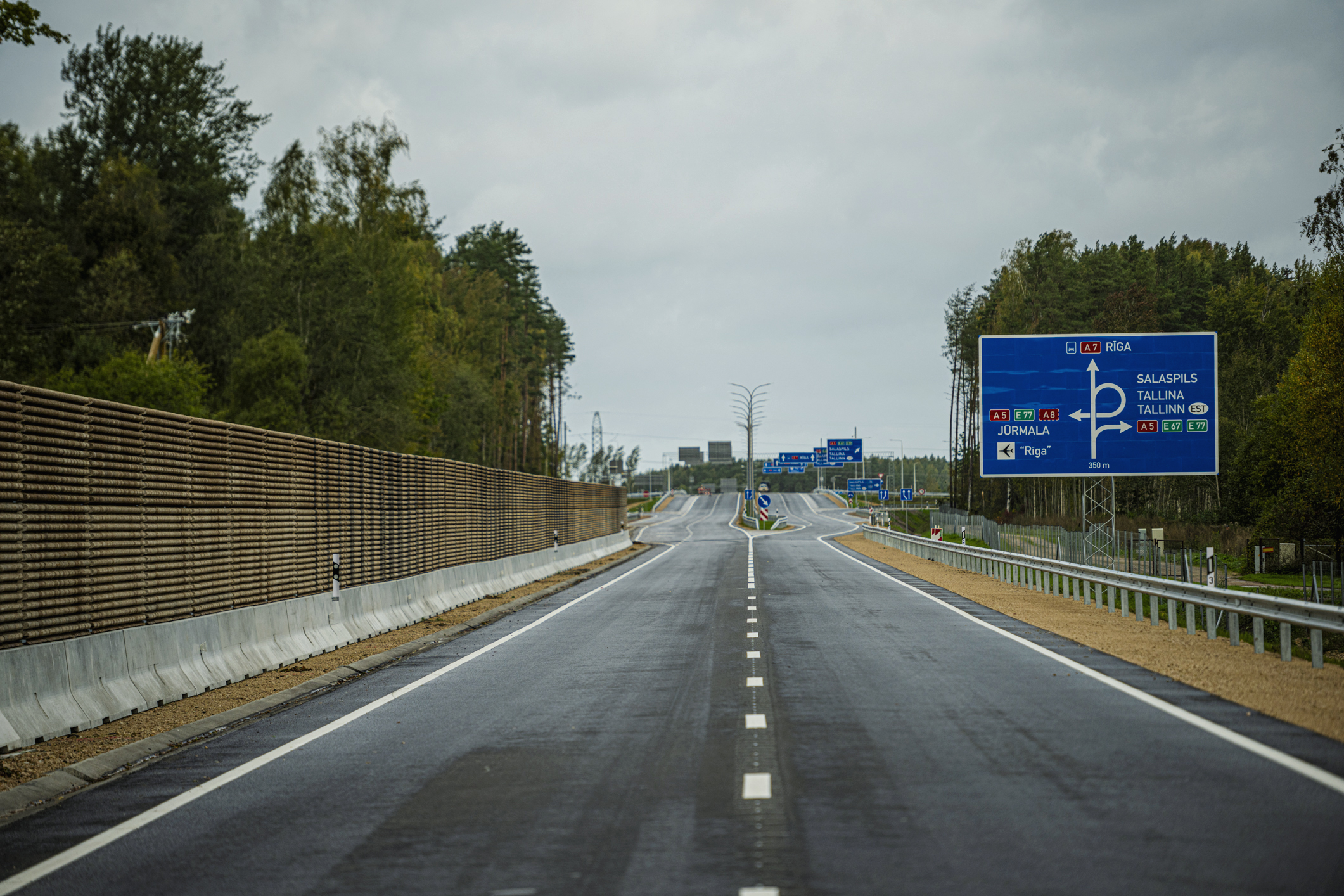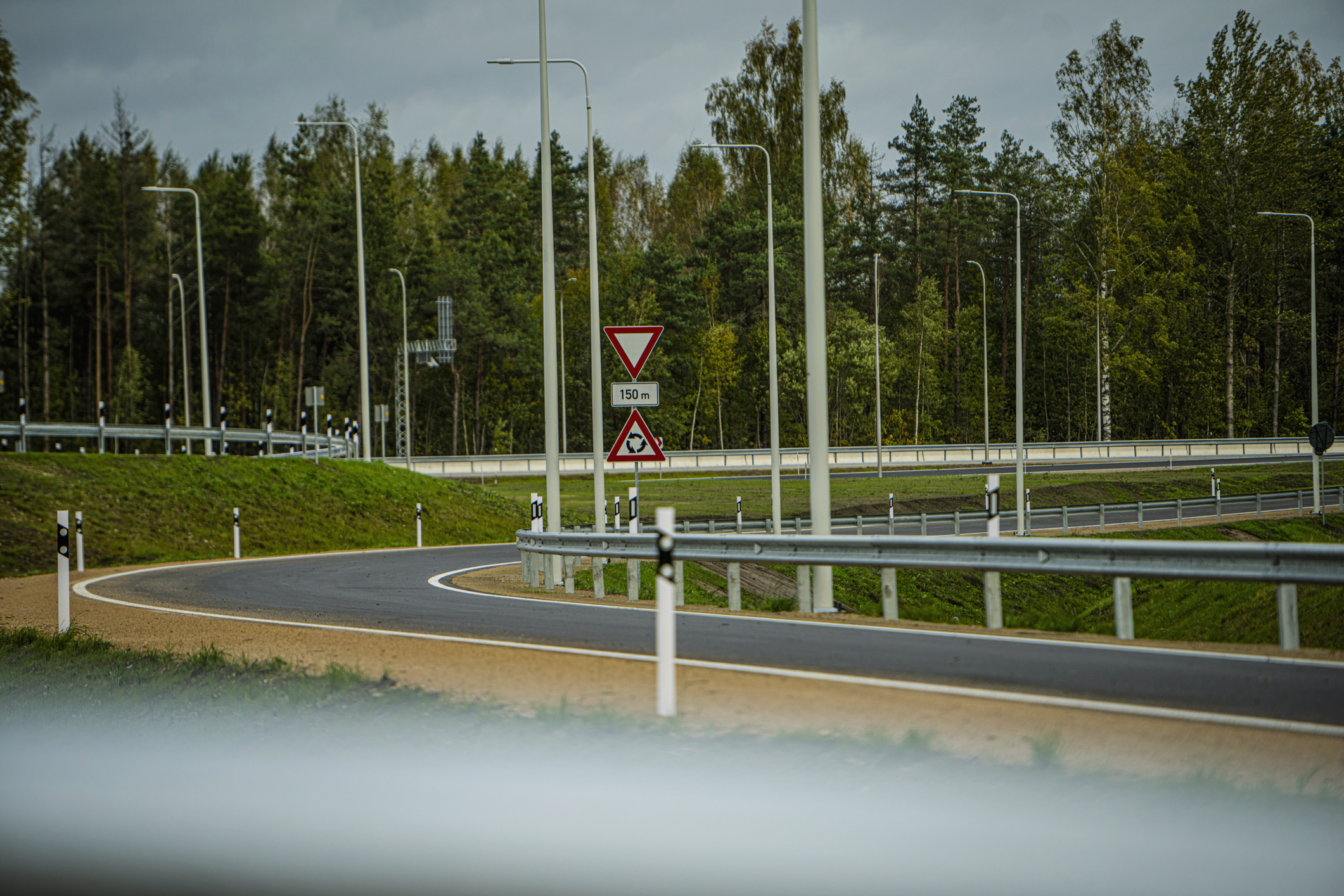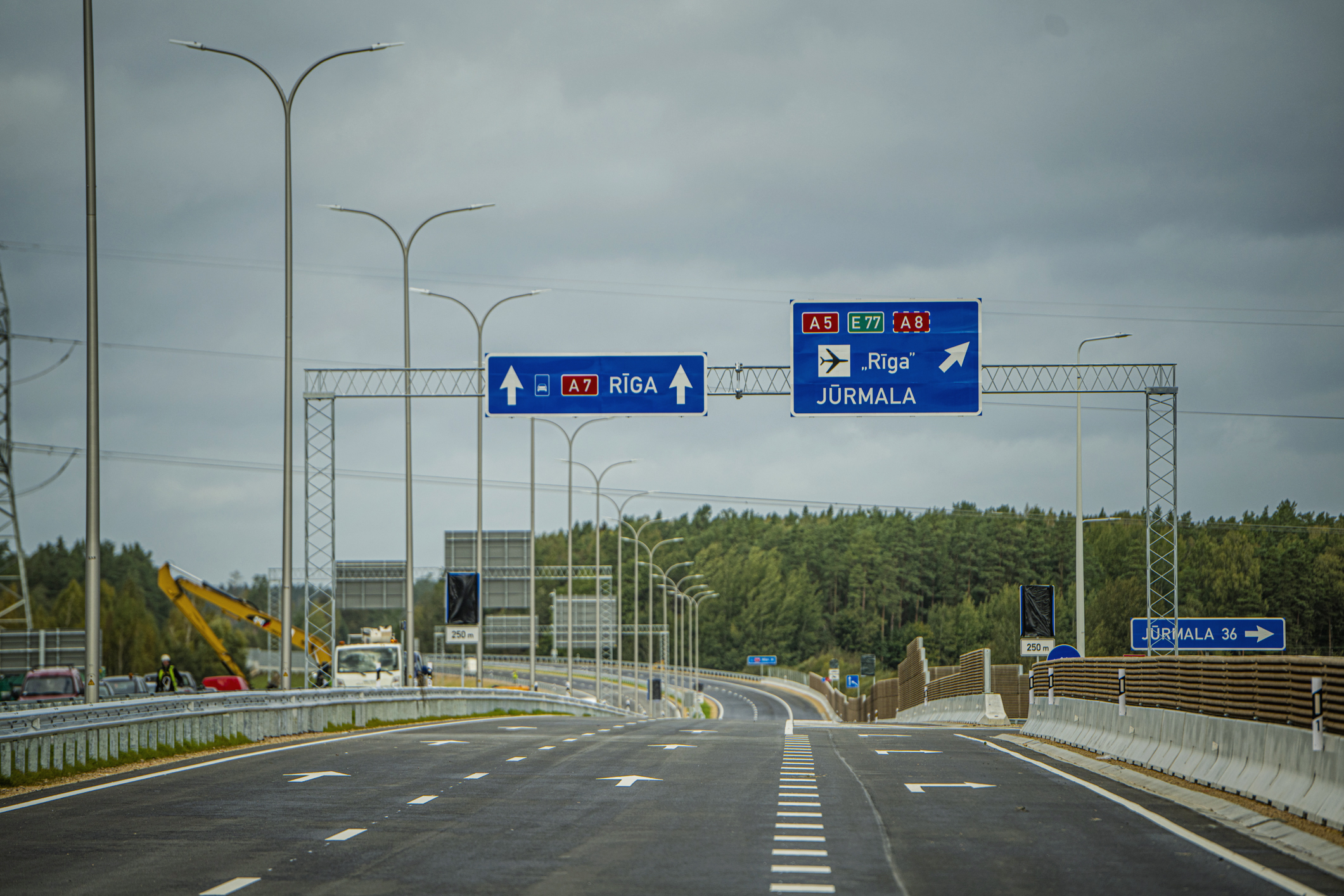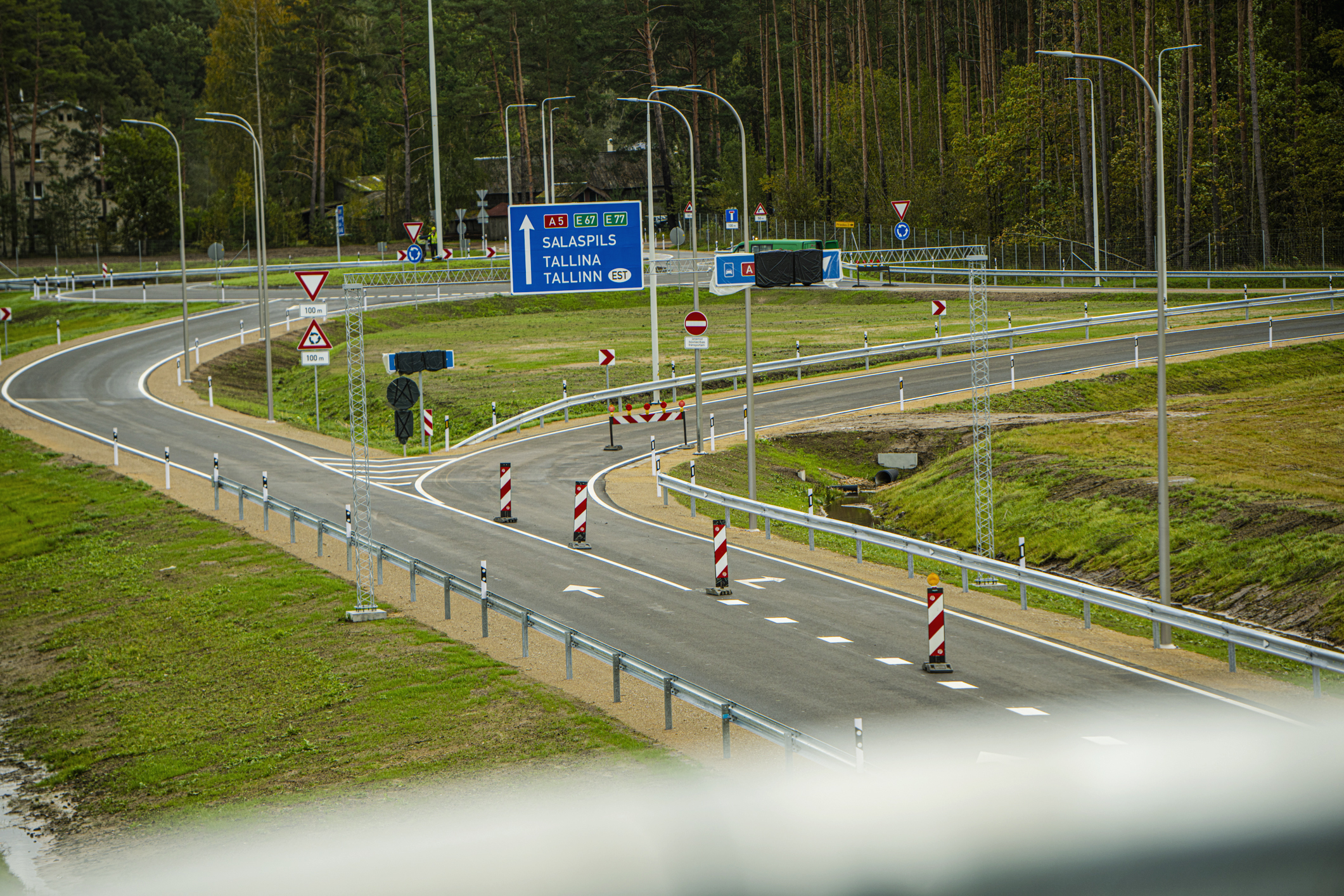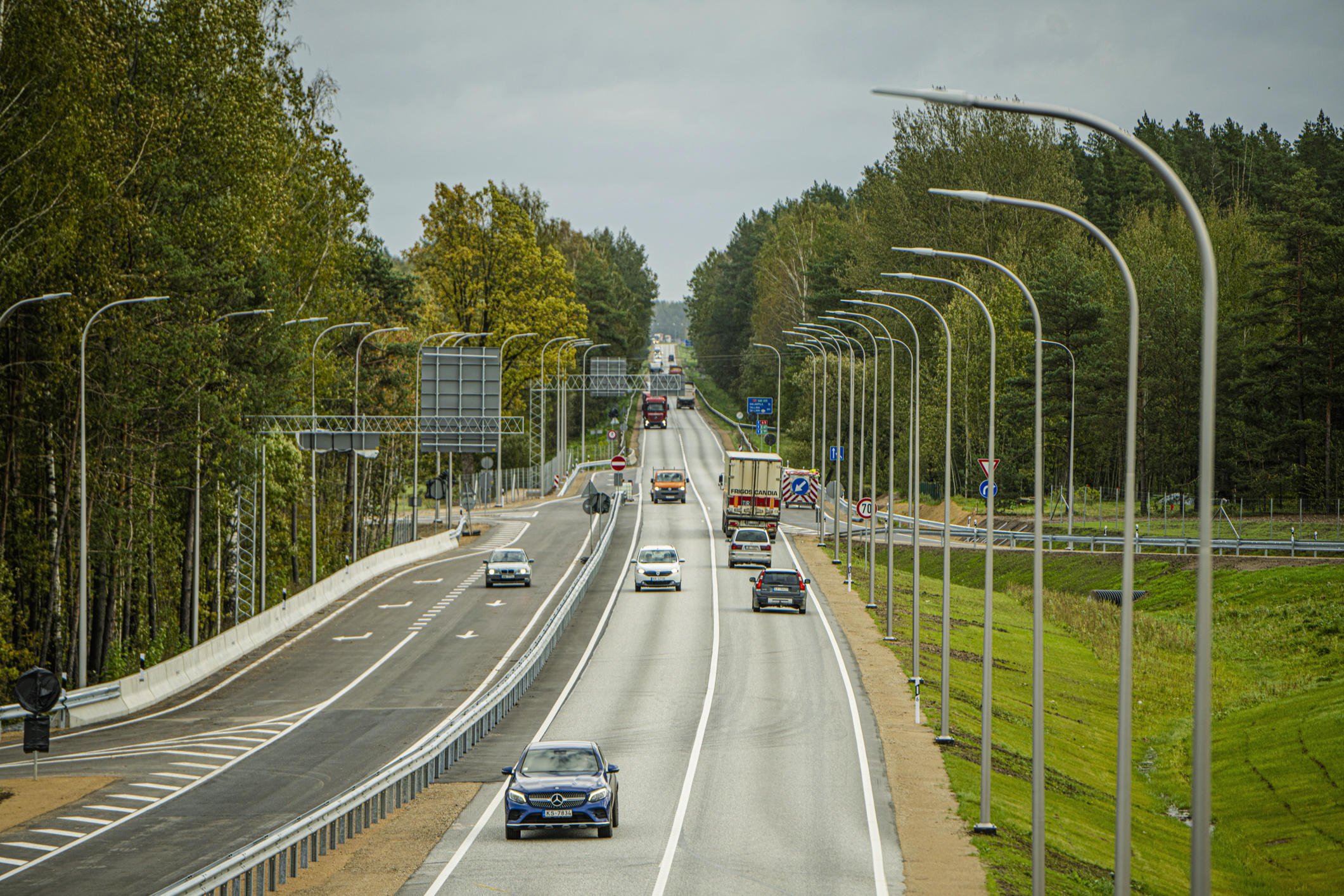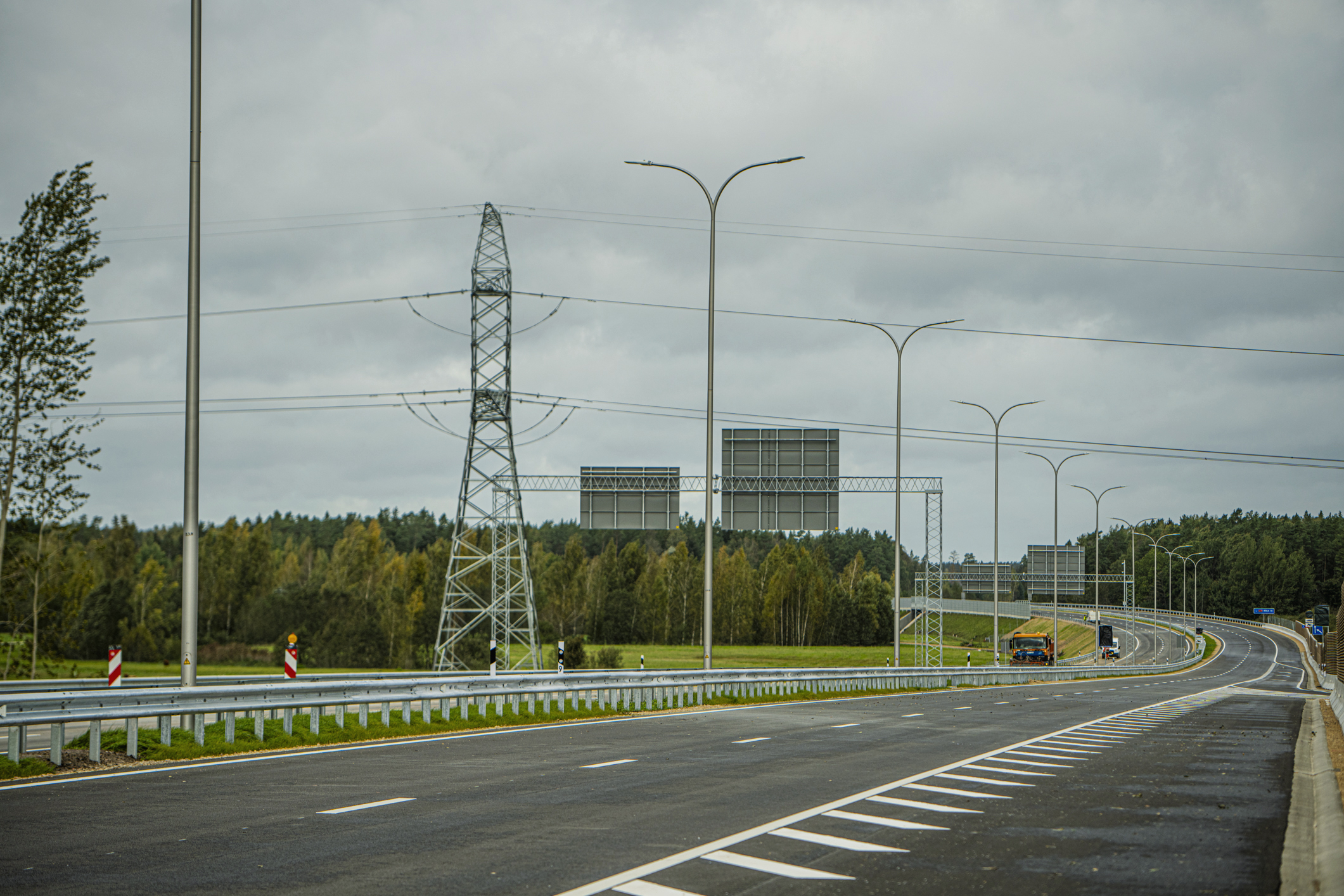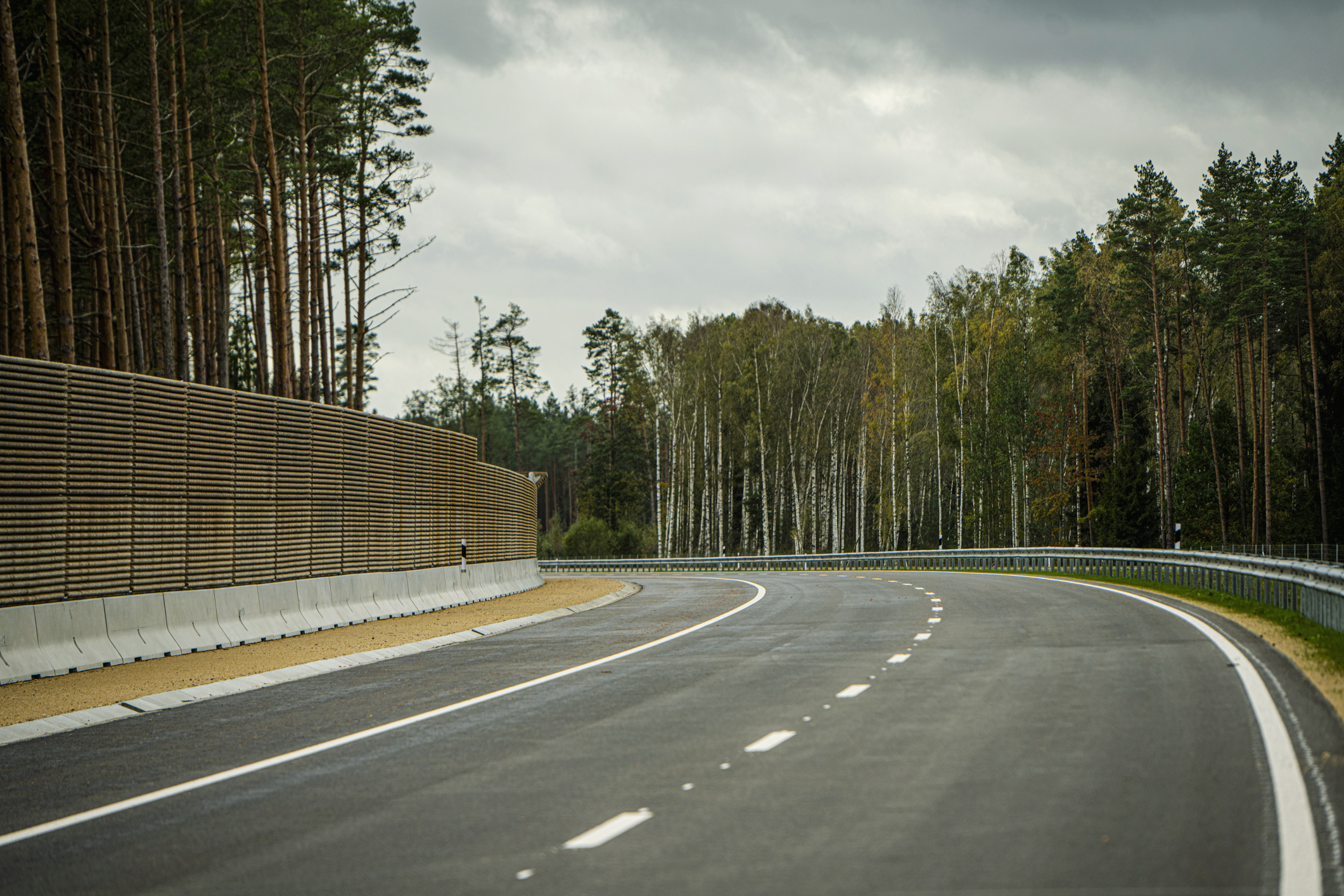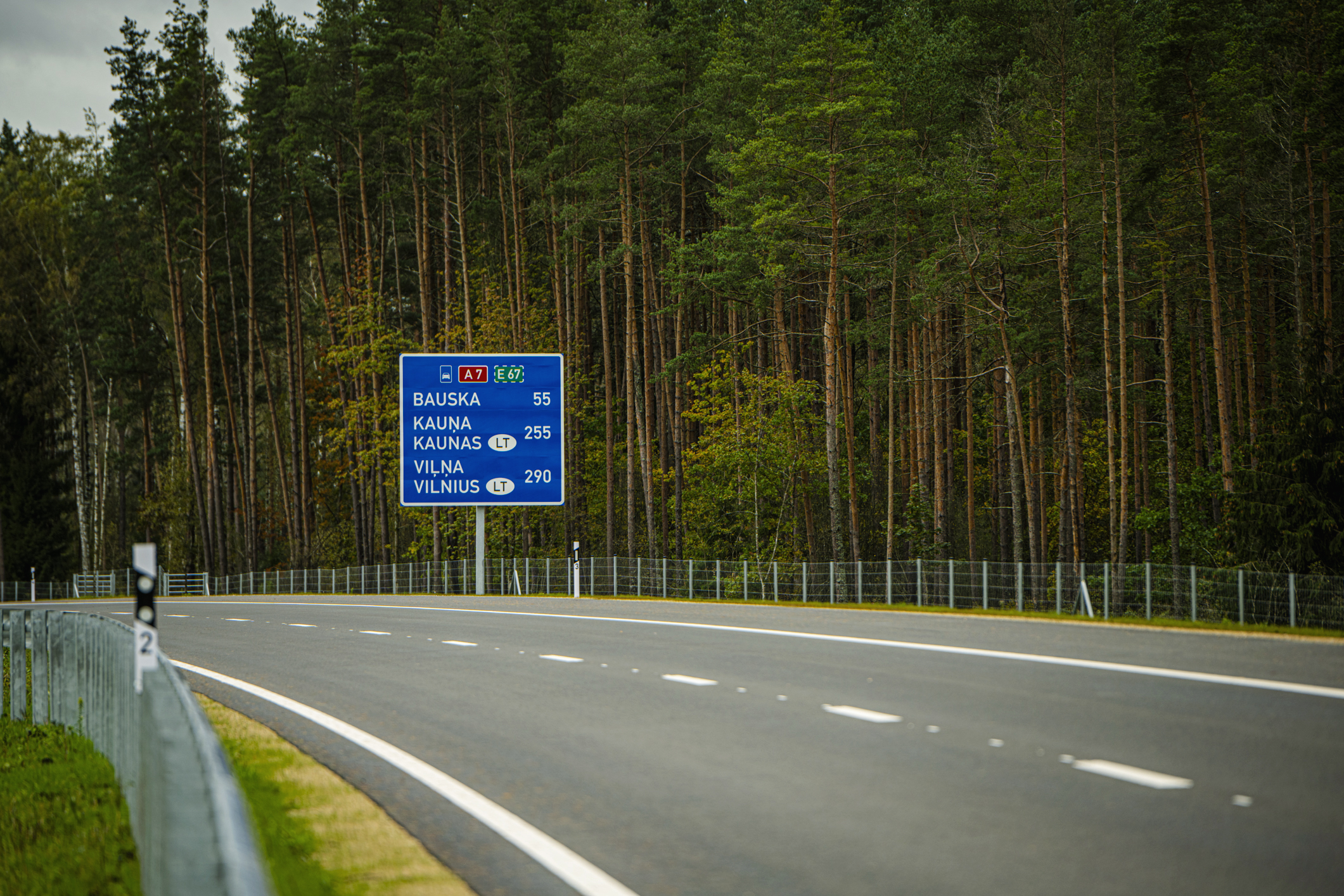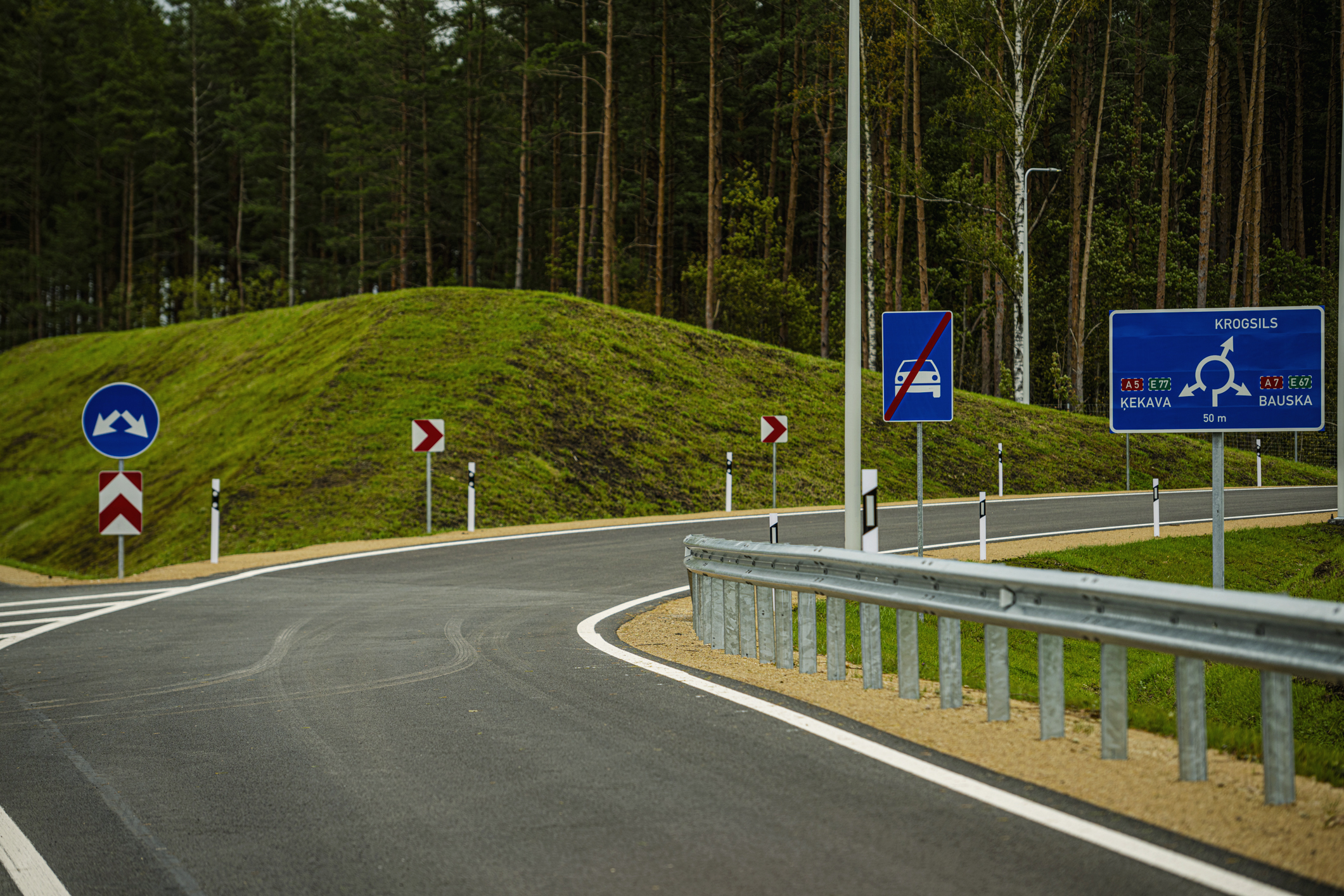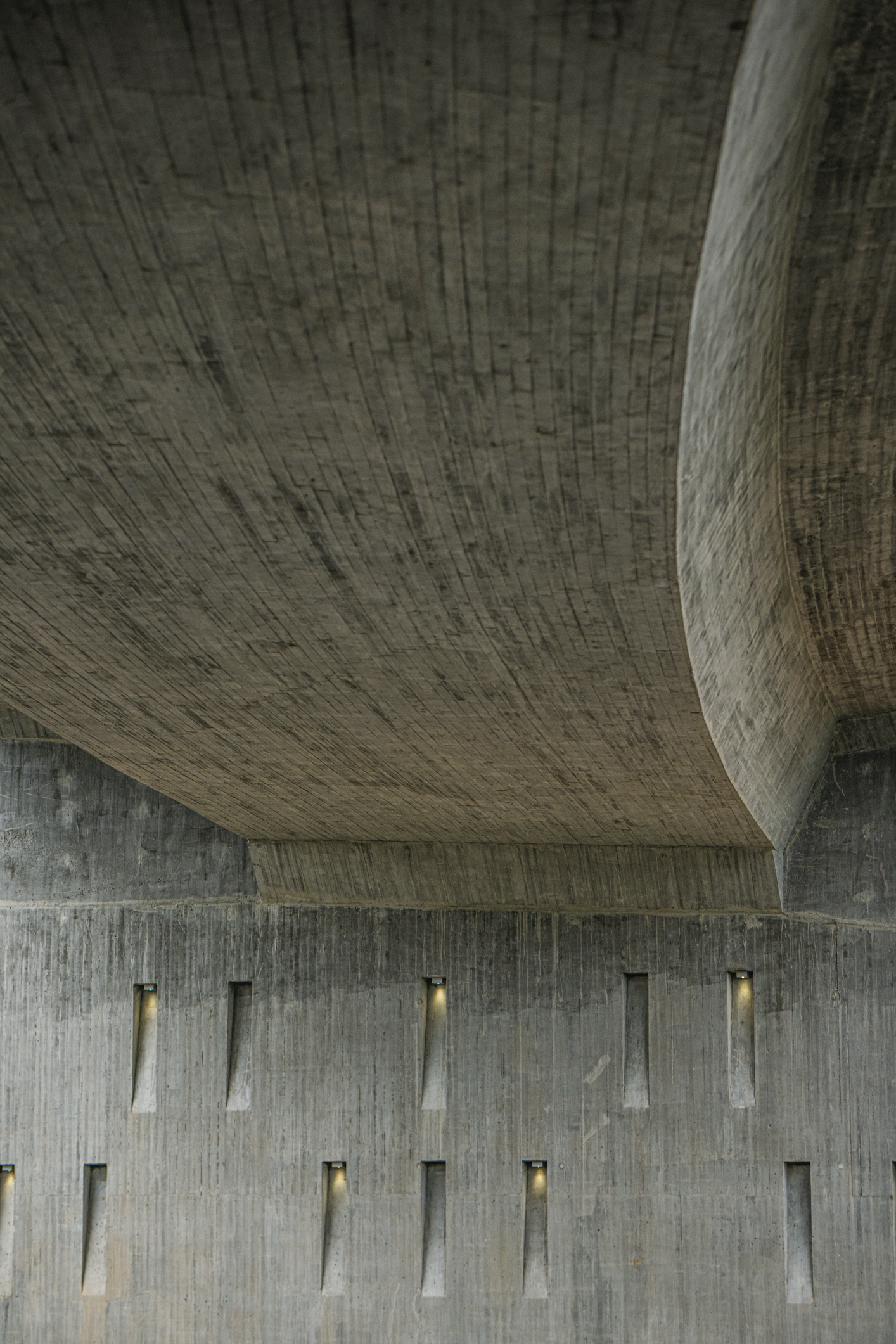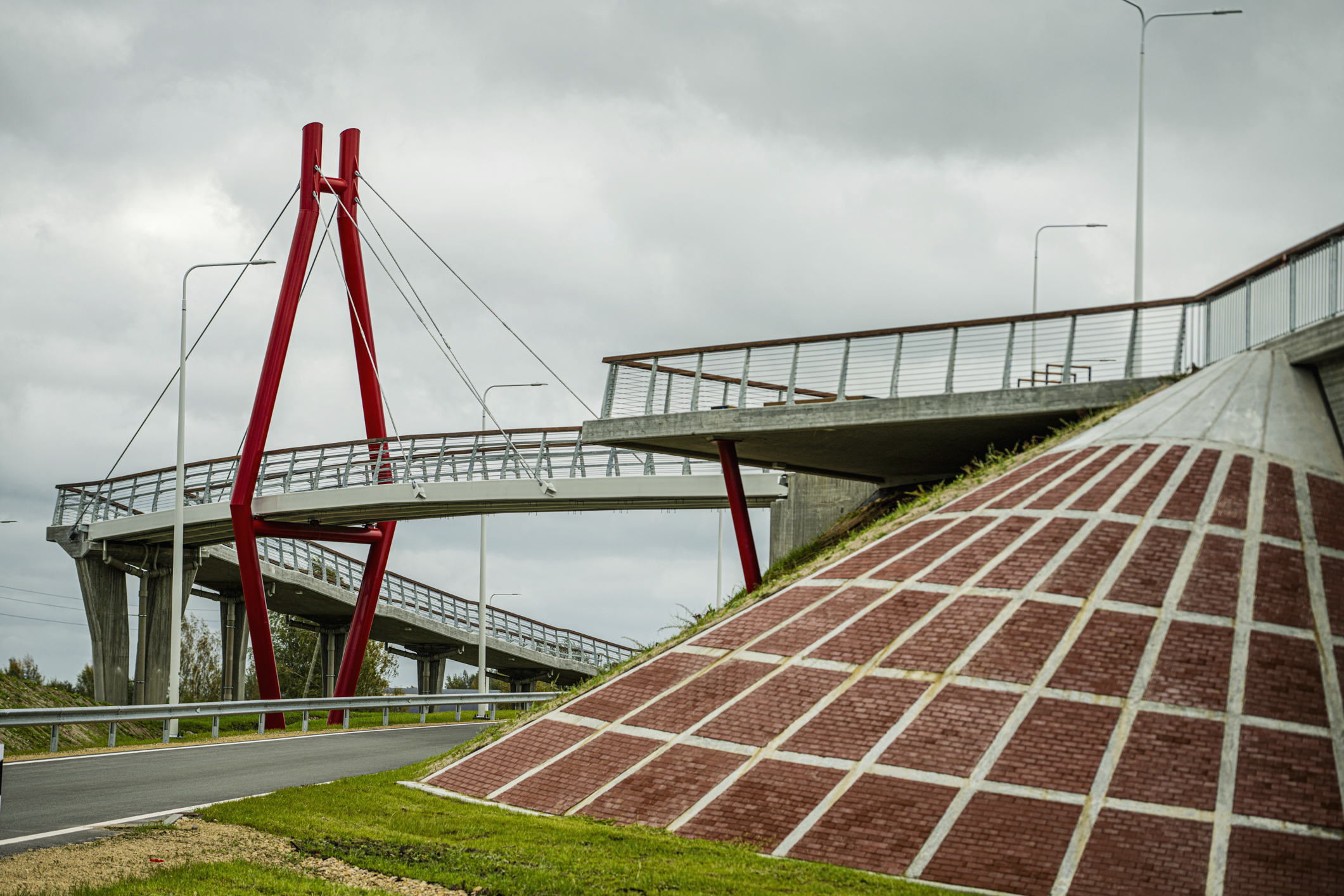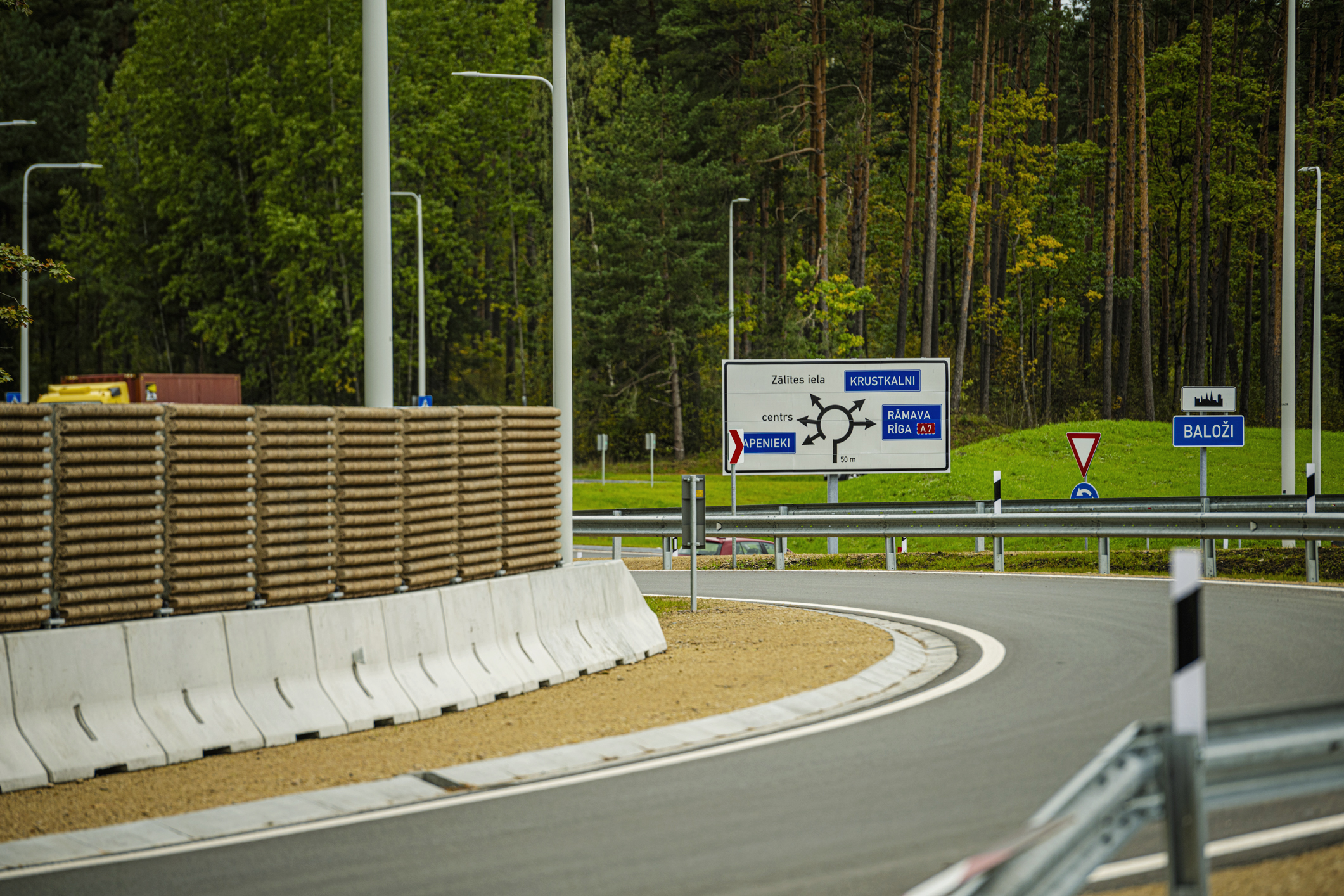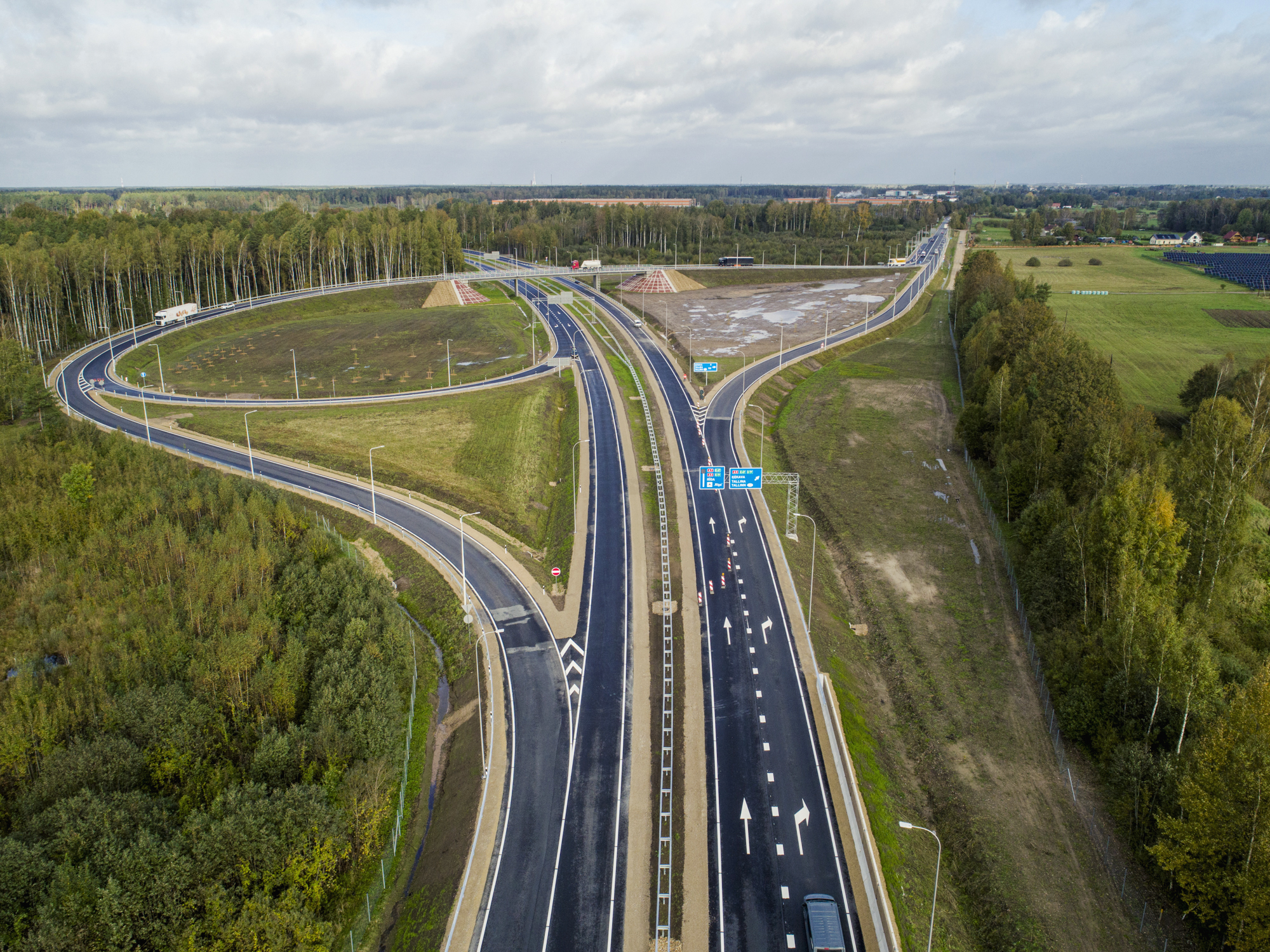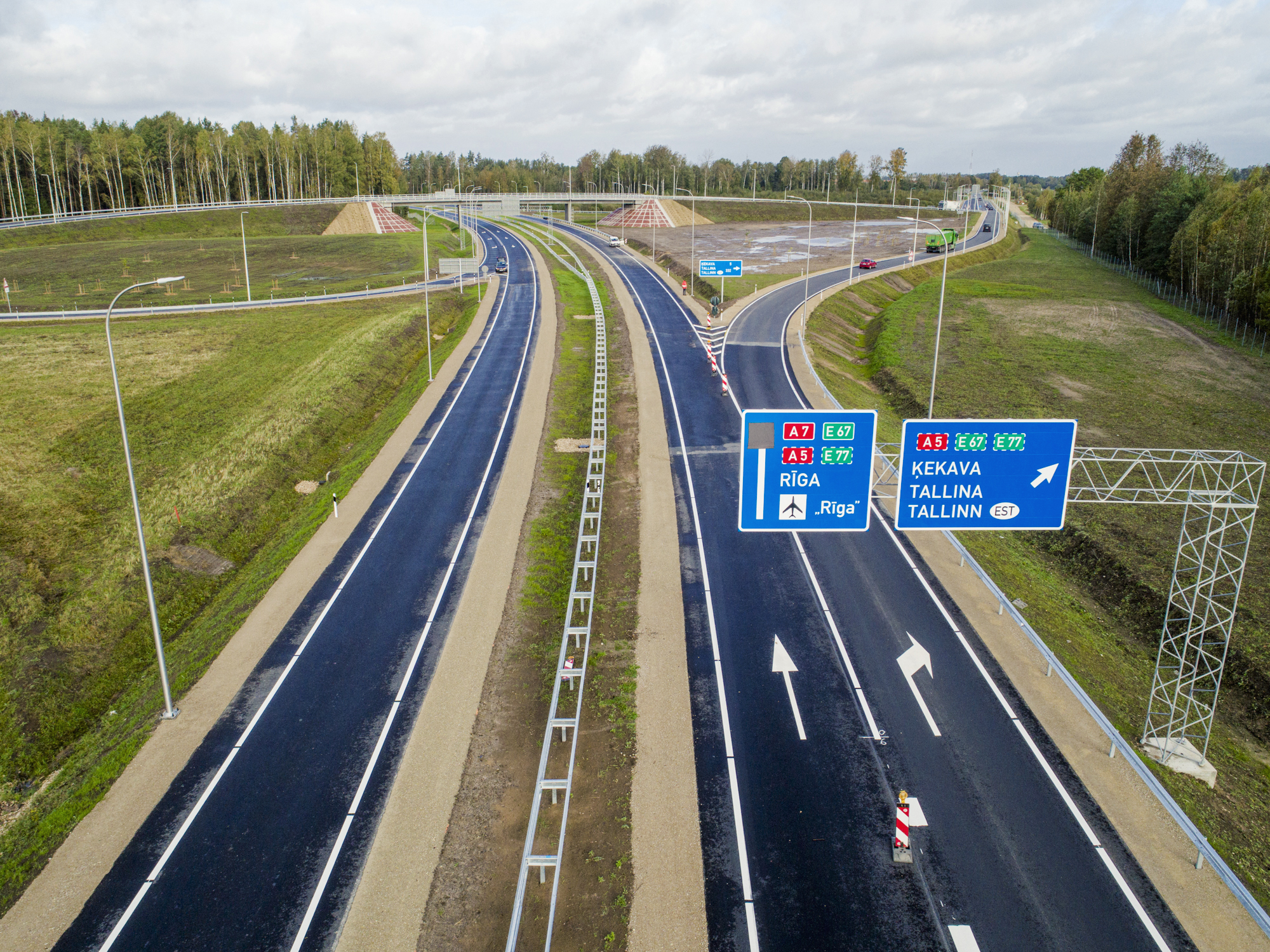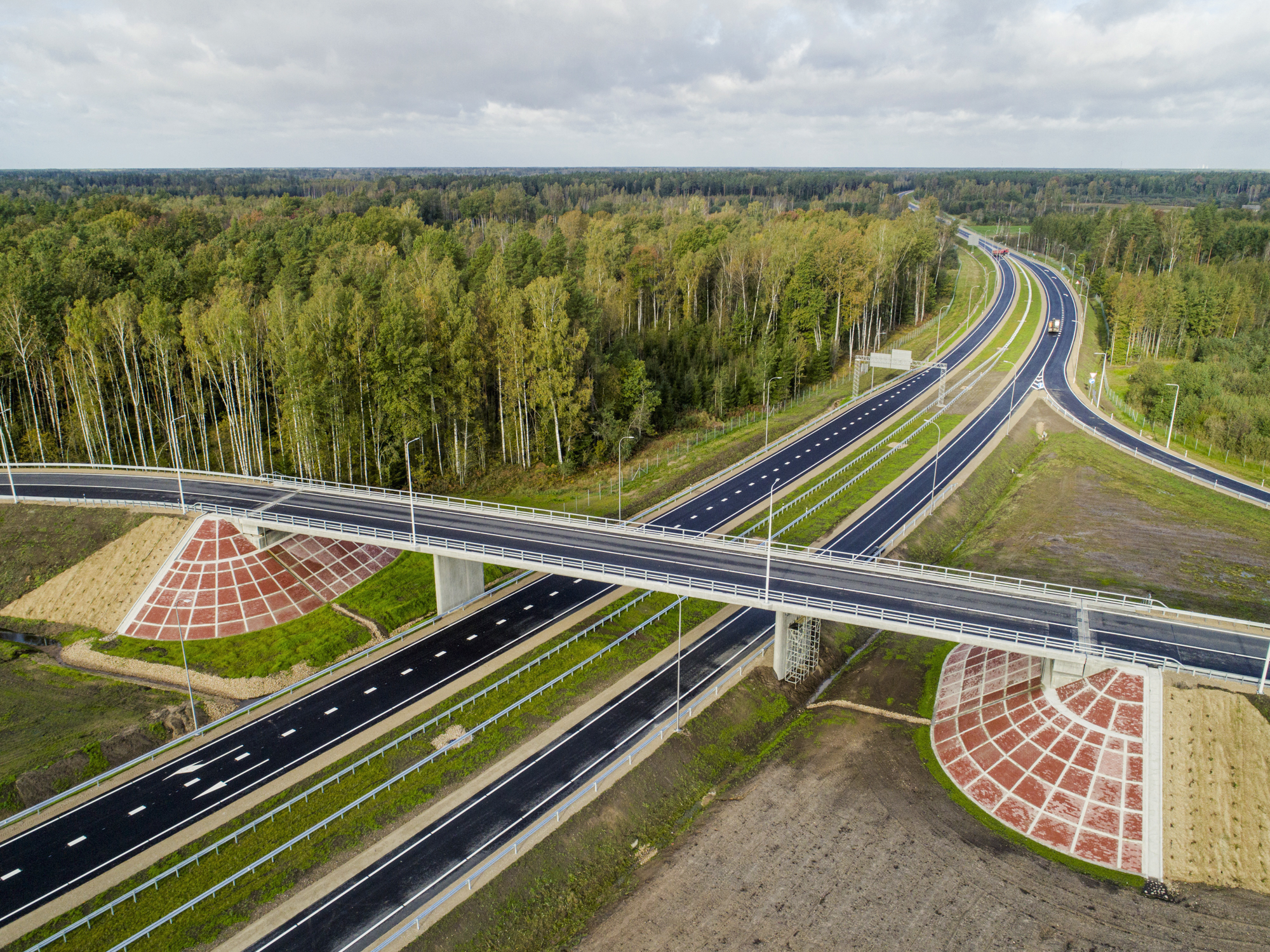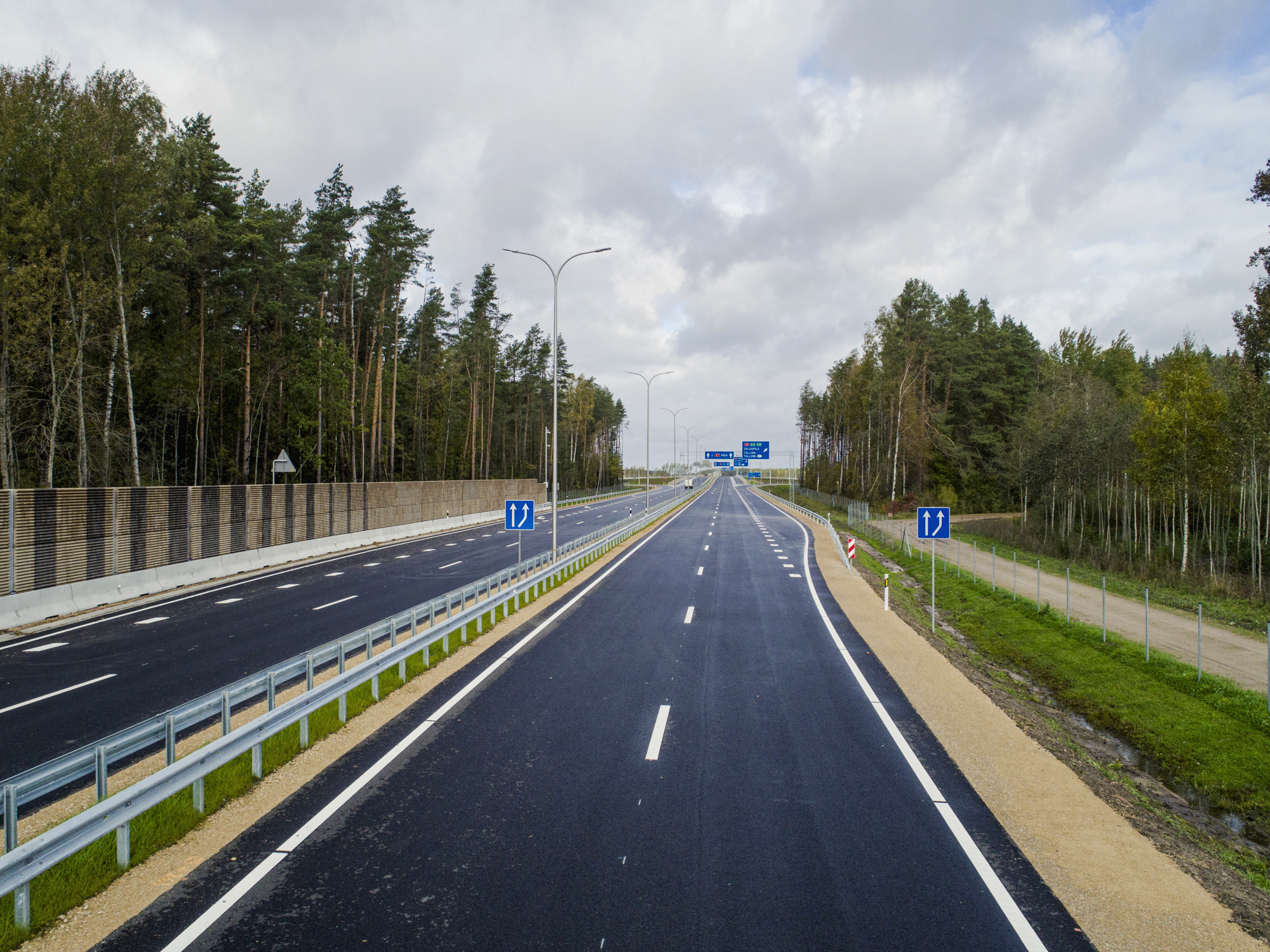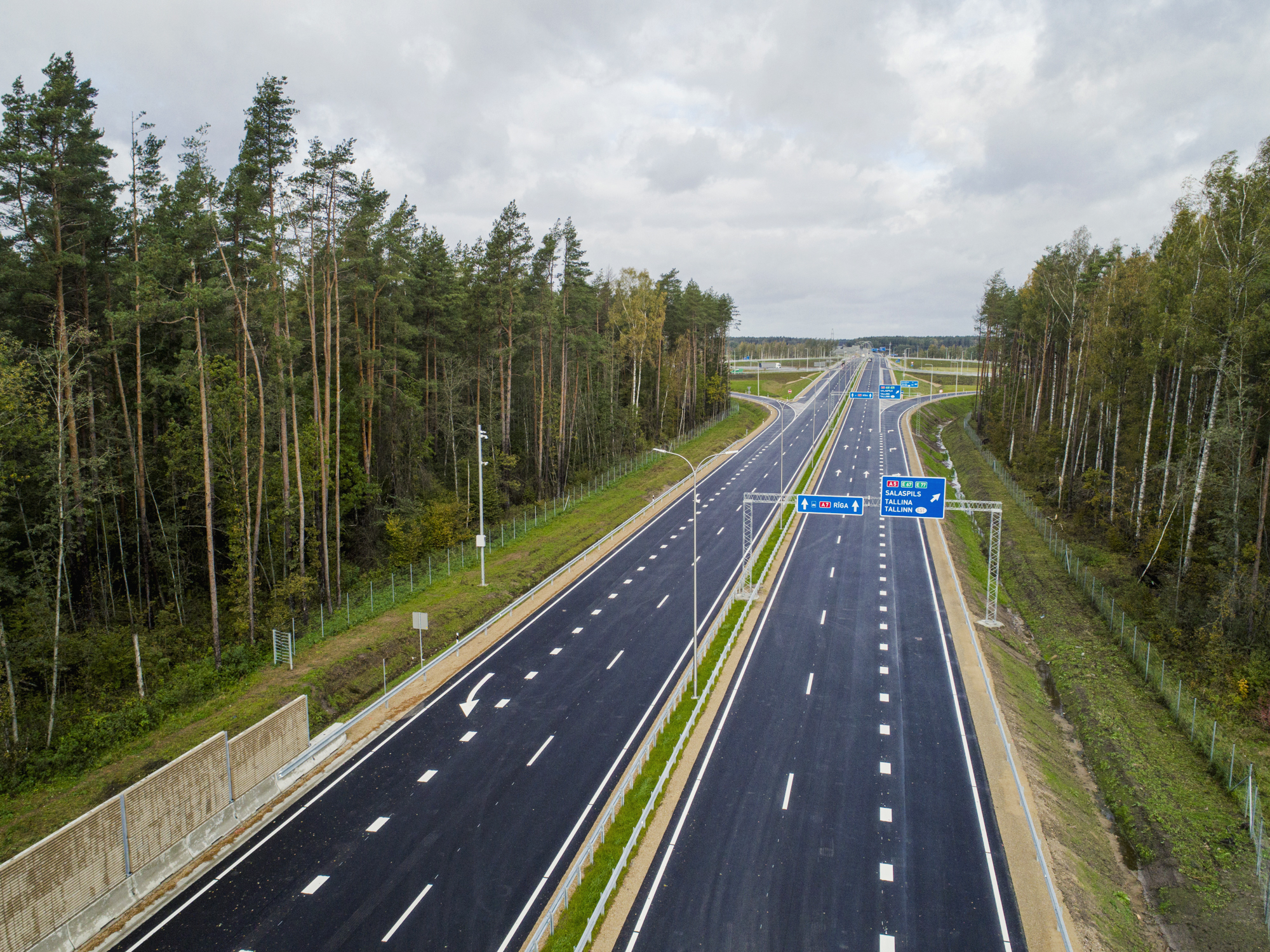Ķekava bypass will be opened to traffic
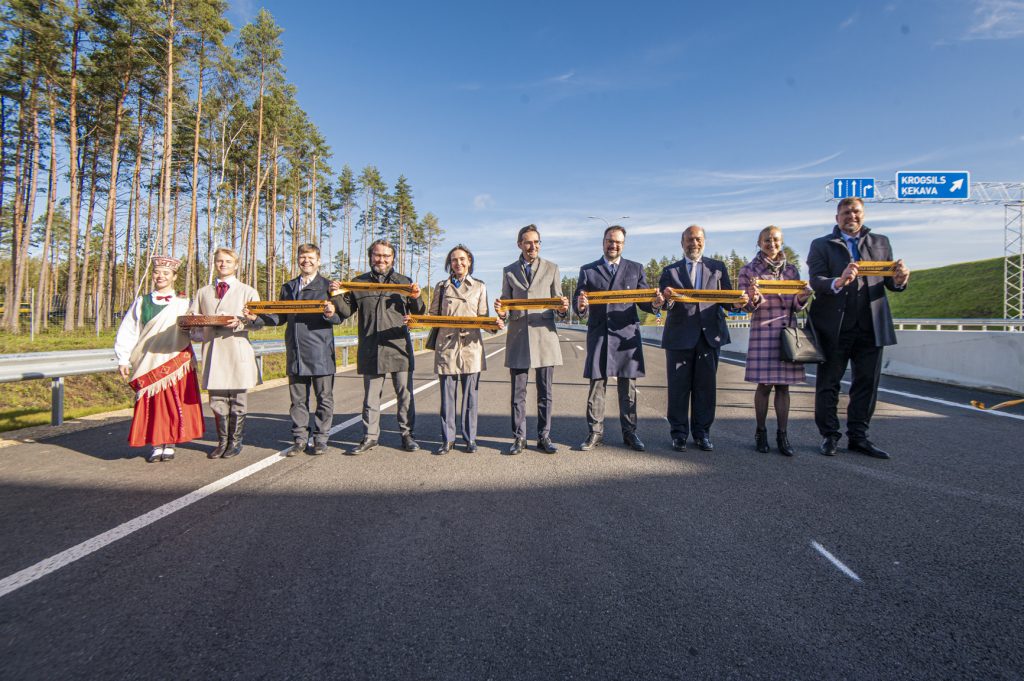
Kaspars Briškens, Minister of Transport, Mārtiņš Lazdovskis, Chairman of the Board of SLLC “Latvian State Roads”, Manuel Ravara Cary, representative of private partner, CEO of TIIC, Mārtiņš Brencis, Deputy Director of Central Finance and Contracting Agency (CFCA), Jeanette Vitasp, Vice President of Northern Investment Bank and Virginija Gecaite, Head of the Baltic Office of the European Investment Bank will open the newly built Ķekava bypass on Friday, October 13, at 11.00.
The opening ceremony will start at 11.00 and it is planned that around 12.00 the new bypass will be open to traffic and available to road users.
Photo from the opening of the Ķekava bypass to traffic. Photographer © Renārs Koris and ©Edmunds Brencis.
The new route of the Bauska highway and the former highway
The new Ķekava bypass will form part of the Bauska highway or the state main road Rīga-Bauska-Lithuanian border (Grenctāle) (A7) in the section from km 7.78 to km 25.0. Thanks to the new road, road users traveling from Lithuania to Rīga via Bauska or vice versa will now have the opportunity to avoid traffic jams in Pierīga, which will save time on the road. It will also significantly improve traffic safety on the Bauska highway in Pierīga, as the part of the new route, which is expected to have the highest traffic intensity, has been built in accordance with all traffic safety requirements for a high-speed road. The construction of this bypass will relieve not only Ķekava, but also Odukalni, Vimbukrogs, Alejas, Krogsils, Lapenieki, Baloži, Katlakalns, Rāmava, Valdlauči, Krustkalni from transit traffic, thus improving both traffic safety and the comfort of living and driving.
The section of the old Bauska highway from Krogsils to Saulgoži in the future will become the state regional road Lapenieki–Ķekava–Ķūgi (P137), it will provide traffic to Ķekava, Vimbukrogs, Odukalni. Considering that this regional road will still have significant traffic, it will be assigned the road routine maintenance class A.
Kekava bypass road. Infrastructure. Photographer © Renars Koris.
High-speed road – what to expect
Part of the newly built Ķekava bypass is the first road in Latvia to be marked with road sign no. 552 “High-speed road”, and among other things this means that:
- only motorcycles, tricycles, quadricycles, cars, trucks and buses are allowed to drive on this road;
- cyclists and pedestrians are prohibited from moving on this road, the infrastructure for these road users is provided along parallel roads;
- it is prohibited to drive in reverse;
- it is prohibited to drive tractors, that in Road Traffic Law are defined as “tractor-type machinery – a self-propelled vehicle on wheels or tracks which moves under its own power and has at least two axles, the principal function of which is traction, which is specially designed to pull, push, carry, or operate certain installations, machines, or trailers, and the use of which for carrying persons or freights by road or drawing vehicles used for the carriage of persons or freights on the road is only a secondary function”.
It has to be noted that it is forbidden for vehicles to stop and stand on the bypass and this is indicated by horizontal markings – the continuous white line.
Maximum driving speed on the high-speed section of the bypass during summer road maintenance period will be up to 120 km/h, during winter maintenance period from October 16 (or in snowy weather conditions) to April 15 it will be 90 km/h.
Infrastructure for cyclists and pedestrians
According to Road Traffic Regulations and road safety requirements, cyclists and pedestrians are prohibited from moving along the section of the road marked with road sign no. 552 “High-speed road”. In order to provide micro-mobility opportunities for the residents of Pierīga, pedestrian and cyclist infrastructure is provided along the parallel roads in the sections where the Ķekava bypass crosses urban areas. A pedestrian and cycling bridge for crossing the new bypass has been built near Katlakalns. The ramp of the pedestrian bridge is designed as a broken line, so that it is more convenient and safer for persons in wheelchairs, cyclists and others to access the bridge with an opportunity to stop and not to slide back along the way.
To get from Rīga to Ķekava, cyclists and pedestrians may use the route along the streets of Rīga, further along the infrastructure for cyclists and pedestrians in Valdlauči and along the newly built micro-mobility infrastructure. Residents of Pierīga also have the opportunity to reach the department store “A7” on foot or by bicycle. Infrastructure for pedestrians and cyclists from the department store “A7” to the border of Rīga will be built after 2025.
Traffic safety and improvements
900 lighting fixtures, 40 km of steel and 4 km of concrete safety barriers have been installed in the route of Ķekava bypass. Noise mitigation solutions such as noise barriers and soil embankments have been implemented along 7.5 km of the road. 27 km of animal fencing have also been installed.
The route of Ķekava bypass will be monitored 24 hours per day thanks to more than 20 video surveillance cameras, two weather stations, traffic counting sensors, as well as data system analysing the traffic flow.
Innovative materials and technologies have been used in the construction of the bypass. For example, culverts, water pipes and lighting poles made of glass fibre have been used, recycled PET bottles have been used in the production of bridge barriers, and sound absorbers made of wood fibre are used in noise barriers.
144 pine trees of different varieties, 195 birch trees, 140 rowan trees, 50 lindens, 21 oaks and more than 1000 different varieties of shrubs have been planted for the greening of Ķekava bypass.
Project history
Ķekava bypass is the first major PPP project in road construction in the Baltics to be implemented according to Design-Build-Finance-Operate model. This is also the first project in the Baltics for which EUROSTAT has issued the statement that all project assets are registered in the balance sheet of the private partner without creating negative influence on the state consolidated budget and state debt.
Project feasibility study was commenced already back in 2006. In 2009 the Law on Public-Private Partnership was adopted in Latvia, while in 2014 the land acquisition for the construction of the bypass was commenced.
The Cabinet of Ministers issued its Order no. 172 “On the commencement of Public-Private Partnership procurement procedure for the state main road project “E67 / A7 Ķekava Bypass” on March 10, 2016.
The procurement for Public-Private Partnership was commenced in December 2018, and the procedure included qualification and selection stages. Five tenders were received in the qualification stage, out of which four met the defined requirements. All four tenderers were invited to participate in the selection state, i.e. to submit their initial technical and financial tender. The initial tender was submitted by two tenderers, who were also invited to participate in negotiations with the contracting authority in order to improve their tenders, while maintaining their compliance with the requirements of tender dossier. After negotiations the tenderers prepared their best and final offers.
The most important criterion in the evaluation of submitted bids was the price. Its share in the evaluation was 80%, while the remaining 20% covered the compliance with various additional criteria, such as the duration of works, traffic organisation during the works, organisation of routine maintenance, quality and risk management and others.
Out of two tenderers who submitted their best and final offers, the offer of Kekava ABT was selected as economically most advantageous offer, which also had the lowest price. This Association of Persons with the share of 80% of total investment is controlled by an investment fund TIIC 2 (SCA) SICAR, registered in Luxembourg, which specializes in large-scale transport and public investment projects in Europe and around the world. This fund has subsidiaries in Luxembourg, Portugal and France. Few examples of implemented projects are: motorway between the cities of Gerediaga and Elorrio in northern Spain (implemented according to the same principles as Ķekava Bypass), section Ecalles-Alix of the road A150 in northern France.
On August 11, 2020, the Cabinet of Ministers made decision to undertake long-term commitments for the implementation of the project, thus allocating the necessary funding.
On July 8, 2021, a repeated statement from EUROSTAT statement was received certifying that this PPP contract corresponded to the off-balance sheet accounting from the point of view of the total liabilities of the Republic of Latvia and is in line with the European System of Accounts (ESA 2010).
The PPP contract for the construction of the bypass was signed on July 16, 2021, by Ligita Austrupa, Acting State Secretary of the Ministry of Transport and Deputy State Secretary of the Ministry of Transport, Mārtiņš Lazdovskis, Chairman of the Board, and Gundars Kains, Member of the Board of State Limited Liability Company “Latvian State Roads”, and Armands Sviķis and Juris Frīdmanis, Members of the Board of the Association of Persons Ķekava ABT. The signing ceremony was attended also by Hugo Espinheira Silveira, Chairman of the Board of Association of Persons Ķekava ABT and TIIC partner, André Küüsvek, President and CEO of Nordic Investment Bank (NIB) and Marina Ismaila, representative of the European Investment Bank. The public partner in this project is the state of Latvia in the person of the Ministry of Transport. On behalf of the Ministry the project is implemented by State Limited Liability Company “Latvian State Roads”.
Costs
The construction cost of one lane kilometre of Ķekava bypass, including engineering structures (bridges, overpasses, tunnels, noise barriers, ramps, etc.), are ~1.23 million EUR, excluding VAT. For comparison, the construction costs of 1 lane kilometre of Saulkrasti bypass (A1) including engineering structures in 2007 were ~1.25 million EUR.
In accordance with tender results of procurement procedure of Ķekava Bypass PPP project the total contract value amounted up to EUR 265 729 046.65 excluding VAT. However, at the moment of signing the PPP contract the total amount was recalculated in accordance with the procedure foreseen in tender dossier, including the Euribor and interest rate swap at the time of signing the PPP contract. As a result, the gross contract value decreased by 15 Million EUR and was determined in the amount of 250 132 500 EUR excluding VAT. This amount will be divided into quarterly payments and paid to the private partner in the period of 20 years after the Ķekava Bypass becomes available. The annual amount paid by the state to the private partner will be 12.53 Million EUR excluding VAT.
During the design and construction stage the state paid nothing. All investments were made by the private partner. When the construction was fully completed, its quality was recognized as compliant with regulatory requirements and the infrastructure was made available to the public, the state had the duty to start paying accessibility fees to the private partner, gradually reimbursing the private partner in full in the period of 20 years.
The availability fee covers the costs of the private partner for design, construction, routine maintenance and periodic maintenance in the period of 20 years after the completion of the construction works, as well as, the costs of borrowed funds, insurance, administration, etc. The total amount of the availability fee specified in the PPP contract is the maximum possible amount that the private partner will be able to receive during the period of the PPP contract. The accessibility fee may be reduced if the Ķekava bypass or any its section is not accessible or is partially accessible to traffic, i.e. for every hour and for each kilometre of the lane not fully accessible, except when driving conditions are affected by third parties (e.g. a traffic accident).
Land acquisition has to be included in project costs. For the implementation of the project, the Ministry of Transport on behalf of the state purchased 218 land plots with the total area of 132 ha, including:
• Forest lands: 56 plots (26%);
• Agricultural lands: 56 plots (26%);
• Building lands: 48 plots (22%);
• Production territories: 19 plots (9 %);
• Land under roads: 39 plots (18%).
Total actual costs of land acquisition amount up to 4.6 Million EUR.
Partnership contract period
The total period of the partnership contract is up to 23 years. Of these, the construction period is no more than three years for design and construction. The availability period during which the private partner fully ensures the daily maintenance of the constructed road and the renewal of the road surface is not more than 20 years.
In the case of Ķekava bypass the private partner will be fully responsible for all maintenance works for the entire duration of the PPP contract, including cleaning and spreading of roadways, grass cutting, destruction of hogweed, lighting, electricity for lighting and other traffic management equipment, maintenance of public transport stops, renewal of horizontal road markings, etc. The private partner will guarantee that for another 5 years after the expiry of the PPP contract, Ķekava bypass will remain in such quality that it will require only daily maintenance works, but no capital investments.
Additional information about private partner: https://www.tiic.pt/Overview/About-us
Information prepared by Communications Department of State Limited Liability Company “Latvian State Roads”.
On the image above: ceremonially cutting the ribbon. From left: Deputy Director of the Central Finance and Contracts Agency (CFLA) Mārtiņš Brencis, VSIA Latvian State Roads (LVC) board member Verners Akimovs, Vice President of Ziemelu Investicių banka Šanete Vitasp, VSIA Latvijas Statest ceļi (LVC) ) chairman of the board Mārtiņš Lazdovskis, minister of transport Kaspars Briškens, head of TIIC Manuel Ravara Cary, head of the Baltic office of the European Investment Bank Virginija Gecaite, director general of Kekava ABT Juris Fridmanis.
